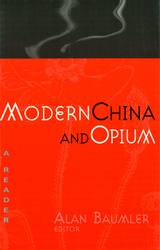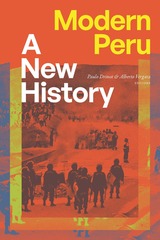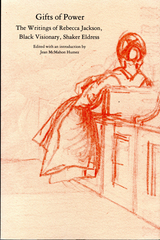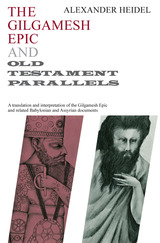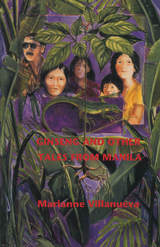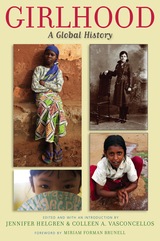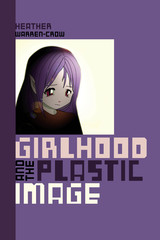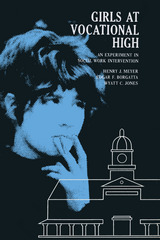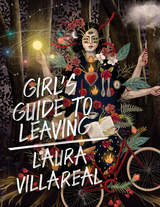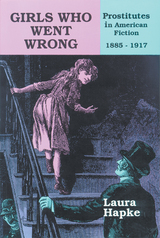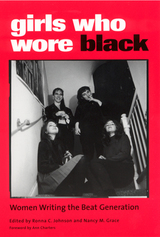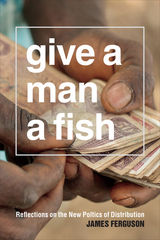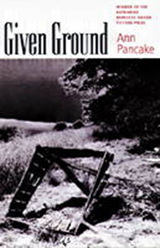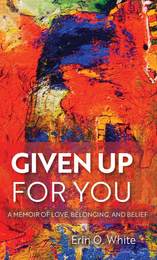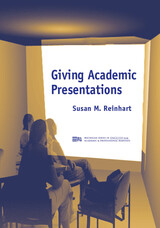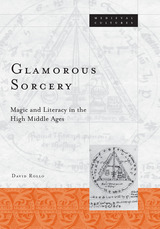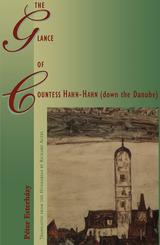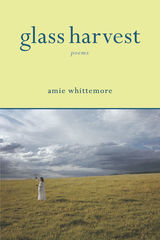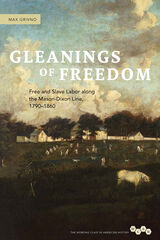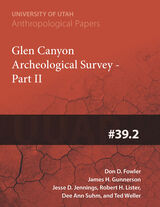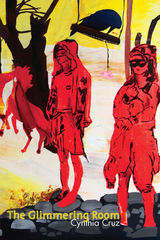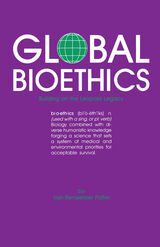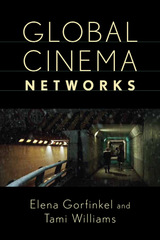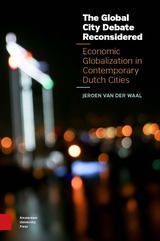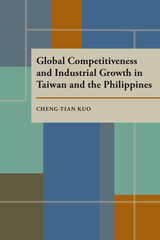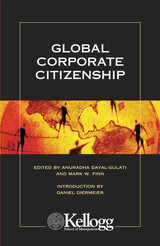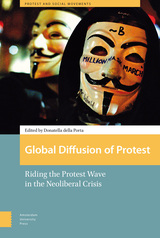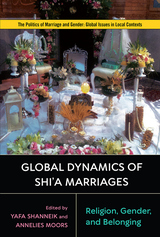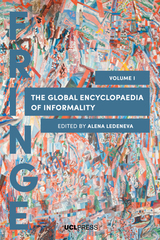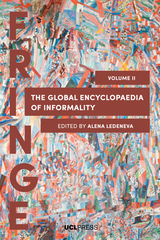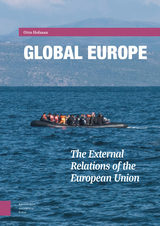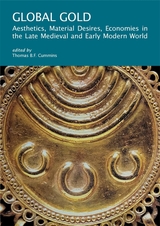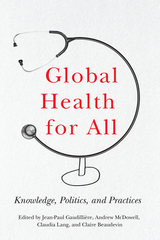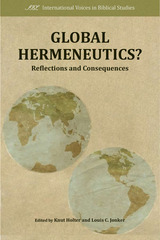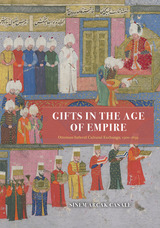 Gifts in the Age of Empire: Ottoman-Safavid Cultural Exchange, 1500–1639
Sinem Arcak Casale
University of Chicago Press, 2023 Explores the Safavid and Ottoman empires through the lens of gifts.
When the Safavid dynasty, founded in 1501, built a state that championed Iranian identity and Twelver Shi'ism, it prompted the more established Ottoman Empire to align itself definitively with Sunni legalism. The political, religious, and military conflicts that arose have since been widely studied, but little attention has been paid to their diplomatic relationship. Sinem Arcak Casale here sets out to explore these two major Muslim empires through a surprising lens: gifts. Countless treasures—such as intricate carpets, gilded silver cups, and ivory-tusk knives—flowed from the Safavid to the Ottoman Empire throughout the sixteenth century. While only a handful now survive, records of these gifts exist in court chronicles, treasury records, poems, epistolary documents, ambassadorial reports, and travel narratives. Tracing this elaborate archive, Casale treats gifts as representative of the complicated Ottoman-Safavid coexistence, demonstrating how their rivalry was shaped as much by culture and aesthetics as it was by religious or military conflict. Gifts in the Age of Empire explores how gifts were no mere accessories to diplomacy but functioned as a mechanism of competitive interaction between these early modern Muslim courts.
Gifts of Power: The Writings of Rebecca Jackson, Black Visionary, Shaker Eldress
Jean M. Humez
University of Massachusetts Press, 1981 A free black woman in antebellum America, Rebecca Cox Jackson (1795-1871) was an independent itinerant preacher and religious visionary who founded a Shaker community in Philadelphia that survived her death by twenty-five years. Gifts of powers containers her complete extant writings, covering the period 1830 to 1864.
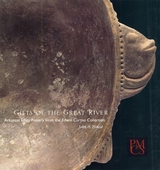 Gifts of the Great River: Arkansas Effigy Pottery from the Edwin Curtiss Collection
John H. House
Harvard University Press, 2005 In 1879 Edwin Curtiss set out for the wild St. Francis River region of northeastern Arkansas to collect archaeological specimens for the Peabody Museum. By the time Curtiss completed his fifty-six days of Arkansas fieldwork, he had sent nearly 1,000 pottery vessels to Cambridge and had put the Peabody on the map as the repository of one of the world's finest collections of Mississippian artifacts. John House brings us a lively account of the work of this nineteenth-century fieldworker, the Native culture he explored, and the rich legacies left by both. The result is a vivid re-creation of the world of Indian peoples in the Mississippi River lowlands in the last centuries before European contact. The volume's focus is Curtiss's collection of charming and expressive effigy vessels: earthenware bowls and bottles that incorporate forms of fish, birds, mammals, amphibians, and humans, including the Peabody's famous red-and-white head vase.
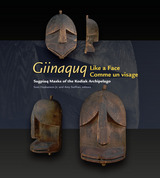 Giinaquq: Like a Face: Suqpiaq Masks of the Kodiak Archipelago
Edited by Sven D. Haakanson, Jr. and Amy F. Steffian
University of Alaska Press, 2009 Masks are an ancient tradition of the Alutiiq people on the southern coast of Alaska. Alutiiq artists carved the masks from wood or bark into images of ancestors, animal spirits, and other mythological forces; these extraordinary creations have been an essential tool for communicating with the spirit world and have played an important role in dances and hunting festivities for centuries. Giinaquq: Like a Face presents thirty-three full-color images of these fantastic and eye-catching masks, which have been preserved for more than a century as part of the Pinart Collection in a small French museum.
These masks, collected in 1871 by a young French scholar of indigenous cultures, are presented for the first time in their complete cultural context, celebrating the rich history of the Alutiiq people and their artistic traditions. In addition to the stunning photographs, Giinaquq—Like a Face includes an informative text in three languages—English, Alutiiq, and French—in order to provide a cross-cultural understanding of the masks’ traditional meaning and use. This captivating and revealing book will be an essential resource for anyone interested in indigenous art and culture.
Gila Monster: Facts & Folklore Of Americas Aztec Lizard
David E. Brown
University of Utah Press, 1999 The Gila Monster spends 99% of its life underground, making encounters with this lizard extremely rare. Sightings are infrequent even for the biologists who study them. When one does stumble upon a Gila Monster, however, this slow-moving lizard is not easily forgotten. Advertised by orange-and-black coloration and followed by stories of venomous power, the Gila Monster carries a mystique like that of few other animals. In this volume, authors David Brown and Neil Carmony dig out the tall tales, dispel the myths, and reveal the lizard’s true character. Through a collection of biological and historical facts mixed with entertaining stories, they have created an illuminating account of America’s largest and only poisonous lizard. Written in an engaging style, The Gila Monster is a fun and educational read for all who are intrigued by the Southwest and its most mysterious denizen.
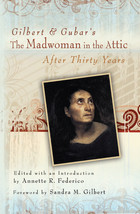 Gilbert and Gubar's The Madwoman in the Attic after Thirty Years
Edited by Annette R. Federico, Foreward by Sandra M. Gilbert
University of Missouri Press, 2011 When it was published in 1979, Sandra M. Gilbert and Susan Gubar's The Madwoman in the Attic: The Woman Writer and the Nineteenth-Century Literary Imaginationwas hailed as a pathbreaking work of criticism, changing the way future scholars would read Jane Austen, Mary Shelley, the Brontës, George Eliot, and Emily Dickinson. This thirtieth-anniversary collection adds both valuable reassessments and new readings and analyses inspired by Gilbert and Gubar’s approach. It includes work by established and up-and-coming scholars, as well as retrospective accounts of the ways in which The Madwoman in the Attic has influenced teaching, feminist activism, and the lives of women in academia. These contributions represent both the diversity of today’s feminist criticism and the tremendous expansion of the nineteenth-century canon. The authors take as their subjects specific nineteenth- and twentieth-century women writers, the state of feminist theory and pedagogy, genre studies, film, race, and postcolonialism, with approaches ranging from ecofeminism to psychoanalysis. And although each essay opens Madwoman to a different page, all provocatively circle back—with admiration and respect, objections and challenges, questions and arguments—to Gilbert and Gubar's groundbreaking work. The essays are as diverse as they are provocative. Susan Fraiman describes how Madwoman opened the canon, politicized critical practice, and challenged compulsory heterosexuality, while Marlene Tromp tells how it elegantly embodied many concerns central to second-wave feminism. Other chapters consider Madwoman’s impact on Milton studies, on cinematic adaptations of Wuthering Heights, and on reassessments of Ann Radcliffe as one of the book’s suppressed foremothers. In the thirty years since its publication, The Madwoman in the Attic has potently informed literary criticism of women’s writing: its strategic analyses of canonical works and its insights into the interconnections between social environment and human creativity have been absorbed by contemporary critical practices. These essays constitute substantive interventions into established debates and ongoing questions among scholars concerned with defining third-wave feminism, showing that, as a feminist symbol, the raging madwoman still has the power to disrupt conventional ideas about gender, myth, sexuality, and the literary imagination.
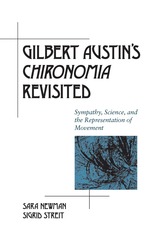 Gilbert Austin's "Chironomia" Revisited: Sympathy, Science, and the Representation of Movement
Sara Newman and Sigrid Streit
Southern Illinois University Press, 2020 This first book-length study of Irish educator, clergyman, and author Gilbert Austin as an elocutionary rhetor investigates how his work informs contemporary scholarship on delivery, rhetorical history and theory, and embodied communication. Authors Sara Newman and Sigrid Streit study Austin’s theoretical system, outlined in his 1806 book Chironomia; or A Treatise on Rhetorical Delivery—an innovative study of gestures as a viable, independent language—and consider how Austin’s efforts to incorporate movement and integrate texts and images intersect with present-day interdisciplinary studies of embodiment.
Austin did not simply categorize gesture mechanically, separating delivery from rhetoric and the discipline’s overall goals, but instead he provided a theoretical framework of written descriptions and illustrations that positions delivery as central to effective rhetoric and civic interactions. Balancing the variable physical elements of human interactions as well as the demands of communication, Austin’s system fortuitously anticipated contemporary inquiries into embodied and nonverbal communication. Enlightenment rhetoricians, scientists, and physicians relied on sympathy and its attendant vivacious and lively ideas to convey feelings and facts to their varied audiences. During the seventeenth and eighteenth-centuries, as these disciplines formed increasingly distinct, specialized boundaries, they repurposed existing, shared communication conventions to new ends. While the emerging standards necessarily diverged, each was grounded in the subjective, embodied bedrock of the sympathetic, magical tradition.
Gilbert Stuart
William T. Whitley
Harvard University Press Like many people of less note, Gilbert Stuart hated writing letters and was inexcusably negligent in his correspondence. For this reason his biographer lacks all that documentary material which since Boswell’s day has been the indispensable element in the art of biography. Nevertheless, Mr. Whitley has been able to write a really “new” life of Stuart, because he has unearthed much hitherto neglected information contained in the English and American magazines and newspapers contemporary with the artist. It is altogether fitting that a biography of such importance should appear in this year of Washington celebrations, and that the man who more than any other has made George Washington live in our imagination should share honors with his famous subject.
Gilgamesh Epic and Old Testament Parallels
Alexander Heidel
University of Chicago Press, 1963 Cuneiform records made some three thousand years ago are the basis for this essay on the ideas of death and the afterlife and the story of the flood which were current among the ancient peoples of the Tigro-Euphrates Valley. With the same careful scholarship shown in his previous volume, The Babylonian Genesis, Heidel interprets the famous Gilgamesh Epic and other related Babylonian and Assyrian documents. He compares them with corresponding portions of the Old Testament in order to determine the inherent historical relationship of Hebrew and Mesopotamian ideas.
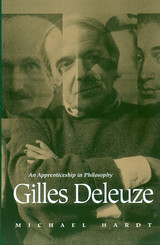 Gilles Deleuze: An Apprenticeship in Philosophy
Michael Hardt
University of Minnesota Press, 1993 The key to understanding Deleuze's complete body of work. "A coherent and systematic reading of a philosopher who has consistently courted the incoherent and systematic. What we must avoid are encounters with those who cultivate sad passions (the men of ressentiment in the Nietzschean formulation); and we must increase our power to compose new relationships with compatible bodies with whom we share a common notion. Hardt's exceptional book is one such joyful encounter." -Times Literary Supplement"An excellent book. The project of Gilles Deleuze is to situate Deleuze squarely in the camp of those who seek to deepen and transform our philsophical understanding and political situation. Hardt seems to me to be directly on target." -Substance"Both for its object and its method of study, here is a work that will mark the future of the field of Deleuzian studies." -Eric Alliez, Critique"Hardt's reading of Deleuze is complex and precise. He follows the intricacies of the argument and of the shifting positions with considerable skill, thus providing us with a study not only of the Deleuzian way of doing philosophy, but of Deleuzian reading-of the selectivity of its targets, of its agonistic approach to philosophy, through indirect attack on one main opponent. Reading Hardt reading Deleuze reading, we can understand, for instance, why Deleuze's exposition usually takes the form not of a dialectic but of a correlation, of a system of differences." -Radical Philosophy"How can we forget the dialectic? How an we affirm a constitutive ontology? Through its efforts to respond to these questions, Gilles Deleuze's philosophical apprenticeship presents the Bildungsroman of any contemporary philosophy that wants to break away from the destiny of modernity. Michael Hardt unravels the guiding thread of this philosophy of the future." -Antonio Negri"Hardt's interpretations are exceptionally well-grounded in the history of philosophical discourse, a discourse he exercises with discipline and rare insight. As the only major work on Deleuze in English, this book will undoubtedly set the standard for any future study of one of France's most important thinkers-and it is a very high standard, indeed." -Peggy Kamuf
 Gilles Deleuze and the Fabulation of Philosophy: Powers of the False, Volume 1
Gregory Flaxman
University of Minnesota Press, 2011 Although much has been written about Deleuze’s engagement with the arts, Gilles Deleuze and the Fabulation of Philosophy concerns the art of his philosophy. Gregory Flaxman suggests that Deleuze’s notorious rejection of representation gives rise to a singular task—to create new concepts and invent new means of philosophical expression. Tracing this task throughout Deleuze’s vast oeuvre, Flaxman argues that Deleuze’s ambition to think and write “otherwise” constitutes the fabulation of philosophy itself. For Flaxman, Deleuze’s philosophy is organized around the notion of the friend (philos). This book dramatizes the practice of friendship in Deleuze’s intimate affairs with philosophers—including Plato, Aristotle, Spinoza, Kant, and Foucault—and close encounters with a range of writers, including Homer, More, Kafka, Woolf, and Borges. Flaxman traces Deleuze’s relationship with Nietzsche, the friend from whom he learned to write “in his own name,” to explain how apprenticeship becomes the initial condition of Deleuze’s philosophical method. Detailing the transformation of Nietzsche’s genealogy into “geophilosophy,” Flaxman goes on to show how Deleuze’s philosophy of the earth precipitates his return to ancient Greece and induces his resolution to overturn Platonism. In this spirit, the book demonstrates Deleuze’s evocation of the “powers of the false” by examining how, in his battle against representation, he makes fiction the basis for a minor philosophy. This first volume draws to a close with a timely elaboration of Deleuze’s avowed, if enigmatic, “style as politics” in an age when capitalism and communication challenge the claims of philosophy as never before. A stunning and original contribution, Flaxman’s book restores the question of aesthetics to Deleuze’s thinking and writing. Gilles Deleuze and the Fabulation of Philosophy not only revitalizes our sense of the philosopher but revises the sense of his philosophy, provoking critical problems and novel possibilities with which readers will wrestle for years to come.
 Gilles Deleuze: Vitalism and Multiplicity
John Marks
Pluto Press, 1998 Gilles Deleuze is widely regarded as one of the major postwar proponents of Nietzschean thought in continental philosophy. Over a period of forty years, he presented what amounts to a philosophy of vitalism and multiplicity, bringing together concepts from thinkers as diverse as Nietzsche and Hume.
In the first comprehensive English-language introduction to Deleuze, John Marks offers a lucid reading of a complex, abstract and often perplexing body of work. Marks examines Deleuze’s philosophical writings – as well as the political and aesthetic preoccupations which underpinned his thinking – and provides a rigorous and illuminating reading of Deleuze’s early studies of Hume, Nietzsche, Kant, Bergson and Spinoza, his collaborations with Felix Guattari, and the development of a distinctively ‘Deleuzian’ conceptual framework. Marks focuses on the philosophical friendship that developed between Deleuze and Foucault and considers the full range of Deleuze’s fascinating writings on literature, art and cinema. This is a clear and concise guide to the work of one of the twentieth century’s most influential thinkers.
 Gilles Deleuze's Time Machine
D. N. Rodowick
Duke University Press, 1997 Although Gilles Deleuze is one of France’s most celebrated twentieth-century philosophers, his theories of cinema have largely been ignored by American scholars. Film theorist D. N. Rodowick fills this gap by presenting the first comprehensive study, in any language, of Deleuze’s work on film and images. Placing Deleuze’s two books on cinema—The Movement-Image and The Time-Image—in the context of French cultural theory of the 1960s and 1970s, Rodowick examines the logic of Deleuze’s theories and the relationship of these theories to his influential philosophy of difference.
Rodowick illuminates the connections between Deleuze’s writings on visual and scientific texts and describes the formal logic of his theory of images and signs. Revealing how Deleuzian views on film speak to the broader network of philosophical problems addressed in Deleuze’s other books—including his influential work with Félix Guattari—Rodowick shows not only how Deleuze modifies the dominant traditions of film theory, but also how the study of cinema is central to the project of modern philosophy.
Gillioz "Theatre Beautiful": Celebrating Springfield's Theatre History, 1926-2006
James Baumlin
Moon City, 2006 Recounting the many live vaudeville acts and films that graced the theatre’s stage and screen, The Gillioz “Theatre Beautiful” presents a social history of entertainment through the Roaring Twenties, the Great Depression, the Second World War, the Cold War, the Sixties and the Seventies. Of note is the Springfield theatre’s hosting of three movie world premieres—with future U. S. president Ronald Reagan appearing in each.
Ginseng and Other Tales from Manila
Marianne Villanueva
Calyx, 1991 Please fill in Nominee Manila Critics Circle Award
These beautiful and poignant stories evoke a complex and empathetic picture of the Philippines. They reveal characters trapped in the extremity of urban violence or the crushing poverty of the provinces. The reader comes away with new insight into human nature and the valor and courage of the Philippine people. copy
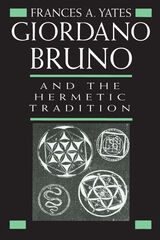 Giordano Bruno and the Hermetic Tradition
Frances A. Yates
University of Chicago Press, 1990 Placing Bruno—both advanced philosopher and magician burned at the stake—in the Hermetic tradition, Yates's acclaimed study gives an overview not only of Renaissance humanism but of its interplay—and conflict—with magic and occult practices.
"Among those who have explored the intellectual world of the sixteenth century no one in England can rival Miss Yates. Wherever she looks, she illuminates. Now she has looked on Bruno. This brilliant book takes time to digest, but it is an intellectual adventure to read it. Historians of ideas, of religion, and of science will study it. Some of them, after reading it, will have to think again. . . . For Miss Yates has put Bruno, for the first time, in his tradition, and has shown what that tradition was."—Hugh Trevor-Roper, New Statesman
"A decisive contribution to the understanding of Giordano Bruno, this book will probably remove a great number of misrepresentations that still plague the tormented figure of the Nolan prophet."—Giorgio de Santillana, American Historical Review
"Yates's book is an important addition to our knowledge of Giordano Bruno. But it is even more important, I think, as a step toward understanding the unity of the sixteenth century."—J. Bronowski, New York Review of Books
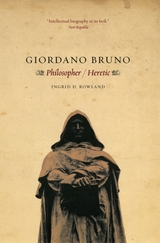 Giordano Bruno: Philosopher / Heretic
Ingrid D. Rowland
University of Chicago Press, 2009 Giordano Bruno (1548–1600) is one of the great figures of early modern Europe, and one of the least understood. Ingrid D. Rowland’s biography establishes him once and for all as a peer of Erasmus, Shakespeare, and Galileo—a thinker whose vision of the world prefigures ours.
Writing with great verve and erudition, Rowland traces Bruno’s wanderings through a sixteenth-century Europe where every certainty of religion and philosophy has been called into question, and reveals how he valiantly defended his ideas to the very end, when he was burned at the stake as a heretic on Rome’s Campo de’ Fiori.
“A loving and thoughtful account of [Bruno’s] life and thought, satires and sonnets, dialogues and lesson plans, vagabond days and star-spangled nights. . . . Ingrid D. Rowland has her reasons for preferring Bruno to Copernicus, Tycho Brahe, Johannes Kepler, even Galileo and Leonardo, and they’re good ones.”—John Leonard, Harper’s
“Whatever else Bruno was, he was wild-minded and extreme, and Rowland communicates this, together with a sense of the excitement that his ideas gave him. . . . It’s that feeling for the explosiveness of the period, and [Rowland’s] admiration of Bruno for participating in it—indeed, dying for it—that is the central and most cherishable quality of the biography.”—Joan Acocella, New Yorker
“Rowland tells this great story in moving, vivid prose, concentrating as much on Bruno’s thought as on his life. . . . His restless mind, as she makes clear, not only explored but transformed the heavens.”—Anthony Grafton, New York Review of Books
“[Bruno] seems to have been an unclassifiable mixture of foul-mouthed Neapolitan mountebank, loquacious poet, religious reformer, scholastic philosopher, and slightly wacky astronomer.”—Anthony Gottlieb, New York Times Book Review
“A marvelous feat of scholarship. . . . This is intellectual biography at its best.”—Peter N. Miller, New Republic
“An excellent starting point for anyone who wants to rediscover the historical figure concealed beneath the cowl on Campo de’ Fiori.”—Paula Findlen, Nation
Giorgione's Tempest: Interpreting the Hidden Subject
Salvatore Settis
University of Chicago Press, 1990 The Tempest is Giorgione's most enigmatic painting. It is a depiction of Giorgione's own family, of the "family of man" tale from Boccaccio, or of the myth of Apollo's birth? In this remarkable study, Salvatore Settis uses the mystery of the painting to shed light on the relationship between artist, patron, work, and critic. The result is a brilliant piece of detective work in the history and sociology of culture that stresses the function of Giorgione's art for the emerging, classically educated connoisseur elite of sixteenth-century Venice.
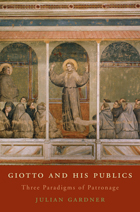 Giotto and His Publics: Three Paradigms of Patronage
Julian Gardner
Harvard University Press, 2011 This probing analysis of three works by Giotto and the patrons who commissioned them goes far beyond the clichés of Giotto as the founding figure of Western painting. It traces the interactions between Franciscan friars and powerful bankers, illuminating the complex interplay between mercantile wealth and the iconography of poverty.
Political strife and religious faction lacerated fourteenth-century Italy. Giotto’s commissions are best understood against the background of this social turmoil. They reflected the demands of his patrons, the requirements of the Franciscan Order, and the restlessly inventive genius of the painter. Julian Gardner examines this important period of Giotto’s path-breaking career through works originally created for Franciscan churches: Stigmatization of Saint Francis from San Francesco at Pisa, now in the Louvre, the Bardi Chapel cycle of the Life of St. Francis in Santa Croce at Florence, and the frescoes of the crossing vault above the tomb of Saint Francis in the Lower Church of San Francesco at Assisi.
These murals were executed during a twenty-year period when internal tensions divided the friars themselves and when the Order was confronted by a radical change of papal policy toward its defining vow of poverty. The Order had amassed great wealth and built ostentatious churches, alienating many Franciscans in the process and incurring the hostility of other Orders. Many elements in Giotto’s frescoes, including references to St. Peter, Florentine politics, and church architecture, were included to satisfy patrons, redefine the figure of Francis, and celebrate the dominant group within the Franciscan brotherhood.
 Giovanna d'Arco: Dramma lirico in Four Acts by Temistocle Solera
Giuseppe Verdi
University of Chicago Press, 2009 Giovanna d’Arco (Joan of Arc), Verdi’s seventh opera, premiered at La Scala in 1845 to great public success despite sub-par production standards, and modern performances have swept away both audiences and critical reservations when the work is executed with faithfulness to his score. At the heart of this large-scale opera, with its prominent choruses, is the difficult and beautiful part of Joan—simultaneously ethereal soprano and dynamic warrior. The libretto by Temistocle Solera, based in part on Schiller’s play Die Jungfrau von Orleans, omits Joan’s trial for heresy and burning at the stake, ending instead with an offstage battle in which she is mortally wounded leading the French to victory against the English.
This critical edition of Giovanna d’Arco, the first publication in full score, is based on the composer’s autograph score preserved in the archives of Verdi’s publisher, Casa Ricordi. It restores the opera’s original text, which had been heavily censored, and accurately reflects Verdi’s colorful and elaborate musical setting. Editor Alberto Rizzuti’s introduction discusses the opera’s origins, sources, and performance questions, while the critical commentary details editorial problems and solutions.
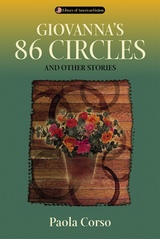 Giovanna's 86 Circles: And Other Stories
Paola Corso
University of Wisconsin Press, 2007 These ten magical stories are primarily set in Pittsburgh-area river towns, where Italian American women and girls draw from their culture and folklore to bring life and a sense of wonder to a seemingly barren region of the Rust Belt. Each story catapults the ordinary into something original and unpredictable.
A skeptical journalist scopes out the bar where the town mayor, in seemingly perfect health, is drinking with his buddies and celebrating what he claims is the last day of his life. A woman donates her dead mother’s clothes to a thrift shop but learns that their destiny is not what she expected. A ten-year-old girl wrestles with the facts of life as she watches her neighbor struggle to get pregnant while her teenage sister finds it all too easy. A high school girl hallucinates in a steamy hospital laundry room and discovers she can see her coworkers’ futures. A developer’s wrecking ball is no match for the legend of Giovanna’s green thumb in the title story “Giovanna’s 86 Circles.”
Quirky and profound, Corso’s magical leaps uncover the everyday poetry of these women’s lives. Finalist for the John Gardner Fiction Book Award
Selected for “Best Short Stories of 2005” in Montserrat Review
Best Books for Regional Special Interests, selected by the American Association of School Librarians, and Best Books for General Audiences, selected by the Public Library Association
Sons of Italy National Book Club Selection
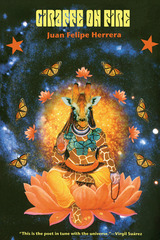 Giraffe on Fire
Juan Felipe Herrera
University of Arizona Press, 2001 First Place co-winner, Best Poetry, Latino Literary Hall of Fame
A poetic collage of voices, genres, and time-spaces. A display of power over language and rhythm. A postmodern performance of naked figures hanging in the nebulae of a militarized universe. A new millennium cubist manifesto against decrepit political machines. A mystic song in search of birth and love. In this new collection of poems, Juan Felipe Herrera's natural talent for capturing the raw dimensions of reality merges with his wild imagination and technical prowess.
Things, names, places, histories, herstories, desires, wills, minds, and their effects and progeny are re-mixed, re-mastered, and re-cast into a new narrative theater. Characters in a constant and stubborn rush, appearance, disappearance, and flow—with, against, and for each other—create the fire and give birth to the hallucinatory spotted and leaf-eating, long-necked child. Exciting and original, cutting-edge and risk-taking, Giraffe on Fire is a breathtaking addition to a respected body of work by a poet not afraid to speak out about how poetry reflects the raw beauty and truth of life.
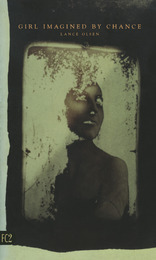 Girl Imagined by Chance
Lance Olsen
University of Alabama Press, 2002 Girl Imagined by Chance is a critifictional novel about a couple who find themselves having created a make-believe daughter (and soon a make-believe life to accompany her) in order to appease their friends, family, and the culture of reproduction. Structured around twelve photographs from a single roll of film, the book explores the nature of photography and the questions that nature raises about the notions of the simulated and the real, the media-ization of consciouness, originality, self construction, and the way we all continually fashion our faces into masks for the next shot. At its heart, Girl Imagined by Chance investigates the mystery of self-knowledge. The prevailing metaphor and structural device of photograpy examines the way images, in their magical ability to mimic memory, ultimately mock and eradicate it. The seemigly stable and fixed individual past turns out to be as protean and unknowable as the future. The body becomes strangely dispensable, perpetually adrift in a cybernetic world of hyperlinks and interfaces.
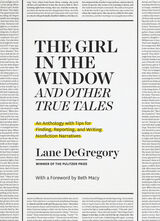 "The Girl in the Window" and Other True Tales: An Anthology with Tips for Finding, Reporting, and Writing Nonfiction Narratives
Lane DeGregory
University of Chicago Press, 2023 Part anthology and part craft guide, this collection of pieces from the Pulitzer Prize–winning journalist offers something for readers and writers alike. Lane DeGregory loves true stories, intimate details, and big ideas. In her three-decade career as a journalist, she has published more than 3,000 stories and won the Pulitzer Prize for feature writing. Her acclaimed work in the Tampa Bay Times often takes her to the edges of society, where she paints empathetic portraits of real-life characters like a 99-year-old man who still works cleaning a seafood warehouse, a young couple on a bus escaping winter, and a child in the midst of adoption. In “The Girl in the Window” and Other True Tales, DeGregory not only offers up the first collection of her most unforgettable newspaper features—she pulls back the curtain on how to write narrative nonfiction.
This book—part anthology, part craft guide—provides a forensic reading of twenty-four of DeGregory’s singular stories, illustrating her tips for writers alongside pieces that put those elements under the microscope. Each of the pieces gathered here—including the Pulitzer Prize–winning title story—is accompanied by notes on how she built the story, plus tips on how nonfiction writers at all levels can do the same. Featuring a foreword by Beth Macy, author of the acclaimed Dopesick, this book is sure to delight fans of DeGregory’s writing, as well as introduce her to readers and writers who have not yet discovered her inspiring body of work.
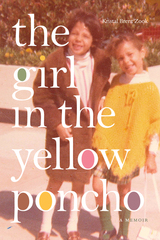 The Girl in the Yellow Poncho: A Memoir
Kristal Brent Zook
Duke University Press, 2023 At five years old, Kristal Brent Zook sat on the steps of a Venice Beach, California, motel trying to make sense of her white father’s abandonment, which left her feeling unworthy of a man’s love and of white protection. Raised by her working-class African American mother and grandmother, Zook was taught not to count on anyone, especially men. Men leave. Men disappoint. In adulthood she became a feminist, activist, and “race woman” journalist in New York City. Despite her professional success, something was missing. Coming to terms with her identity was a constant challenge.
The Girl in the Yellow Poncho is Zook’s coming-of-age tale about what it means to be biracial in America. Throughout, she grapples with in-betweenness while also facing childhood sexual assault, economic insecurity, and multigenerational alcoholism and substance abuse on both the Black and white sides of her family. Her story is one of strong Black women—herself, her cousin, her mother, and her grandmother—and the generational cycles of oppression and survival that seemingly defined their lives.
Setting out on an inner journey that takes her across oceans and continents, Zook tells the story of a little girl who never gives up on love, even long after it seems to have been destroyed. In the end she triumphs, reconciling with her father and mother to create the family of her dreams through forgiveness and sheer force of will. A testament to the power of settling into one’s authentic identity, this book tells a story of a daughter’s lifelong yearning, a mother’s rediscovery of lost love, and the profound power of atonement and faith to heal a broken family.
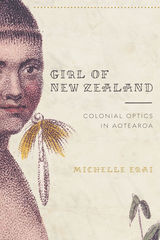 Girl of New Zealand: Colonial Optics in Aotearoa
Michelle Erai
University of Arizona Press, 2020 Girl of New Zealand presents a nuanced insight into the way violence and colonial attitudes shaped the representation of Māori women and girls. Michelle Erai examines more than thirty images of Māori women alongside the records of early missionaries and settlers in Aotearoa, as well as comments by archivists and librarians, to shed light on how race, gender, and sexuality have been ascribed to particular bodies.
Viewed through Māori, feminist, queer, and film theories, Erai shows how images such as Girl of New Zealand (1793) and later images, cartoons, and travel advertising created and deployed a colonial optic. Girl of New Zealand reveals how the phantasm of the Māori woman has shown up in historical images, how such images shape our imagination, and how impossible it has become to maintain the delusion of the “innocent eye.” Erai argues that the process of ascribing race, gender, sexuality, and class to imagined bodies can itself be a kind of violence.
In the wake of the Me Too movement and other feminist projects, Erai’s timely analysis speaks to the historical foundations of negative attitudes toward Indigenous Māori women in the eyes of colonial “others”—outsiders from elsewhere who reflected their own desires and fears in their representations of the Indigenous inhabitants of Aotearoa, New Zealand. Erai resurrects Māori women from objectification and locates them firmly within Māori whānau and communities.
 Girl Power?: A History of Girl-Focused Development from Nairobi
Sarah Bellows-Blakely
University of Chicago Press, 2025 An examination of how, when, and why austerity capitalism and strands of feminism became intertwined, and why girl-focused programs have been at the heart of international policymaking.
Girl-focused education programs have long been at the heart of international policymaking—when girls’ access to education is ensured, the reasoning goes, they are more likely to turn into productive adults who can drive economic growth. These ideas combine strands of feminism and capitalism that have a specific and understudied origin. In this book, historian Sarah Bellows-Blakely shows how a doctored study of girls’ education in East and Southern Africa led to the creation of international norms in the United Nations that would go on to guide policymaking on women’s rights and economic growth, promoting neoliberal feminist policy at the expense of other forms of gender-based justice.
Focusing on the growth of free-market feminism and girl-focused economic development planning through the relationship between UNICEF and the Nairobi-based NGO FEMNET, Bellows-Blakely reveals how their joint efforts set the blueprints for linked movements of economic development and women’s rights that are still ongoing. Through a narrative of the UNICEF-FEMNET lobbying campaign, Bellows-Blakely shows how multiple, contested girl-focused visions of economic programming and gender justice became selectively erased in favor of an approach to global policy centered on the free-market construction and strategic deployment of the African “girl child.”
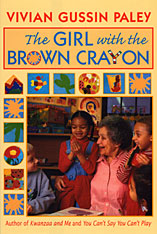 The Girl with the Brown Crayon
Vivian Gussin Paley
Harvard University Press, 1998 Once again Vivian Paley takes us into the inquiring minds and the dramatic worlds of young children learning in the kindergarten classroom.
As she enters her final year of teaching, Paley tells in this book a story of farewell and a story of self-discovery—through the thoughts and blossoming spirit of Reeny, a little girl with a fondness for the color brown and an astonishing sense of herself. "This brown girl dancing is me," Reeny announces, as her crayoned figures flit across the classroom walls. Soon enough we are drawn into Reeny's remarkable dance of self-revelation and celebration, and into the literary turn it takes when Reeny discovers a kindred spirit in Leo Lionni—a writer of books and a teller of tales. Led by Reeny, Paley takes us on a tour through the landscape of characters created by Lionni. These characters come to dominate a whole year of discussion and debate, as the children argue the virtues and weaknesses of Lionni's creations and his themes of self-definition and an individual's place in the community.
The Girl with the Brown Crayon tells a simple personal story of a teacher and a child, interweaving the themes of race, identity, gender, and the essential human needs to create and to belong. With characteristic charm and wonder, Paley discovers how the unexplored territory unfolding before her and Reeny comes to mark the very essence of school, a common core of reference, something to ponder deeply and expand on extravagantly.
 Girl Zoo
Aimee Parkison and Carol Guess
University of Alabama Press, 2019 A dark yet playful collection of short stories that pushes boundaries and blurs the lines between the real and surreal
Girl Zoo is an enthralling and sometimes unsettling collection of short stories that examines how women in society are confined by the limitations and expectations of pop culture, politics, advertising, fashion, myth, and romance. In each story, a woman or girl is literally confined or held captive, and we can only watch as they are transformed into objects of terror and desire, plotting their escape from their cultural cages.
Taken as a whole, this experimental speculative fiction invites parallels to social justice movements focused on sexuality and gender, as well as cautionary tales for our precarious political movement. Parkison and Guess offer no solutions to their characters’ captivity. Instead, they challenge their audience to read against the grain of conventional feminist dystopian narratives by inviting them inside the “Girl Zoo” itself.
Take a step inside the zoo and see for yourself. We dare you. Behind the bars, a world of wonder awaits.
Girlhood: A Global History
Helgren, Jennifer
Rutgers University Press, 2010 Girlhood, interdisciplinary and global in source, scope, and methodology, examines the centrality of girlhood in shaping women's lives. Scholars study how age and gender, along with a multitude of other identities, work together to influence the historical experience.
Spanning a broad time frame from 1750 to the present, essays illuminate the various continuities and differences in girls' lives across culture and region--girls on all continents except Antarctica are represented. Case studies and essays are arranged thematically to encourage comparisons between girls' experiences in diverse locales, and to assess how girls were affected by historical developments such as colonialism, political repression, war, modernization, shifts in labor markets, migrations, and the rise of consumer culture.
Girlhood and the Plastic Image
Heather Warren-Crow
Dartmouth College Press, 2014 You are girlish, our images tell us. You are plastic. Girlhood and the Plastic Image explains how, revealing the increasing girlishness of contemporary media. The figure of the girl has long been prized for its mutability, for the assumed instability and flexibility of the not-yet-woman. The plasticity of girlish identity has met its match in the plastic world of digital art and cinema. A richly satisfying interdisciplinary study showing girlish transformation to be a widespread condition of mediation, Girlhood and the Plastic Image explores how and why our images promise us the adaptability of youth. This original and engaging study will appeal to a broad interdisciplinary audience including scholars of media studies, film studies, art history, and women’s studies.
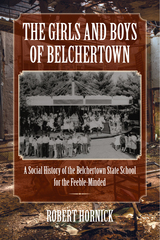 The Girls and Boys of Belchertown: A Social History of the Belchertown State School for the Feeble-Minded
Robert Hornick
University of Massachusetts Press, 2012 During much of the twentieth century, people labeled "feeble-minded," "mentally deficient," and "mentally retarded" were often confined in large, publicly funded, residential institutions located on the edges of small towns and villages some distance from major population centers. At the peak of their development in the late 1960s, these institutions—frequently called "schools" or "homes"—housed 190,000 men, women, and children in the United States.
The Girls and Boys of Belchertown offers the first detailed history of an American public institution for intellectually disabled persons. Robert Hornick recounts the story of the Belchertown State School in Belchertown, Massachusetts, from its beginnings in the 1920s to its closure in the 1990s following a scandalous exposé and unprecedented court case that put the institution under direct supervision of a federal judge. He draws on personal interviews, private letters, and other unpublished sources as well as local newspapers, long out-of-print materials, and government reports to re-create what it was like to live and work at the school. More broadly, he gauges the impact of changing social attitudes toward intellectual disability and examines the relationship that developed over time between the school and the town where it was located.
What emerges is a candid and complex portrait of the Belchertown State School that neither vilifies those in charge nor excuses the injustices perpetrated on its residents, but makes clear that despite the court-ordered reforms of its final decades, the institution needed to be closed.
Girls at a Vocational High
Henry Joseph Meyer
Russell Sage Foundation, 1965 Teachers, social workers, psychologists, and sociologists carried out an ambitious, six-year experiment in individual casework and group therapy with potential problem girls in a New York City vocational high school. Conducted in collaboration with Youth Consultation Service, this provocative study provides valuable data on adolescent girls—and raises compelling questions on the extent to which casework can be effective in interrupting deviant careers.
Girls! Girls! Girls! In Contemporary Art
Edited by Catherine Grant and Lori Waxman
Intellect Books, 2011 Since the 1990s, female artists have led the contemporary art world in the creation of art depicting female adolescence, producing challenging, critically debated, and avidly collected artworks that are driving the current and momentous shift in the perception of women in art. Girls! Girls! Girls! presents essays from established and up-and-coming scholars who address a variety of themes, including narcissism, nostalgia, postfeminism, and fantasy with the goal of approaching the overarching question of why female artists are turning in such numbers to the subject of girls—and what these artistic explorations signify. Artists discussed include Anna Gaskell, Marlene McCarty, Sue de Beer, Miwa Yanagi, Eija-Liisa Ahtila, Collier Schorr, and more. Contributors include Lucy Soutter, Harriet Riches, Maud Lavin, Taru Elfving, Kate Random Love, and Carol Mavor.
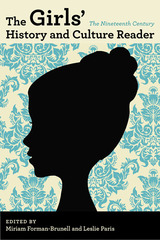 The Girls' History and Culture Reader: The Nineteenth Century
Edited by Miriam Forman-Brunell and Leslie Paris
University of Illinois Press, 2011 The Girls' History and Culture Reader: The Nineteenth Century provides scholars, instructors, and students with the most influential essays that have defined the field of American girls' history and culture. A relatively new and energetic field of inquiry, girl-centered research is critical for a fuller understanding of women and gender, a deeper consideration of childhood and adolescence, and a greater acknowledgment of the significance of generation as a historical force in American culture and society. Bringing together work from top scholars of women and youth, The Girls' History and Culture Reader: The Nineteenth Century addresses topics ranging from diary writing and toys to prostitution and slavery. Covering girlhood and the relationships between girls and women, this pioneering volume tackles pivotal themes such as education, work, play, sexuality, consumption, and the body. The reader also illuminates broader nineteenth-century developments—including urbanization, industrialization, and immigration--through the often-overlooked vantage point of girls. As these essays collectively suggest, nineteenth-century girls wielded relatively little political or social power but carved out other spaces of self-expression. Contributors are Carol Devens, Miriam Forman-Brunell, Jane H. Hunter, Anya Jabour, Anne Scott MacLeod, Susan McCully, Mary Niall Mitchell, Leslie Paris, Barbara Sicherman, Carroll Smith-Rosenberg, Christine Stansell, Nancy M. Theriot, and Deborah Gray White.
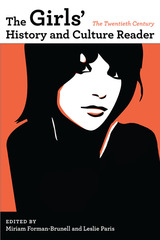 The Girls' History and Culture Reader: The Twentieth Century
Edited by Miriam Forman-Brunell and Leslie Paris
University of Illinois Press, 2011 The Girls' History and Culture Reader: The Twentieth Century provides scholars, instructors, and students with the most influential essays that have defined the field of American girls' history and culture. A relatively new and energetic field of inquiry, girl-centered research is critical for a fuller understanding of women and gender, a deeper consideration of childhood and adolescence, and a greater acknowledgment of the significance of generation as a historical force in American culture and society. Bringing together work from top scholars of women and youth, The Girls' History and Culture Reader: The Twentieth Century illustrates girls' centrality to major twentieth-century forces such as immigration, labor, feminism, and consumerism. Themes in this pioneering volume include girls' use of fashion and music, their roles as workers, their friendships, and new ideas about girls' bodies. While girls in the twentieth century found new avenues for personal ambition and self-expression, especially at school and in the realm of leisure and popular culture, they continued to wrestle with traditional ideas about feminine identity, socialization, and sexuality. Contributors are Joan Jacobs Brumberg, Rachel Devlin, Susan J. Douglas, Miriam Forman-Brunell, Kyra D. Gaunt, Mary Celeste Kearney, Ilana Nash, Mary Odem, Leslie Paris, Kathy Peiss, Vicki L. Ruiz, Kelly Schrum, and Judy Yung.
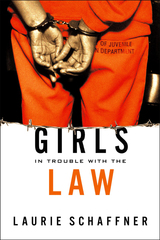 Girls in Trouble with the Law
Schaffner, Laurie
Rutgers University Press, 2006 In Girls in Trouble with the Law, sociologist Laurie Schaffner takes us inside juvenile detention centers and explores the worlds of the young women incarcerated within. Across the nation, girls of color are disproportionately represented in detention facilities, and many report having experienced physical harm and sexual assaults. For girls, the meaning of these and other factors such as the violence they experience remain undertheorized and below the radar of mainstream sociolegal scholarship. When gender is considered as an analytic category, Schaffner shows how gender is often seen through an outmoded lens.
Offering a critical assessment of what she describes as a gender-insensitive juvenile legal system, Schaffner makes a compelling argument that current policies do not go far enough to empower disadvantaged girls so that communities can assist them in overcoming the social limitations and gender, sexual, and racial/ethnic discrimination that continue to plague young women growing up in contemporary United States.
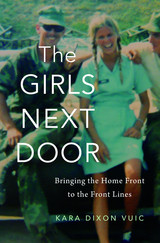 The Girls Next Door: Bringing the Home Front to the Front Lines
Kara Dixon Vuic
Harvard University Press, 2019 The story of the intrepid young women who volunteered to help and entertain American servicemen fighting overseas, from World War I through the wars in Afghanistan and Iraq.
The emotional toll of war can be as debilitating to soldiers as hunger, disease, and injury. Beginning in World War I, in an effort to boost soldiers’ morale and remind them of the stakes of victory, the American military formalized a recreation program that sent respectable young women and famous entertainers overseas.
Kara Dixon Vuic builds her narrative around the young women from across the United States, many of whom had never traveled far from home, who volunteered to serve in one of the nation’s most brutal work environments. From the “Lassies” in France and mini-skirted coeds in Vietnam to Marlene Dietrich and Marilyn Monroe, Vuic provides a fascinating glimpse into wartime gender roles and the tensions that continue to complicate American women’s involvement in the military arena. The recreation-program volunteers heightened the passions of troops but also domesticated everyday life on the bases. Their presence mobilized support for the war back home, while exporting American culture abroad. Carefully recruited and selected as symbols of conventional femininity, these adventurous young women saw in the theater of war a bridge between public service and private ambition.
This story of the women who talked and listened, danced and sang, adds an intimate chapter to the history of war and its ties to life in peacetime.
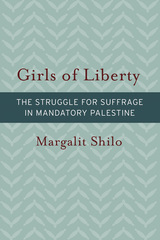 Girls of Liberty: The Struggle for Suffrage in Mandatory Palestine
Margalit Shilo
Brandeis University Press, 2016 Following the Balfour Declaration and the British conquest of Palestine (1917–1918), the small Jewish community that lived there wanted to establish an elected assembly as its representative body. The issue that hindered this aim was whether women would be part of it. A group of feminist Zionist women from all over the country created a political party that participated in the elections, even before women’s suffrage was enacted. This unique phenomenon in Mandatory Palestine resulted in the declaration of women’s equal rights in all aspects of life by the newly founded Assembly of Representatives. Margalit Shilo examines the story of these activists to elaborate on a wide range of issues, including the Zionist roots of feminism and nationalism; the ultra-Orthodox Jewish sector’s negation of women’s equality; how traditional Jewish concepts of women fashioned rabbinical attitudes on the question of women’s suffrage; and how the fight for women’s suffrage spread throughout the country. Using current gender theories, Shilo compares the Zionist suffrage struggle to contemporaneous struggles across the globe, and connects this nearly forgotten episode, absent from Israeli historiography, with the present situation of Israeli women. This rich analysis of women’s right to vote within this specific setting will appeal to scholars and students of Israel studies, and to feminist and social historians interested in how contexts change the ways in which activism is perceived and occurs.
Girls Who Went Wrong: Prostitutes in American Fiction, 1885–1917
Laura Hapke
University of Wisconsin Press, 1989 The period 1885 to 1917 saw thousands of American crusaders working hard to “save the fallen women,” but little on the part of American social protest writers. In this first work on the subject, Laura Hapke examines how writers attempted to turn an outcast into a heroine in a literature otherwise known for its puritanical attitude toward the fallen woman. She focuses on how these authors (all male) expressed late-Victorian conflicts about female sexuality. If, as they all maintained, women have an innate preference for chastity, how could they account for the prostitute? Was she a sinner, suggesting the potential waywardness of all women? Or, if she was a victim, what of her “depravity”?
Girls Who Wore Black: Women Writing the Beat Generation
Johnson, Ronna C
Rutgers University Press, 2002 What do we know about the women who played an important role in creating the literature of the Beat Generation? Until recently, very little. Studies of the movement have effaced or excluded women writers, such as Elise Cowen, Joyce Johnson, Joanne Kyger, Hettie Jones, and Diane Di Prima, each one a significant figure of the postwar Beat communities. Equally free-thinking and innovative as the founding generation of men, women writers, fluent in Beat, hippie, and women's movement idioms, partook of and bridged two important countercultures of the American mid-century. Persistently foregrounding female experiences in the cold war 1950s and in the counterculture 1960s and in every decade up to the millennium, women writing Beat have brought nonconformity, skepticism, and gender dissent to postmodern culture and literary production in the United States and beyond.
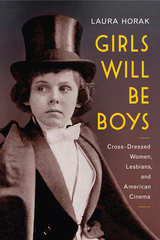 Girls Will Be Boys: Cross-Dressed Women, Lesbians, and American Cinema, 1908-1934
Horak, Laura
Rutgers University Press, 2016 2016 Choice Outstanding Academic Title
Finalist for 2016 Richard Wall Memorial Award from the Theatre Library Association
Long-listed for the 2017 Best Photography Book Award from the Kraszna-Krausz Foundation
Marlene Dietrich, Greta Garbo, and Katharine Hepburn all made lasting impressions with the cinematic cross-dressing they performed onscreen. What few modern viewers realize, however, is that these seemingly daring performances of the 1930s actually came at the tail end of a long wave of gender-bending films that included more than 400 movies featuring women dressed as men.
Laura Horak spent a decade scouring film archives worldwide, looking at American films made between 1908 and 1934, and what she discovered could revolutionize our understanding of gender roles in the early twentieth century. Questioning the assumption that cross-dressing women were automatically viewed as transgressive, she finds that these figures were popularly regarded as wholesome and regularly appeared onscreen in the 1910s, thus lending greater respectability to the fledgling film industry. Horak also explores how and why this perception of cross-dressed women began to change in the 1920s and early 1930s, examining how cinema played a pivotal part in the representation of lesbian identity.
Girls Will Be Boys excavates a rich history of gender-bending film roles, enabling readers to appreciate the wide array of masculinities that these actresses performed—from sentimental boyhood to rugged virility to gentlemanly refinement. Taking us on a guided tour through a treasure-trove of vintage images, Girls Will Be Boys helps us view the histories of gender, sexuality, and film through fresh eyes.
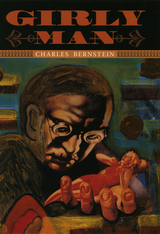 Girly Man
Charles Bernstein
University of Chicago Press, 2006 After 9/11, postmodernism and irony were declared dead. Charles Bernstein here proves them alive and well in poems elegiac, defiant, and resilient to the point of approaching song. Heir to the democratic and poetic sensibilities of Walt Whitman and Allen Ginsberg, Bernstein has always crafted verse that responds to its historical moment, but no previous collection of his poems so specifically addresses the events of its time as Girly Man, whichfeatures works written on the evening of September 11, 2001, and in response to the war in Iraq. Here, Bernstein speaks out, combining self-deprecating humor with incisive philosophical and political thinking.
Composed of works of very different forms and moods—etchings from moments of acute crisis, comic excursions, formal excavations, confrontations with the cultural illogics of contemporary political consciousness—the poems work as an ensemble, each part contributing something necessary to an unrealizable and unrepresentable whole. Indeed, representation—and related claims to truth and moral certainty—is an active concern throughout the book. The poems of Girly Man may be oblique, satiric, or elusive, but their sense is emphatic. Indeed, Bernstein’s poetry performsits ideas so that they can be experienced as well as understood.
A passionate defense of contingency, resistance, and multiplicity, Girly Man is a provocative and aesthetically challenging collection of radical verse from one of America’s most controversial poets.
 GIT ALONG LITTLE DOGIES: SONGS AND SONGMAKERS OF THE AMERICAN WEST
John I. White
University of Illinois Press, 1975 A former singing cowboy himself, John I. White spent decades compiling information on cowboy and western songs and the artists, songwriters, and others attached to them. He also sought out and corresponded with a who's who of the genre, people like Badger Clark, Curley Fletcher, D. J. O'Malley, Romaine Lowdermilk, Will Barnes, Joseph Mills Hanson, and Owen Wister.
In Git Along, Little Dogies, White draws on old friendships and his exhaustive files to bring readers the untold story of cowboy and western song. Wonderful anecdotes stand beside White's trademark attention to detail as he painstakingly establishes the time, place, and circumstance behind each song's origin and places the music within the evolution of popular song. He also looks at how radio and recording affected the genre and shows how the music crisscrossed with pop music but also with folk and the traditional Anglo-Irish tradition.
From "Whoopee Ti Yi Yo" to "Ten Thousand Cattle Straying," Git Along, Little Dogies ventures from cow camps to saloons to big-city radio studios as it lassos a vivid piece of American music history.
Giuseppe Pagano: Design for Social Change in Fascist Italy
Flavia Marcello
Intellect Books, 2019 Giuseppe Pagano-Pogatschnig (1896–1945) was a twentieth-century polymath operating at the intersection between architecture, media, design, and the arts. He was an exhibition and furniture designer, curator, photographer, editor, writer, and architect. A dedicated Fascist turned Resistance fighter, he was active in Italy’s most dramatic social and political era.
Giuseppe Pagano provides a comprehensive overview of the influential architect and his contribution to the development of modern architecture. It follows a central biographical line with in-depth, mini chapter contributions on aspects of Pagano’s cultural production, concluding with writings by Pagano himself and a critical bibliography to aid scholars in further study.
Give a Man a Fish: Reflections on the New Politics of Distribution
James Ferguson
Duke University Press, 2015 In Give a Man a Fish James Ferguson examines the rise of social welfare programs in southern Africa, in which states make cash payments to their low income citizens. More than thirty percent of South Africa's population receive such payments, even as pundits elsewhere proclaim the neoliberal death of the welfare state. These programs' successes at reducing poverty under conditions of mass unemployment, Ferguson argues, provide an opportunity for rethinking contemporary capitalism and for developing new forms of political mobilization. Interested in an emerging "politics of distribution," Ferguson shows how new demands for direct income payments (including so-called "basic income") require us to reexamine the relation between production and distribution, and to ask new questions about markets, livelihoods, labor, and the future of progressive politics.
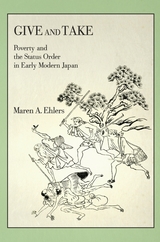 Give and Take: Poverty and the Status Order in Early Modern Japan
Maren A. Ehlers
Harvard University Press, 2018 Give and Take offers a new history of government in Tokugawa Japan (1600–1868), one that focuses on ordinary subjects: merchants, artisans, villagers, and people at the margins of society such as outcastes and itinerant entertainers. Most of these individuals are now forgotten and do not feature in general histories except as bystanders, protestors, or subjects of exploitation. Yet despite their subordinate status, they actively participated in the Tokugawa polity because the state was built on the principle of reciprocity between privilege-granting rulers and duty-performing status groups. All subjects were part of these local, self-governing associations whose members shared the same occupation. Tokugawa rulers imposed duties on each group and invested them with privileges, ranging from occupational monopolies and tax exemptions to external status markers. Such reciprocal exchanges created permanent ties between rulers and specific groups of subjects that could serve as conduits for future interactions.
This book is the first to explore how high and low people negotiated and collaborated with each other in the context of these relationships. It takes up the case of one domain—Ōno in central Japan—to investigate the interactions between the collective bodies in domain society as they addressed the problem of poverty.
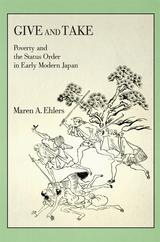 Give and Take: Poverty and the Status Order in Early Modern Japan
Maren A. Ehlers
Harvard University Press Give and Take offers a new history of government in Tokugawa Japan (1600–1868), one that focuses on ordinary subjects: merchants, artisans, villagers, and people at the margins of society such as outcastes and itinerant entertainers. Most of these individuals are now forgotten and do not feature in general histories except as bystanders, protesters, or subjects of exploitation. Yet despite their subordinate status, they actively participated in the Tokugawa polity because the state was built on the principle of reciprocity between privilege-granting rulers and duty-performing status groups. All subjects were part of these local, self-governing associations whose members shared the same occupation. Tokugawa rulers imposed duties on each group and invested them with privileges, ranging from occupational monopolies and tax exemptions to external status markers. Such reciprocal exchanges created permanent ties between rulers and specific groups of subjects that could serve as conduits for future interactions.
This book is the first to explore how high and low people negotiated and collaborated with each other in the context of these relationships. It takes up the case of one domain—Ōno in central Japan—to investigate the interactions between the collective bodies in domain society as they addressed the problem of poverty.
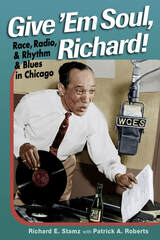 Give 'Em Soul, Richard!: Race, Radio, and Rhythm and Blues in Chicago
Richard E. Stamz with Patrick A. Roberts, Foreword by Robert Pruter
University of Illinois Press, 2010 As either observer or participant, radio deejay and political activist Richard E. Stamz witnessed every significant period in the history of blues and jazz in the last century. From performing first-hand as a minstrel in the 1920s to broadcasting Negro League baseball games in a converted 1934 Chrysler to breaking into Chicago radio and activist politics and hosting his own television variety show, the remarkable story of his life also is a window into milestones of African American history throughout the twentieth century. Dominating the airwaves with his radio show "Open the Door, Richard" on WGES in Chicago, Stamz cultivated friendships with countless music legends, including Willie Dixon, Sonny Boy Williamson, Little Walter, Howlin' Wolf, Memphis Slim, and Leonard Chess. The pioneering Chicago broadcaster and activist known as "The Crown Prince of Soul" died in 2007 at the age of 101, but not before he related the details of his life and career to college professor Patrick A. Roberts. Give 'Em Soul, Richard! surrounds Stamz's memories of race records, juke joints, and political action in Chicago's Englewood neighborhood with insights on the larger historical trends that were unfolding around him in radio and American history. Narrated by Stamz, this entertaining and insightful chronicle includes commentary by Roberts as well as reflections on the unlikely friendship and collaboration between a black radio legend and a white academic that resulted in one of the few existing first-hand accounts of Chicago's post-war radio scene.
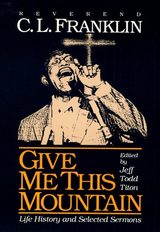 Give Me This Mountain: LIFE HISTORY AND SELECTED SERMONS
Reverend C. L. Franklin
University of Illinois Press, 1989 "C.L. Franklin, the most imitated soul preacher in history, was a combination of soul and science and substance and sweetness."--Reverend Jesse L. Jackson, from the Foreword
Few black preachers have been better known that the Reverend C. L. Franklin; none has been considered a better preacher. This collection of twenty of Franklin's best sermons shows the development of his style. A learned man, Franklin had attended both seminary and college, yet in his sermons used the old-fashioned, extemporaneous style of preaching, "whooping" or chanting, combining oratory and intoned poetry to reach both head and heart.
Dozens of Franklin's sermons were released on record albums, and he went on preaching tours with gospel groups that included his daughter, Aretha Franklin, reaching virtually every corner of the United States.
This volume begins with Franklin's life history, told in his own words.
In an afterword, Jeff Titon reviews the African-American sermon tradition
and Franklin's place in it.
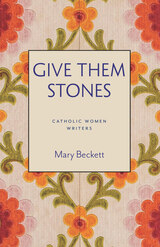 Give Them Stones
Mary Beckett
Catholic University of America Press, 2024 Give Them Stones follows Martha Murtagh’s life in Belfast during the Troubles. A working-class Catholic wife and mother, Martha struggles to find work and safe shelter for her children amid growing civil strife. Having renounced an education in order to financially support her family and living in one of the most precarious parts of the city, Martha discovers her passion for home-baking. Her bread provides sustenance and community for her neighbors, and for Martha herself it brings economic independence and spiritual communion.
Mary Beckett’s novel is a skillfully written, moving narrative of one woman’s coming of age amid violence. It won the Sunday Tribune Arts Award in 1987 then fell out of print by the end of the century, while male writers of the Troubles rose to prominence. This restored edition brings Give Them Stones to a new readership, for whom Martha’s struggle for financial and personal independence remains an acutely relevant meditation on the burdens carried by women during war and the redemptive power of simple things.
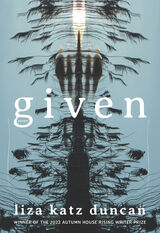 Given
Liza Katz Duncan
Autumn House Press, 2023 A tender poetry collection considering home, family, and personal and ecological loss.
Liza Katz Duncan’s debut collection is a poignant exploration of the unpredictable shifts that shape our lives. Given considers the notions of home and family and how to survive the changes and losses associated with both. Duncan conjures her home, the New Jersey Shore, in clear and unsentimental lines: “Call of the grackle, / whine of the turkey vulture. Blighted clams, // raw and red in their half-shells.” Duncan’s poems also explore the devastation brought to this place and its community by Superstorm Sandy and the continued impacts of climate change.
Interwoven into this thread is the narrator’s miscarriage; the parallels between the desecrated landscape and the personal catastrophe further contribute to the layers of tenderness in this collection, as Duncan urges us to remember and to witness. Despite tragedy and loss, Given is imbued with persistent, dogged hope, showing how survival persists amongst the wreckage, and from this debris is a path towards healing our grief.
Given was the winner of 2022 Autumn House Rising Writer Prize in Poetry.
 The Given and the Made: Strategies of Poetic Redefinition
Helen Vendler
Harvard University Press, 1995 Join Professor Helen Vendler in her course lecture on the Yeats poem "Among School Children". View her insightful and passionate analysis along with a condensed reading and student comments on the course.
How does a poet repeatedly make art over a lifetime out of an arbitrary assignment of fate? By asking this question of the work of four American poets--two men of the postwar generation, two young women writing today--Helen Vendler suggests a fruitful way of looking at a poet's career and a new way of understanding poetic strategies as both mastery of forms and forms of mastery.
Fate hands every poet certain unavoidable "givens." Of the poets Vendler studies, Robert Lowell sprang from a family famous in American and especially New England history; John Berryman found himself an alcoholic manic-depressive; Rita Dove was born black; Jorie Graham grew up trilingual, with three words for every object. In Vendler's readings, we see how these poets return again and again to the problems set out by their givens, and how each invents complex ways, both thematic and formal, of making poetry out of fate.
Compelling for its insights into the work of four notable poets, this book by a leading critic of poetry is also invaluable for what it has to tell us about the poetic process--about how art copes with the obdurate givens of life, and about the conflict in art between the whim of fate and the artist's will to choose.
Given Ground
Ann Pancake
University Press of New England, 2008 Departing from Appalachia's 150-year-old literary legacy of formula and caricature, West Virginia native Ann Pancake uses the texture of language, an intense attention to place, and complexity of characterization to recreate the region -- its tragic history and fragile culture, the interior landscapes of its people, and their deep rootedness in a threatened land. Her characters, already marginalized economically and socially, confront what many perceive as an invading outside culture, enduring and at times transcending the loss of their "place," both literally and figuratively. Their stories undermine the assumption that just because people don't articulate what happens inside them, nothing much is happening at all.
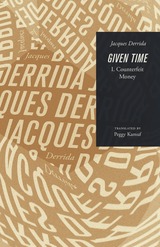 Given Time: I. Counterfeit Money
Jacques Derrida
University of Chicago Press, 1992 Is giving possible? Is it possible to give without immediately entering into a circle of exchange that turns the gift into a debt to be returned? This question leads Jacques Derrida to make out an irresolvable paradox at what seems the most fundamental level of the gift's meaning: for the gift to be received as a gift, it must not appear as such, since its mere appearance as gift puts it in the cycle of repayment and debt.
Derrida reads the relation of time to gift through a number of texts: Heidegger's Time and Being, Mauss's The Gift, as well as essays by Benveniste and Levi-Strauss that assume Mauss's legacy. It is, however, a short tale by Baudelaire, "Counterfeit Money," that guides Derrida's analyses throughout. At stake in his reading of the tale, to which the second half of this book is devoted, are the conditions of gift and forgiveness as essentially bound up with the movement of dissemination, a concept that Derrida has been working out for many years.
For both readers of Baudelaire and students of literary theory, this work will prove indispensable.
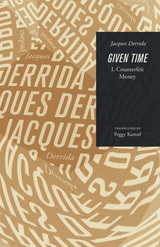 Given Time: I. Counterfeit Money
Jacques Derrida
University of Chicago Press, 1992 Is giving possible? Is it possible to give without immediately entering into a circle of exchange that turns the gift into a debt to be returned? This question leads Jacques Derrida to make out an irresolvable paradox at what seems the most fundamental level of the gift's meaning: for the gift to be received as a gift, it must not appear as such, since its mere appearance as gift puts it in the cycle of repayment and debt.
Derrida reads the relation of time to gift through a number of texts: Heidegger's Time and Being, Mauss's The Gift, as well as essays by Benveniste and Levi-Strauss that assume Mauss's legacy. It is, however, a short tale by Baudelaire, "Counterfeit Money," that guides Derrida's analyses throughout. At stake in his reading of the tale, to which the second half of this book is devoted, are the conditions of gift and forgiveness as essentially bound up with the movement of dissemination, a concept that Derrida has been working out for many years.
For both readers of Baudelaire and students of literary theory, this work will prove indispensable.
 Given Time II
Jacques Derrida
University of Chicago Press The long-awaited conclusion to Derrida’s seminar on the gift and time.
In 1991, Jacques Derrida published the first half of a seminar delivered from 1978 to 1979 on gifts and time, but the second installment (though expected) was not completed in his lifetime. Given Time II completes the seminar with eight sessions that showcase Derrida’s most advanced work on the problematic of the gift in Heidegger, with deep dives into some of the most difficult texts in the Heideggerian corpus, including “The Origin of the Work of Art,” “The Thing,” and “On Time and Being.”
Beyond Heidegger, Derrida engages Claude Lévi-Strauss, Marcel Mauss, Maurice Blanchot, Jacques Lacan, and others on the act of giving and receiving, the sacrificial gift, and more. Throughout, Derrida identifies a paradox of gift giving: for the gift to be received as a gift, it must not appear as such, since gifts often involve a cycle of debt and repayment. Given Time II is a uniquely Derridean treatment of an important subject in the work of Heidegger and beyond.
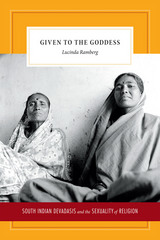 Given to the Goddess: South Indian Devadasis and the Sexuality of Religion
Lucinda Ramberg
Duke University Press, 2014 Who and what are marriage and sex for? Whose practices and which ways of talking to god can count as religion? Lucinda Ramberg considers these questions based upon two years of ethnographic research on an ongoing South Indian practice of dedication in which girls, and sometimes boys, are married to a goddess. Called devadasis, or jogatis, those dedicated become female and male women who conduct the rites of the goddess outside the walls of her main temple and transact in sex outside the bounds of conjugal matrimony. Marriage to the goddess, as well as the rites that the dedication ceremony authorizes jogatis to perform, have long been seen as illegitimate and criminalized. Kinship with the goddess is productive for the families who dedicate their children, Ramberg argues, and yet it cannot conform to modern conceptions of gender, family, or religion. This nonconformity, she suggests, speaks to the limitations of modern categories, as well as to the possibilities of relations—between and among humans and deities—that exceed such categories.
Given Up for You: A Memoir of Love, Belonging, and Belief
Erin O. White
University of Wisconsin Press, 2018 In this candid and revelatory memoir, Erin O. White shares her hunger for both romantic and divine love, and how these desires transformed her life. In the late 1990s, she spent Saturday nights with her girlfriend and Sunday mornings in Catholic confirmation classes. But when the Church closed its doors to her, she was faced with a question: What does a lesbian believer do with her longing for God? Given Up for You explores these yearnings with bittersweet conviction, plumbing the depths of heart and soul.
 Given World and Time: Temporalities in Context
Tyrus Miller
Central European University Press, 2008 The interconnections of time with historical thought and knowledge have come powerfully to the fore since the 1970s. An international group of scholars, from a range of fields including literary theory, history of ideas, cultural anthropology, philosophy, intellectual history and theology, philology, and musicology, address the matter of time and temporalities.The volume's essays, divided into four main topical groups question critically the key problem of context, connecting it to the problem of time. Contexts, the essays suggest, are not timeless. Time and its contexts are only partly "given" to us: to the primordial donations of time and world correspond our epistemic, moral, and practical modes of receiving what has been granted. The notion of context may have radically different parameters in different historical, cultural, and disciplinary situations. Topics include the deep antiquity, and the timeless time of eternity, as well as formal philosophies of history and the forms of histories implicit in individual and community experience. The medium specific use of time and history are examined with regard to song, image, film, oral narration, and legal discourse.
Giving Academic Presentations
Susan M. Reinhart
University of Michigan Press, 2002 Giving Academic Presentations provides guidance on academic-style presentations for ESL students and native speakers. One goal of this text is to make presenters aware that giving an effective presentation requires mastery of a broad range of skills. Students will learn how to choose an appropriate topic, create effective visuals, and design a speech opening.
This textbook provides:
*helpful analyses of speeches
*examination of major speech types, accompanying organizational strategies, and related language use
*tips for improving nonverbal behavior
*suggestions for speaker-listener interaction
*an analysis of ways to qualify claims and strategies for improving them
*opportunities for evaluating one's work and the work of others.
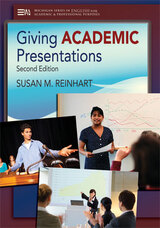 Giving Academic Presentations, Second Edition
Susan M. Reinhart
University of Michigan Press, 2013 Giving Academic Presentations provides guidance on academic-style presentations for university students. A goal of the text is to make presenters aware that giving an effective academic presentation requires mastery of a broad range of skills. The presentation genres addressed in the book are: making introductions, describing and comparing objects, explaining a process, defining a concept, and giving a problem-solution speech. Among the many academic skills and concepts addressed in the book are: - Examination of major speech types and the accompanying organizational strategies
- Discussion of speech overviews and suggestions for designing them and creating visuals to accompany them
- Suggestions for speaker-listener interaction including checking for understanding, soliciting questions from the audience, preparing for and responding to questions, and interrupting the speaker to ask questions or request clarification
- Discussion of the importance of using evidence in academic speaking and the advantages of using certain types of evidence
- Suggestions of ways to qualify claims and strategies for making weaker or stronger claims
- Strategies and practice to improve pausing, stress, and intonation
- Practical advice about preparing and practicing speeches
- Opportunities for presenters to evaluate their own and others’ work
The Second Edition includes many new tasks and additional speeches; more attention to working with and using visuals; information about computer projection and using PowerPoint; and new sections on presenting biographical information, referring to handouts, and giving research presentations.
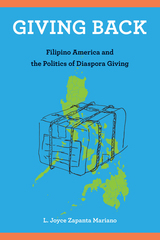 Giving Back: Filipino America and the Politics of Diaspora Giving
L. Joyce Zapanta Mariano
Temple University Press, 2021 Many Filipino Americans feel obligated to give charitably to their families, their communities, or social development projects and organizations back home. Their contributions provide relief to poor or vulnerable Filipinos, and address the forces that maintain poverty, vulnerability, and exploitative relationships in the Philippines. This philanthropy is a result of both economic globalization and the migration of Filipino professionals to the United States. But it is also central to the moral economies of Filipino migration, immigration, and diasporic return. Giving-related practices and concerns—and the bonds maintained through giving—infuse what it means to be Filipino in America. Giving Back shows how integral this system is for understanding Filipino diaspora formation. Joyce Mariano “follows the money” to investigate the cultural, social, economic, and political conditions of diaspora giving. She takes an interdisciplinary approach to reveal how power operates through this charity and the ways the global economic and cultural dimensions of this practice reinforce racial subordination and neocolonialism. Giving Back explores how this charity can stabilize overlapping systems of inequality as well as the contradictions of corporate social responsibility programs in diaspora.
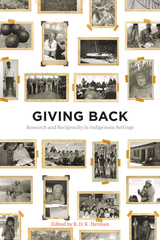 Giving Back: Research and Reciprocity in Indigenous Settings
R. D. K. Herman
Oregon State University Press, 2018 How can scholars best give back to the communities in which they conduct their research? This critical question arises from a long history of colonial scholarship that exploited study subjects by taking knowledge without giving anything in return. It is a problem faced by all field researchers, even those working in their own communities.
Over the past several decades—and especially since the evolution of feminist methodologies, participatory research, and the post-colonial turn in the 1990s—there have been calls for research to be less exploitative, but also for researchers and for the research itself to give something back. Giving Back: Research and Reciprocity in Indigenous Settings addresses the need for reciprocity in the research process, especially (though not exclusively) in regard to Indigenous Communities.
The twelve case studies in this volume demonstrate that giving back can happen through the research itself – through the careful framing of questions, co-production of knowledge, and dissemination of results – but also through the day-to-day actions and attitudes of researchers that inevitably occur in the field. It can range from everyday give and take, to the sharing of research materials, to larger and longer-term engagements.
As practitioners of community-based research gain greater awareness of these issues, scholars and institutions need guidance and strategies for ensuring reciprocity in the research process. This volume presents a variety of situations from a wide range of research contexts, discussing what has and hasn’t worked, and exploring what issues remain.
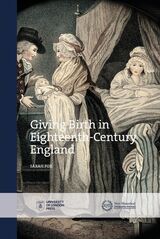 Giving Birth in Eighteenth-Century England
Sarah Fox
University of London Press, 2022 A history of childbirth in the eighteenth century as told by women.
This fascinating new book radically rewrites all that we know about eighteenth-century childbirth by placing women’s voices at the center of the story. Examining childbirth from the perspective of the birthing woman, this research offers new perspectives on the history of the family, the social history of medicine, community and neighborhood studies, and the study of women’s lives in eighteenth-century England.
From “quickening” through to “confinement,” “giving caudle,” delivery, and “lying-in,” birth was once a complex ritual that involved entire communities. Drawing on an extensive and under-researched body of materials, such as letters, diaries, and recipe books, this book offers critical new perspectives on the history of the family, community, and the lives of women in the coming age of modern medicine. It unpacks the rituals of contemporary childbirth—from foods traditionally eaten before and after birth, birthing clothing, and how a woman’s relationship with her family, husband, friends, and neighbors changed during and after pregnancy. In this important and deeply moving study, we are invited onto a detailed and emotional journey through motherhood in an age of immense socio-cultural and intellectual change.
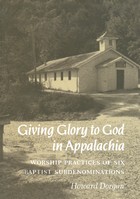 Giving Glory to God in Appalachia: Worship Practices of Six Baptist Subdenominations
Howard Dorgan
University of Tennessee Press, 1990 In Giving Glory to God in Appalachia, Howard Dorgan explores the worship practices of Primitive, Regular, Old Regular, Union, Missionary, and Free Will Baptists. The worship practices of the denominations under consideration are varied and often exuberant, and Dorgan's writing is highly evocative, conveying in rich detail the joy and pathos of worship in these mountain churches.
As Dorgan states in the introduction, he is less concerned with academic theorizing and more concerned with presenting a vivid, firsthand account of all that he has seen and heard. And in the nearly fifteen years he spent researching his book, Dorgan saw and heard quite a lot: spirited, vociferous sermons, creek baptisms, foot washings, homecomings, dinners on the ground, and evangelistic radio broadcasts. Dorgan's prose is at its most enchaining when he presents tableaus of these phenomena: a foot washing precipitates the erasure of interpersonal turmoil between two women; a preacher uses his lively mode of sermonic delivery to orchestrate the rapturous shouts and "hollers" of a group of women; a radio evangelist exhorts a recent widower to accept salvation. The wonderful pictures interspersed throughout the book and the transcription of sermons help to further reify the worship scenes that Dorgan describes.
At times, Dorgan's prose is intensely personal. Dorgan is always aware that he is writing about sets of shared values and worship practices that mean a great deal to the congregations he is studying, and Dorgan treats his subjects and their beliefs with tremendous sensitivity and respect. Ultimately, Dorgan is writing about people and the ways in which they invest their lives with meaning and purpose. This imbues Giving Glory to God in Appalachia with a universal appeal: even readers who find the religious settings in the book completely alien will be able to sympathize with the congregations' search for meaning.
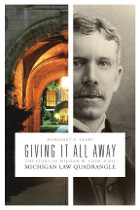 Giving It All Away: The Story of William W. Cook and His Michigan Law Quadrangle
Margaret A. Leary
University of Michigan Press, 2011 “Margaret Leary's carefully researched book illuminates a complex man who marked his university in a truly enduring way."
---Francis X. Blouin Jr., Director, Bentley Historical Library, and Professor, School of Information and Department of History, University of Michigan
“Generations of Michigan Law grads have passed on myths about their generous but eccentric benefactor. . . . Now Margaret Leary has given us the real story, and it reads like a gripping whodunit."
---Theodore J. St. Antoine, James E. and Sarah A. Degan Professor Emeritus of Law and Past Dean, University of Michigan Law School
“In an absorbing book, Margaret Leary unstintingly investigates unpublished, archival material to unravel enigmas surrounding William Wilson Cook. She brings to life Cook's brilliant interactions with powerful moguls of the early twentieth century as she traces his lofty, philanthropic mission to elevate the legal profession."
---Ilene H. Forsyth, Arthur F. Thurnau Professor of the History of Art, emerita, University of Michigan
William W. Cook, born in 1858 and a graduate of the University of Michigan and of its law school, made his fortune by investing in the burgeoning telegraph and communications industry, as well as in representing the Mackay Company in their frequent tumultuous battles with Western Union and the U.S. government. Though Cook entered New York society and never returned to Michigan after receiving his law degree, he decided not just to give his alma mater the finest physical facility of any existing law school, but to donate permanent resources that would permit the law school to engage in groundbreaking legal research. However, his generosity proved controversial and eventually very litigious. Margaret A. Leary places Cook's story in the rich social and cultural context of his time and paints a fascinating portrait of a complex figure whose legacy continues to shape the University of Michigan.
Cover photographs: (left) Gregory Fox Photography; (right) Ann B. Cook collection, photo by Russell R. Serbay
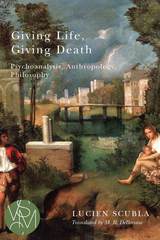 Giving Life, Giving Death: Psychoanalysis, Anthropology, Philosophy
Lucien Scubla
Michigan State University Press, 2016 Although women alone have the ability to bring children into the world, modern Western thought tends to discount this female prerogative. In Giving Life, Giving Death, Lucien Scubla argues that structural anthropology sees women as objects of exchange that facilitate alliance-building rather than as vectors of continuity between generations. Examining the work of Lévi-Strauss, Freud, and Girard, as well as ethnographic and clinical data, Giving Life, Giving Death seeks to explain why, in constructing their master theories, our greatest thinkers have consistently marginalized the cultural and biological fact of maternity. In the spirit of Freud’s Totem and Taboo, Scubla constructs an anthropology that posits a common source for family and religion. His wide-ranging study explores how rituals unite violence and the sacred and intertwine the giving of death and the giving of life.
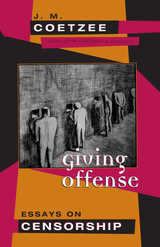 Giving Offense: Essays on Censorship
J. M. Coetzee
University of Chicago Press, 1996 Winner of the 2003 Nobel Prize in Literature.
J. M. Coetzee presents a coherent, unorthodox analysis of censorship from the perspective of one who has lived and worked under its shadow. The essays collected here attempt to understand the passion that plays itself out in acts of silencing and censoring. He argues that a destructive dynamic of belligerence and escalation tends to overtake the rivals in any field ruled by censorship.
From Osip Mandelstam commanded to compose an ode in praise of Stalin, to Breyten Breytenbach writing poems under and for the eyes of his prison guards, to Aleksander Solzhenitsyn engaging in a trial of wits with the organs of the Soviet state, Giving Offense focuses on the ways authors have historically responded to censorship. It also analyzes the arguments of Catharine MacKinnon for the suppression of pornography and traces the operations of the old South African censorship system.
"The most impressive feature of Coetzee's essays, besides his ear for language, is his coolheadedness. He can dissect repugnant notions and analyze volatile emotions with enviable poise."—Kenneth Baker, San Francisco Chronicle Book Review
"Those looking for simple, ringing denunciations of censorship's evils will be disappointed. Coetzee explicitly rejects such noble tritenesses. Instead . . . he pursues censorship's deeper, more fickle meanings and unmeanings."—Kirkus Reviews
"These erudite essays form a powerful, bracing criticism of censorship in its many guises."—Publishers Weekly
"Giving Offense gets its incisive message across clearly, even when Coetzee is dealing with such murky theorists as Bakhtin, Lacan, Foucault, and René; Girard. Coetzee has a light, wry sense of humor."—Bill Marx, Hungry Mind Review
"An extraordinary collection of essays."—Martha Bayles, New York Times Book Review
"A disturbing and illuminating moral expedition."—Richard Eder, Los Angeles Times Book Review
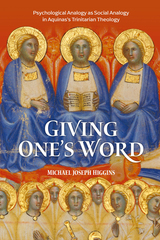 Giving One's Word: Interpersonal Love, Knowledge, and Self-Giving in Aquinas's Psychological Analogy for the Trinity
Michael Joseph Higgins
Catholic University of America Press According to the vast majority of recent Trinitarian theologians, to believe in the Trinity is to believe that God is Love: it is to believe in three divine Persons who know each other, love each other, and give themselves to each other. St. Thomas Aquinas is rarely invoked as a patron of such a social approach to the Trinity. Aquinas’s Trinitarian theology, after all, revolves around the immanent processions of a Word and Love within the unity of the divine essence. Many have assumed that this “psychological analogy” is removed from—or even incompatible with—interpersonal knowledge, love, and self-giving. Some have concluded that Aquinas is therefore unable to accommodate a social Trinity. Others have argued that he is open to a social Trinity, but that his psychological categories need to be complemented by a more overtly social framework. This study, however, shows that these psychological categories themselves are shot through with interpersonal knowledge, love, and self-giving.
More specifically, Aquinas’s psychological analogy is often accused of emphasizing the unity of the divine essence at the expense of the distinction of the divine Persons. In fact, it emphasizes distinction just as basically as it emphasizes unity, and it ensures that the distinction between the divine Persons is a radical one. Similarly, it is criticized for being a matter of self-knowledge instead of interpersonal knowledge, self-love instead of interpersonal love, and self-regard instead of self-giving. In fact, it is a matter of self-knowledge as interpersonal knowledge, self-love as interpersonal love, and self-regard as self-giving: it ensures that there can be no self-knowledge or self-love in God that is not just as basically interpersonal knowledge, interpersonal love, and interpersonal self-giving. Aquinas’s psychological analogy, then, does not shut down the possibility of interpersonal Trinity. Nor does it need to be complemented from the outside by an interpersonal Trinity. Instead, it contains within itself an intensely interpersonal Trinity.
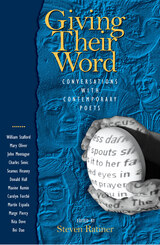 Giving Their Word: Conversations with Contemporary Poets
Steven Ratiner
University of Massachusetts Press, 2002 Based on a three-year series of interviews conducted by Steven Ratiner for the Christian Science Monitor, this book offers extended conversations with twelve of the most influential poets writing today. Their comments are wonderfully detailed, refreshingly honest, and provide the sort of intimate introduction to both poet and text that readers are rarely privileged to enjoy. Included are conversations with William Stafford, Mary Oliver, John Montague, Charles Simic, Seamus Heaney, Donald Hall, Maxine Kumin, Carolyn Forché, MartÃn Espada, Marge Piercy, Rita Dove, and Bei Dao. In the book's closing interview, Steven Ratiner makes a return visit to Donald Hall's New Hampshire farm shortly before the publication of Hall's collection Without, which focused on the death of his wife, poet Jane Kenyon.
Giving their word is what poets do; it is their stock-in-trade, their daily bread. In the hands of the most accomplished, a poet's words are transformed into a kind of window: looking inward toward the territory of memory, dream, personal mythology and opening out onto the landscape of the shared world where life and work are rooted. For each poet there is an intricate relationship between these two realms and poetry's third domain, the language that bridges both experiences and becomes the body of the poem. Giving Their Word shows us that the poet's fidelity to that relationship sustains his or her development over time, urges the writing toward new levels of discovery, and bestows on readers that most prized of commodities: a feeling of the authentic.
For poets, students of poetry, and that far-flung community of readers for whom the contemporary poem still provides a journey worth taking, this book will present a host of pleasures. Giving Their Word enlarges the frame through which we view the poet's text and yields significant insights into the craft and character of each of these writers.
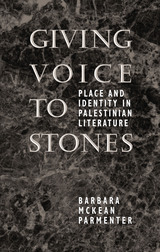 Giving Voice to Stones: Place and Identity in Palestinian Literature
By Barbara McKean Parmenter
University of Texas Press, 1994 "A struggle between two memories" is how Palestinian poet Mahmud Darwish describes the conflict between Palestinians and Israelis. Within this struggle, the meanings of land and home have been challenged and questioned, so that even heaps of stones become points of contention. Are they proof of ancient Hebrew settlement, or rubble from a bulldozed Palestinian village? The memory of these stones, and of the land itself, is nurtured and maintained in Palestinian writing and other modes of expression, which are used to confront and counter Israeli images and rhetoric. This struggle provides a rich vein of thought about the nature of human experience of place and the political uses to which these experiences are put. In this book, Barbara McKean Parmenter explores the roots of Western and Zionist images of Palestine, then draws upon the work of Darwish, Ghassan Kanafani, and other writers to trace how Palestinians have represented their experience of home and exile since the First World War. This unique blending of cultural geography and literary analysis opens an unusual window on the struggle between these two peoples over a land that both divides them and brings them together.
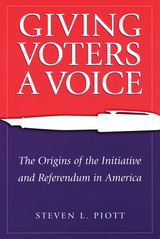 Giving Voters a Voice: The Origins of the Initiative and Referendum in America
Steven L. Piott
University of Missouri Press, 2003
Giving Voters a Voice studies the origins of direct legislation, one of the most important political reforms enacted during the Progressive Era. Steven L. Piott begins with the source of the idea in the United States and proceeds to the earliest efforts aimed at generating a national movement to expand the parameters of popular democracy in the 1890s. He then broadens his examination to include the unique ways in which twenty-two states came to enact legislation allowing for the statewide initiative and referendum between 1898 and 1918. The book’s appendix offers the only comprehensive listing of all the ballot propositions and vote totals for the period.
Most historians of the Progressive Era have concluded that narrow self-interest prevented labor, farmers, and the middle class from working together to achieve important reforms. Giving Voters a Voice demonstrates that middle-class reformers, trade unionists, and farm organizers formed loose political coalitions and directed grass-roots campaigns to gain passage of initiative and referendum statutes because direct legislation offered the best means to correct political, economic, and social abuses. But there was more than just a shared sense of common interest that brought these seemingly oppositional groups together. What really made them willing to speak, lobby, and work together was quite simply the frustration felt by voters who sensed that they had become economically dependent and politically powerless.
Each state in which proponents conducted an active campaign to win adoption of direct legislation is studied in detail. The book analyzes the crucial roles played by individuals who led the movement to empower voters by enabling them to enact or veto legislation directly, and reveals the arguments, the stumbling blocks, and political compromises that are often slighted in generalized overviews. Each state possessed its own political dynamic. Giving Voters a Voice offers the reader a richness of detail and a completeness of coverage not found elsewhere.
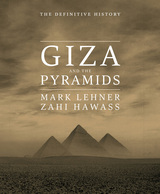 Giza and the Pyramids: The Definitive History
Mark Lehner and Zahi Hawass
University of Chicago Press, 2017 The pyramids of Giza have stood for more than four thousand years, fascinating generations around the world. We think of the pyramids as mysteries, but the stones, hieroglyphs, landscape, and even layers of sand and debris around them hold stories. In Giza and the Pyramids: The Definitive History, two of the world’s most eminent Egyptologists, Mark Lehner and Zahi Hawass, provide their unique insights based on more than four decades of excavating and studying the site.
The celebrated Great Pyramid of Khufu, or Cheops, is the only one of the seven wonders of the ancient world still standing, but there is much more to Giza. Though we imagine the pyramids of Khufu, Khafre, and Menkaure and the Sphinx rising from the desert, isolated and enigmatic, they were once surrounded by temples, noble tombs, vast cemeteries, and even harbors and teeming towns. This unparalleled account describes that past life in vibrant detail, along with the history of exploration, the religious and social function of the pyramids, how the pyramids were built, and the story of Giza before and after the Old Kingdom. Hundreds of illustrations, including vivid photographs of the monuments, excavations, and objects, as well as plans, reconstructions, and images from remote-controlled cameras and laser scans, help bring these monuments to life.
Through the ages, Giza and the pyramids have inspired extraordinary speculations and wild theories, but here, in this definitive account, is the in-depth story as told by the evidence on the ground and by the leading authorities on the site.
 Glacier National Park: A Culmination of Giants
George Bristol
University of Nevada Press, 2017 Bristol takes readers on a journey through the history of Glacier National Park, beginning over a billion years ago from the formation of the Belt Sea, to the present day climate-changing extinction of the very glaciers that sculpted most of the wonders of its landscapes. He delves into the ways in which this area of Montana seemed to have been preparing itself for the coming of humankind through a series of landmass adjustments like the Lewis Overthrust and the ice ages that came and went.
First there were tribes of Native Americans whose deep regard for nature left the landscape intact. They were followed by Euro-American explorers and settlers who may have been awed by the new lands, but began to move wildlife to near extinction. Fortunately for the area that would become Glacier, some began to recognize that laying siege to nature and its bounties would lead to wastelands.
Bristol recounts how a renewed conservation ethic fostered by such leaders as Emerson, Thoreau, Olmstead, Muir, and Teddy Roosevelt took hold. Their disciples were Grinnell, Hill, Mather, Albright, and Franklin Roosevelt, and they would not only take up the call but rally for the cause. These giants would create and preserve a park landscape to accommodate visitors and wilderness alike.
 The Glacier Park Reader
David Stanley
University of Utah Press, 2017 The first and only anthology of key writings about Glacier National Park, this comprehensive collection ranges from Native American myths to early exploration narratives to contemporary journeys, from investigations of the park’s geology and biology to hair-raising encounters with wild animals, fires, and mountain peaks.
Soon after the park was established in 1910, visitors began to arrive, often with pen in hand. They included such well-known authors as mystery writer Mary Roberts Rinehart, historian Agnes C. Laut, fiction writer Dorothy Johnson, humorist Irvin S. Cobb, poet Vachel Lindsay, and artist Maynard Dixon—all featured in the book. Readers will encounter colorful characters who lived in and around the park in its early days, including railroad magnate and conservationist Louis Hill, renegade ranger and poacher Joe Cosley, bootlegger Josephine Doody, and old-time cowboy guide Jim Whilt. Blackfeet and Kalispel myths, politically charged descriptions by early explorers such as John Muir and George Bird Grinnell, and full-color reproductions of the illustrated letters of cowboy artist and Glacier resident Charles M. Russell are also included.
Copublished with the Glacier National Park Conservancy.
The Glacier National Park Conservancy preserves the Park for generations to come. Learn more about our work at www.glacier.org
Part of the National Park Reader series, edited by Lance Newman and David Stanley
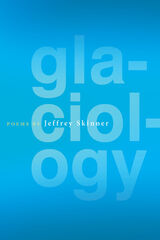 Glaciology
Jeffrey Skinner
Southern Illinois University Press, 2013 “Once I walked a thin rail through a glacier” begins “Shattered Bio,” the first poem in Glaciology, Jeffrey Skinner’s latest collection of poetry. Filled with images that slide into one another in a dreamlike way, from the “squeak of pine trees in a forest” to “pinwheel, the baby’s hand,” the poem provides a precise way of seeing how layers of tenderness and danger melt into one another, inhabiting the same world.
At the center of the book, the eighteen-part title poem “Glaciology” takes readers to the core of misunderstandings as it juxtaposes the work of a glaciologist with fractured language, misread cues, and a literalness that defies conventional explanation. The lives of the glaciers are reported with a careful, scientific language that keeps readers emotionally at bay from the effects of their demise, and the speaker comments, “I consider language / mistreated these days, asked to explain itself / to justify at the same time it bears / meaning, to own up / to creation at the moment of use / only, and only that meaning.”
The third section of the book further explores the tensions of life and death in ways both whimsical—by focusing on a fly, a vintage clock, rabbits, and Poland, among other subjects—and deeply serious. In the long poem “Event Horizon,” Skinner takes readers into an accident and its aftermath, which brushes too close to death. By the end of the book, however, a new focus comes into view with the birth of a grandchild in “All Things Move toward Disorder Except the Newly Created.”
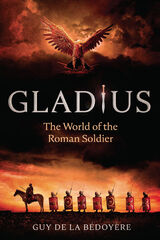 Gladius: The World of the Roman Soldier
Guy de la Bédoyère
University of Chicago Press, 2020 Gladius delivers a stunning ground-level recreation of what it was like to be a soldier in the fighting force that made the Roman Empire.
Empire.
The Roman army was the greatest fighting machine in the ancient world. More than that, it was the single largest organization in Western antiquity, taking in members from all classes, from senators to freed slaves. The Roman Empire depended on its army not just to win its wars, defend its frontiers, and control the seas, but to act as the very engine of the state.
In Gladius, Guy de la Bédoyère takes us straight to the heart of what it meant to be a part of the Roman army. Rather than a history of the army itself, or a guide to military organization and fighting methods, this book is a ground-level recreation of what it was like to be a soldier in the army that made the empire. Surveying numerous aspects of life in the Roman army between 264 BCE and 337 CE, Gladius—the Latin word for sword—draws not only on the words of famed Roman historians, but also those of the soldiers themselves, as recorded in their religious dedications, tombstones, and even private letters and graffiti. Gladius reveals the everyday life of these soldiers and their families, whether stationed in a bleak frontier garrison in Britain or North Africa, tasked with guarding the emperor in Rome, fighting on foreign battlefields, mutinying over pay, marching in triumph, throwing their weight around on city streets, or enjoying esteem in honorable retirement.
By illuminating the history of one organization that reflected all corners of the Roman world, Gladius gives us a portrait of an ancient society that is unprecedented in both its broad sweep and gritty intimacy.
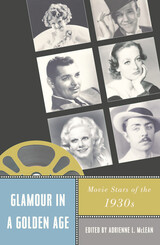 Glamour in a Golden Age: Movie Stars of the 1930s
McLean, Adrienne L
Rutgers University Press, 2010 Shirley Temple, Clark Gable, Errol Flynn and Olivia de Havilland, Fred Astaire and Ginger Rogers, Bette Davis, Joan Crawford and Norma Shearer, Marlene Dietrich and Greta Garbo, William Powell and Myrna Loy, Jean Harlow, and Gary Cooper-Glamour in a Golden Age presents original essays from eminent film scholars that analyze movie stars of the 1930s against the background of contemporary American cultural history.
Stardom is approached as an effect of, and influence on, the particular historical and industrial contexts that enabled these actors and actresses to be discovered, featured in films, publicized, and to become recognized and admired-sometimes even notorious-parts of the cultural landscape. Using archival and popular material, including fan and mass market magazines, other promotional and publicity material, and of course films themselves, contributors also discuss other artists who were incredibly popular at the time, among them Ann Harding, Ruth Chatterton, Nancy Carroll, Kay Francis, and Constance Bennett.
The Glance of Countess Hahn-Hahn (down the Danube)
Peter Esterhazy
Northwestern University Press, 1999 Winner of the 2004 German Publishers and Booksellers Association Peace Prize
In The Glance of Countess Hahn-Hahn (down the Danube), Péter Esterházy tells the story of a professional traveler, commissioned--like Marco Polo by Kublai Khan--to undertake a voyage of discovery and prepare a travelogue. Communicating the details of his journey through terse and surreal telegrams, the Traveller weaves a rich tapestry of narratives, evoking the ethereal past and the precarious present of a disappearing world.
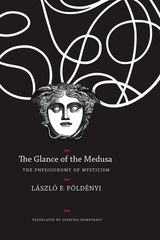 The Glance of the Medusa: The Physiognomy of Mysticism
László F. Földényi
Seagull Books, 2018 In The Glance of the Medusa, Lászó F. Földényi offers a mesmerizing examination of the rich history of European culture through the lens of mythology and philosophy. Embracing the best traditions of essay writing, this volume invites readers on a spiritual and intellectual adventure. The seven essays bear testimony to Földényi’s encyclopedic knowledge and ask whether it is possible to overcome our fear of passing away. In doing so, they illuminate moments of mystical experience viewed in a historical perspective while inviting readers to engage with such moments in the present by immersing themselves into the process of reading and thinking.
Rather than providing firm answers to burning questions, The Glance of the Medusa highlights the limits of definition, conjuring up situations in which Man partakes of unutterable experiences—such as passion, pleasure, fear, poetry, or disgust—suggesting that moments of ecstasy cannot be pinned down or captured, only drawn a little closer.
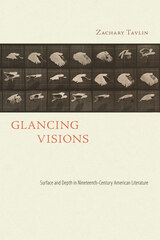 Glancing Visions: Surface and Depth in Nineteenth-Century American Literature
Zachary Tavlin
University of Alabama Press, 2023 How the “glance” rather than the “gaze” in nineteenth-century literature and art anticipates the turn to modernism
The sweeping vantages that typify American landscape painting from the nineteenth century by Thomas Cole and other members of the Hudson River School are often interpreted for their geopolitical connotations, as visual attempts to tame the wild, alleviating fears of a savage frontier through views that subdue the landscape to the eye. But many literary figures of the era display a purposeful disdain for the “possessive gaze,” signaling a preference for subtle glances, often informed by early photography, Impressionism, new techniques in portraiture, and, soon after, the dawn of cinema. The visual subjectivities and contingencies introduced by these media made room for a visual counternarrative, one informed by a mode of seeing that moves fast and lightly across the surface of things.
Tavlin probes Nathaniel Hawthorne’s theory of the imagination at a turning point in the history of photography, when momentary glances take on new narrative potentials. The poetry of Frances Ellen Watkins Harper toggles between gazes and glances, unsettling two competing forms of racialized seeing as they pertain to nineteenth-century Black life and racial hierarchies—the sentimental gaze and the slave trader’s glance—highlighting the life-and-death stakes of looking and looking away. Emily Dickinson’s syntactical oddities and her lifelong process of stitching and unstitching the poems that constitute her corpus all derive from a commitment to immanence associated with animal perception. Tavlin investigates, as well, Henry James’s vexed relationship to painterly Impressionism and William Carlos Williams’s imagist poetics as a response to early cinema’s use of the cut as the basis for a new visual grammar.
Each of these literary artists—via their own distinctive sensibilities and the artistic or technological counterparts that informed them—refuse the authoritative, all-possessive gaze in favor of the glance, a mode of seeing, thinking, and being that made way for the twentieth century’s twist on modernity. Glancing Visions will be of interest to scholars and teachers of American literature and literary history, visual culture, visual theory, aesthetic philosophy, and phenomenology.
 Glanz und Abglanz: Two Centuries of German Studies in the University of London
Edited by John L. Flood and Anne Simon
University of London Press, 2017 In 1943, in the midst of a London still reeling from the Blitz, initial plans were laid for an Institute devoted to rebuilding relations between English and German scholars and academics once hostilities had ceased. Established in 1950, the Institute served for more than half a century as a research centre and focal point for researchers the world over. However, German Studies in London have a much older tradition which goes back almost two centuries. Glanz und Abglanz tells the fascinating tale of German Studies in London from its beginnings at the ‘godless institution of Gower Street’, and the remarkable personalities whose energy and commitment ensured that the discipline flourished. The story is told through two essays: ‘Taught by Giants’ outlining the history of the subject in London from 1826, and ‘“Sehr schön, Piglet?” “Ja, Pooh.”’ following the development of the Institute of Germanic Languages and Literatures and showcasing its remarkable library. The volume is rounded off with an account of the magnificent collection of rare books assembled by two of the personalities, Robert Priebsch (1866–1935) and August Closs (1898–1990). John L. Flood has been associated with the University of London for more than fifty years, having taught German at King’s College from 1965 until 1979, when he was appointed Deputy Director of the Institute of Germanic Studies. Since his retirement in 2002, Professor Flood has been an Honorary Fellow of the Institute. Anne Simon took her PhD at the University of London, then became Lecturer in Medieval German at the University of Bristol from 1992 to 2011. She held a temporary Lectureship at the Institute of Germanic & Romance Studies, London, in 2012–13, and is now an Associate Fellow of the Institute of Modern Languages Research.
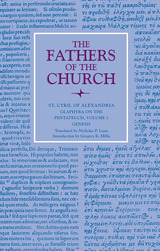 Glaphyra on the Pentateuch, Volume 1
St. Cyril of Alexandria
Catholic University of America Press, 2019 Cyril of Alexandria (ca. 376–444) is best known for his defense of orthodoxy at the time of the Nestorian controversy over the nature of Christ. However, by far the larger part of Cyril’s literary output consisted of commentaries on books of both Old and New Testaments, written before the Christological debate was sparked off in 428. One of these works, of major proportions, was the so-called Glaphyra (“elegant comments”) on the Pentateuch. This comprises a total of thirteen separate “books,” or volumes: seven on Genesis, three on Exodus, and one each on Leviticus, Numbers and Deuteronomy. The comments primarily concern the narrative portions of the Pentateuch, hence the greater space given to Genesis, though a number of the legal prescriptions are also treated. This present volume, containing all seven books on Genesis, is the first of a projected two-volume set which will offer a translation of the whole Glaphyra for the first time in English. Cyril’s aims within the commentary are both theological and pastoral. His chosen method begins with a consideration of the historia. Here the Alexandrian patriarch deals with the text at the literal level. At this stage he explains any historical, cultural, and at times even linguistic and textual issues presented within the passage, which is then followed by some theological instruction or lessons of a more practical nature based upon the literal interpretation. The exposition then moves on to the theoria. This is Cyril’s preferred term for the contemplation of the spiritual sense, that is to say, the mystery of Christ which he firmly held lay hidden beneath the surface of the Old Testament text. With great adeptness and consistency Cyril identifies elements within the ancient narratives as figures, or “types and shadows,” of the Lord Jesus Christ, the Church, and the teachings of the gospel.
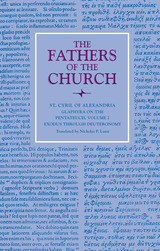 Glaphyra on the Pentateuch, Volume 2
St. Cyril of Alexandria
Catholic University of America Press, 2019 The translation of the commentary of Cyril of Alexandria (ca. 376-444) on the Pentateuch, known as the Glaphyra, or “elegant comments,” is now completed by this second volume. Volume 1 contained the whole of his remarks on Genesis, and now Volume 2 presents his comments on Exodus, Leviticus, Numbers, and Deuteronomy, along with indices for the entire work. At this early stage in his patriarchate Cyril was an avid expositor of Scripture, on books of both Testaments, possibly undertaking this work as a model and guide for the clergy under his direction. While Cyril’s other large-scale commentaries on Old Testament books, such as Isaiah and the Minor Prophets (the latter commentary also published in translation by CUA Press), followed a verse-by-verse approach, the Glaphyra is more thematic. As Cyril works through the narrative passages of the Pentateuch, he pauses to explain those elements within the text that present possible difficulties or admit alternative interpretations, and invariably concludes each section by bringing out spiritual lessons of benefit to the congregation. Many of these latter relate to Christ, since, for Cyril, a Christological reading of the Old Testament was unavoidable. While in the Glaphyra it was not Cyril’s purpose to tackle the legal passages within the Pentateuch, a task that he wished to reserve for a separate work of an entirely different character (De adoratione et cultu in spiritu et veritate, “Concerning Worship and Service in Spirit and in Truth”), he does nevertheless here depart from his own remit on occasion and deal with some of the more prominent ceremonial passages. Cyril gives considerable space, for example, to the sacrifice of the Passover lamb and the levitical ritual for the cleansing of the leper, among others. As with Volume 1, Cyril’s treatment of these books is published here for the first time in English translation.
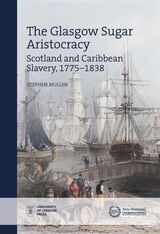 The Glasgow Sugar Aristocracy: Scotland and Caribbean Slavery, 1775–1838
Stephen Mullen
University of London Press, 2020 The first book to outline Scotland’s colonial past and Glasgow’s direct links with the slave trade through sugar plantations.
This important book assesses the size and nature of Caribbean slavery’s economic impact on British society. The Glasgow Sugar Aristocracy, a grouping of West India merchants and planters, became active before the emancipation of chattel slavery in the British West Indies in 1834. Many acquired nationally significant fortunes, and their investments percolated into the Scottish economy and wider society. At its core, the book traces the development of merchant capital and poses several interrelated questions during an era of rapid transformation, namely, what impact the private investments of West India merchants and colonial adventurers had on metropolitan society and the economy, as well as the wider effects of such commerce on industrial and agricultural development.
The book also examines the fortunes of temporary Scottish economic migrants who traveled to some of the wealthiest of the Caribbean islands, presenting the first large-scale survey of repatriated slavery fortunes via case studies of Scots in Jamaica, Grenada, and Trinidad before emancipation in 1834. It, therefore, takes a new approach to illuminate the world of individuals who acquired West Indian fortunes and ultimately explores, in an Atlantic frame, the interconnections between the colonies and metropole in the late eighteenth and early nineteenth centuries.
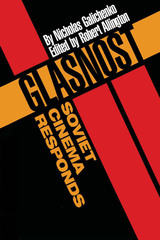 Glasnost—Soviet Cinema Responds
By Nicholas Galichenko
University of Texas Press, 1991 With the coming of glasnost to the Soviet Union, filmmakers began to explore previously forbidden themes, and distributors released films that were suppressed by pre-glasnost-era censors. Soviet cinema underwent a revolution, one that mirrors and helps interpret the social revolution that took place throughout the USSR. Glasnost—Soviet Cinema Responds is the first overall survey of the effects of this revolution on the work of Soviet filmmakers and their films. The book is structured as a series of three essays and a filmography of the directors of glasnost cinema. The first essay, "The Age of Perestroika," describes the changes that occurred in Soviet cinema as it freed itself from the legacy of Stalinism and socialist realism. It also considers the influence of film educator and director Mikhail Romm. "Youth in Turmoil" takes a sociological look at films about youth, the most dynamic and socially revealing of glasnost-era productions. "Odysseys in Inner Space" charts a new direction in Soviet cinema as it focuses on the inner world of individuals. The filmography includes thirty-three of the most significant glasnost-era directors, including Tengiz Abuladze, Karen Shakhnazarov, and Sergei Soloviev, with a comprehensive list of their films. Discussions of many individual films, such as Repentance, The Messenger Boy, and The Wild Pigeon, and interviews with the directors reveal the effects that glasnost and perestroika have had on the directors' lives and art.
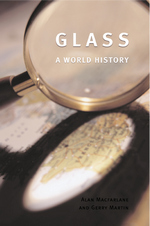 Glass: A World History
Alan Macfarlane and Gerry Martin
University of Chicago Press, 2002 Picture, if you can, a world without glass. There would be no microscopes or telescopes, no sciences of microbiology or astronomy. People with poor vision would grope in the shadows, and planes, cars, and even electricity probably wouldn't exist. Artists would draw without the benefit of three-dimensional perspective, and ships would still be steered by what stars navigators could see through the naked eye.
In Glass: A World History, Alan Macfarlane and Gerry Martin tell the fascinating story of how glass has revolutionized the way we see ourselves and the world around us. Starting ten thousand years ago with its invention in the Near East, Macfarlane and Martin trace the history of glass and its uses from the ancient civilizations of India, China, and Rome through western Europe during the Renaissance, Enlightenment, and Industrial Revolution, and finally up to the present day. The authors argue that glass played a key role not just in transforming humanity's relationship with the natural world, but also in the divergent courses of Eastern and Western civilizations. While all the societies that used glass first focused on its beauty in jewelry and other ornaments, and some later made it into bottles and other containers, only western Europeans further developed the use of glass for precise optics, mirrors, and windows. These technological innovations in glass, in turn, provided the foundations for European domination of the world in the several centuries following the Scientific Revolution.
Clear, compelling, and quite provocative, Glass is an amazing biography of an equally amazing subject, a subject that has been central to every aspect of human history, from art and science to technology and medicine.
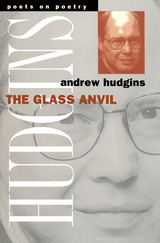 The Glass Anvil
Andrew Hudgins
University of Michigan Press, 1997 In this highly accessible volume, poet Andrew Hudgins puts himself under the eye of scrutiny, spanning his career from a beginning writer seriously committed to his art to a mature author ready to reflect upon his role as a poet. The transition from one to the other comprises a rich lode of personal experiences, which Hudgins honestly and humorously details in essays ranging from his fascination with imagined worlds created by books to his appreciation of the works of nineteenth-century poet Frederick Goddard Tuckerman and contemporary poet Galway Kinnell.
Finally coming to rest on an examination of his own autobiography, The Glass Hammer, Hudgins reveals some of the ways he lied in that book--and some of the reasons for doing so. In a lighthearted manner, he manages to throw both light--and shadow--on the autobiography as a literary form. Amid charming anecdotes of his Southern upbringing, The Glass Anvil vividly records the depth of Hudgins's fascination with language, particularly as it mingles with the important issues of his life--religion, racism, Southern literature, and narrative poetry. This fascination is further documented in a free-wheeling interview which closes the book.
Engaging and amusing reading, The Glass Anvil will appeal to readers interested in contemporary poetry and Southern literature.
Andrew Hudgins's books include The Never Ending, After the Lost War: A Narrative, Saints and Strangers, and most recently The Glass Hammer. He is Professor of English, University of Cincinnati.
 Glass Bikini
Kristin Bock
Tupelo Press, 2021 Part creation myth, part prophesy, Kristin Bock’s Glass Bikini stitches together the fabrics of our dystopian present, reminding us of our culpability and power in this grand, human experiment. These often darkly humorous poems guide readers into dreamscapes and under-worlds that are ominously contemporary. From a looking-glass planet, we peer back at our own homes and see the news as a horror movie. There is the sickening feeling that something has gone terribly wrong. Monsters prowl here inspired as much by Sarah Kane as Mary Shelley. We hold a tiny prehistoric horse in our paws. We are masochistic voodoo dolls traipsing hand in hand through grisliness and the sublime. If there is any hope in this nightmarish proliferation of cyborgs and militia, it lies within the liberating powers of the feminine. Glass Bikini is both mirror and warning, asking us to see our own strange and terrifying shapes, the monsters we have helped create, and the ones we have become.
 The Glass Church: Robert H. Schuller, the Crystal Cathedral, and the Strain of Megachurch Ministry
Mark T. Mulder
Rutgers University Press, 2020 Robert H. Schuller’s ministry—including the architectural wonder of the Crystal Cathedral and the polished television broadcast of Hour of Power—cast a broad shadow over American Christianity. Pastors flocked to Southern California to learn Schuller’s techniques. The President of United States invited him sit prominently next to the First Lady at the State of the Union Address. Muhammad Ali asked for the pastor’s autograph. It seemed as if Schuller may have started a second Reformation. And then it all went away. As Schuller’s ministry wrestled with internal turmoil and bankruptcy, his emulators—including Rick Warren, Bill Hybels, and Joel Osteen— nurtured megachurches that seemed to sweep away the Crystal Cathedral as a relic of the twentieth century. How did it come to this? Certainly, all churches depend on a mix of constituents, charisma, and capital, yet the size and ambition of large churches like Schuller’s Crystal Cathedral exert enormous organizational pressures to continue the flow of people committed to the congregation, to reinforce the spark of charismatic excitement generated by high-profile pastors, and to develop fresh flows of capital funding for maintenance of old projects and launching new initiatives. The constant attention to expand constituencies, boost charisma, and stimulate capital among megachurches produces an especially burdensome strain on their leaders. By orienting an approach to the collapse of the Crystal Cathedral on these three core elements—constituency, charisma, and capital—The Glass Church demonstrates how congregational fragility is greatly accentuated in larger churches, a notion we label megachurch strain, such that the threat of implosion is significantly accentuated by any failures to properly calibrate the inter-relationship among these elements.
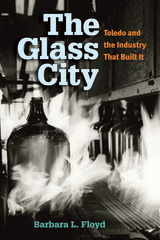 The Glass City: Toledo and The Industry That Built It
Barbara L. Floyd
University of Michigan Press, 2014 The headline, “Where Glass is King,” emblazoned Toledo newspapers in early 1888, before factories in the Ohio city had even produced their first piece of glass. After years of struggling to find an industrial base, Toledo had attracted Edward Drummond Libbey and his struggling New England Glass Company to the shores of the Maumee River, and many felt Toledo’s potential as “The Future Great City of the World” would at last be realized. The move was successful—though not on the level some boosters envisioned—and since 1888, Toledo glass factories have employed thousands of workers who created the city’s middle class and developed technical innovations that impacted the glass industry worldwide. But as has occurred in other cities dominated by single industries—from Detroit to Pittsburgh to Youngstown—changes to the industry it built have had a devastating impact on Toledo. Today, 45 percent of all glass is manufactured in China. Well-researched yet accessible, this new book explores how the economic, cultural, and social development of the Glass City intertwined with its namesake industry and examines Toledo’s efforts to reinvent itself amidst the Midwest’s declining manufacturing sector.
Glass Harvest
Amie Whittemore
Autumn House Press, 2016 Amie Whittemore's debut poetry collection, Glass Harvest, focuses on our intimate connection to the natural world and how it shapes us. The book explores the struggle of relationships changing (or ending) and how we come to understand and accept our past. Anyone prone to nostalgia and anyone who celebrates the smallest aspects of our everyday world will love Whittemore's work.
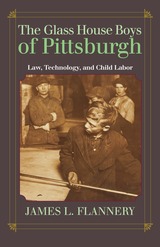 The Glass House Boys of Pittsburgh: Law, Technology, and Child Labor
James L. Flannery
University of Pittsburgh Press, 2009 At the end of the nineteenth century, Pittsburgh was leading the nation in glass production, and glass bottle plants in particular relied heavily on adolescent (and younger) males for their manufacturing process. These “glass house boys” worked both day and night, as plants ran around the clock to meet production demands and remain price competitive with their newly-automated rivals. Boys performed menial tasks, received low wages, and had little to say on their own behalf.
By the turn of the century, most states had enacted laws banning children from working at night, and coupled with compulsory education requirements, had greatly reduced the use of children in industry. In western Pennsylvania, however, child labor was deeply entrenched, and Pennsylvania lawmakers lagged far behind the rest of the nation. In The Glass House Boys of Pittsburgh, James L. Flannery presents an original and compelling examination of legislative clashes over the singular issue of the glass house boys. He reveals the many societal, economic, and political factors at work that allowed for the perpetuation of child labor in this industry and region.
Through extensive research in Pennsylvania state legislature archives, National Child Labor Committee reports, and union and industry journals, Flannery uncovers a complex web of collusion between union representatives, industrialists, and legislators that kept child labor reform at bay. Despite national pressure, a concerted effort by reformers, and changes to education laws, the slow defeat of the “glass house exception” in 1915 came about primarily because of technological advances in the glass bottle industry that limited the need for child labor.
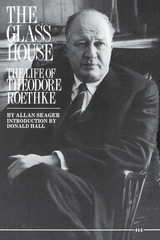 The Glass House: The Life of Theodore Roethke
Allan Seager
University of Michigan Press, 1991 This exquisitely written biography of major American poet Theodore Roethke by his close friend and fellow writer Allan Seager was greeted with great enthusiasm in the literary community when it originally appeared in 1968. Kirkus Reviews found The Glass House “finely wrought, compassionate, intimate, and bound to be of inestimable value to all future Roethke scholars” in its exploration of Roethke’s life and its relationship to his art; critic Hugh Kenner called it “simply the best American biography.”
Biographer Allan Seager interviewed a number of Roethke’s friends and fellow writers, and he had access to the voluminous notes the poet left behind. Seager reveals the Theodore Roethke who existed behind the public persona – a complex, self-contradictory, gentle, often disturbed mysterious, and ruthlessly honest man. One of the book’s most moving passages is the defense of the poet’s role within the university, written by a colleague when Roethke was faced with the threat of dismissal. A committed teacher himself, Seager succeeds in doing justice to an often neglected aspect of Roethke’s achievement, his remarkable power as a teacher, and his unusual and committed teaching style.
Glass, Light, and Electricity: Essays
Shena McAuliffe
University of Alaska Press, 2020 Fleet-footed and capricious, the essays in Glass, Light & Electricity wander through landscapes both familiar and unfamiliar, finding them equal parts magical and toxic. They explore and merge public and private history through lyric meditations that use research, association, and metaphor to examine subjects as diverse as neon signs, scalping, heartbreak, and seizures. The winner of the 2019 Permafrost Prize in nonfiction, Shena McAuliffe expands the creative possibilities of form.
 Glass! Love!! Perpetual Motion!!!: A Paul Scheerbart Reader
Paul Scheerbart
University of Chicago Press, 2014 German writer, critic, and theorist Paul Scheerbart (1863–1915) died nearly a century ago, but his influence is still being felt today. Considered by some a mad eccentric and by others a visionary political thinker in his own time, he is now experiencing a revival thanks to a new generation of scholars who are rightfully situating him in the modernist pantheon.
Glass! Love!! Perpetual Motion!!! is the first collection of Scheerbart’s multifarious writings to be published in English. In addition to a selection of his fantastical short stories, it includes the influential architectural manifesto Glass Architecture and his literary tour-de-force Perpetual Motion: The Story of an Invention. The latter, written in the guise of a scientific work (complete with technical diagrams), was taken as such when first published but in reality is a fiction—albeit one with an important message. Glass! Love!! Perpetual Motion!!! is richly illustrated with period material, much of it never before reproduced, including a selection of artwork by Paul Scheerbart himself. Accompanying this original material is a selection of essays by scholars, novelists, and filmmakers commissioned for this publication to illuminate Scheerbart’s importance, then and now, in the worlds of art, architecture, and culture.
Coedited by artist Josiah McElheny and Christine Burgin, with new artwork created for this publication by McElheny, Glass! Love!! Perpetual Motion!!! is a long-overdue monument to a modern master.
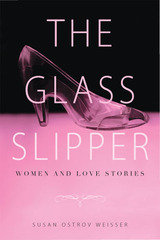 The Glass Slipper: Women and Love Stories
Susan Ostrov Weisser
Rutgers University Press, 2013 Why is the story of romance in books, magazines, and films still aimed at women rather than at men? Even after decades of feminism, traditional ideas and messages about romantic love still hold sway and, in our “postfeminist” age, are more popular than ever. Increasingly, we have become a culture of romance: stories of all kinds shape the terms of love. Women, in particular, love a love story. The Glass Slipper is about the persistence of a familiar Anglo-American love story into the digital age. Comparing influential classics to their current counterparts, Susan Ostrov Weisser relates in highly amusing prose how these stories are shaped and defined by and for women, the main consumers of romantic texts. Following a trajectory that begins with Jane Austen and concludes with Internet dating sites, Weisser shows the many ways in which nineteenth-century views of women’s nature and the Victorian idea of romance have survived the feminist critique of the 1970s and continue in new and more ambiguous forms in today’s media, with profound implications for women. More than a book about romance in fiction and media, The Glass Slipper illustrates how traditional stories about women’s sexuality, femininity, and romantic love have survived as seemingly protective elements in a more modern, feminist, sexually open society, confusing the picture for women themselves. Weisser compares diverse narratives—historical and contemporary from high literature and “low” genres—discussing novels by Jane Austen and Charlotte Brontë, Victorian women’s magazines, and D. H. Lawrence’s Lady Chatterley’s Lover; Disney movies; popular Harlequin romance novels; masochistic love in films; pornography and its relationship to romance; and reality TV and Internet ads as romantic stories. Ultimately, Weisser shows that the narrative versions of the Glass Slipper should be taken as seriously as the Glass Ceiling as we see how these representations of romantic love are meant to inform women’s beliefs and goals. In this book, Weisser’s goal is not to shatter the Glass Slipper, but to see through it.
The Glassworkers of Carmaux: French Craftsmen and Political Action in a Nineteenth-Century City
Joan W. Scott
Harvard University Press, 1974 This award-winning study analyzes in close detail the experiences of glassworkers as mechanization transformed their trade from a highly skilled art to a semiskilled occupation. Arguing that changes in the organization of work altered the lifestyle and political outlook of the glassworker, Joan Scott uses local archival materials and demographic records to reconstruct the experience of ordinary workingmen.
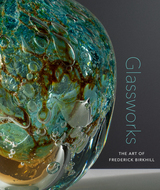 Glassworks: The Art of Frederick Birkhill
Samantha De Tillio
The Artist Book Foundation, 2020 Glass as an art form has an ancient tradition; the archaeological record suggests that artisans in Egypt and Mesopotamia were fabricating glass vessels and ornaments during the fourth millennium BCE. Its durable nature, range of colors, malleability, and most of all, its optical transparency are qualities that have made glass a premiere art medium. Over a lifetime, Frederick Birkhill (1951–2023) has explored the unique qualities of glass and the numerous techniques and intricacies of working with it. The result of these decades of study is a body of work that is extraordinary in scope, technical expertise, and sheer virtuosity. The Artist Book Foundation is delighted to present a new monograph honoring this gifted artist: Glassworks: The Art of Frederick Birkhill.
From his time in England at Burleighfield House, the studio of stained-glass artist Patrick Reyntiens, to his unprecedented visit to Lauscha, the village in the former East Germany famous for both its art and scientific glass production, and his subsequent career as an explorer, teacher, and master of the glass arts, Birkhill has devoted himself to furthering the appreciation of the medium and sharing his vast experience with colleagues, collectors, and students. His works appear in numerous museum collections, including those of The Corning Museum of Glass, the Museum of Arts and Design, the Mint Museum, the Detroit Institute of Arts, and the Smithsonian.
Complementing the scholarly contributions by authors with significant backgrounds in the glass arts, the book features in its extensive plate section the lavish photography of Henry Leutwyler, which offers readers an opportunity to examine the complex details and artistic mastery of Birkhill’s oeuvre. In addition, the monograph offers a glossary of glass-art terms, a detailed chronology of the artist’s life, his extensive exhibition history, and a list of the numerous awards he has received. For those who are passionate about the glass arts, this monograph is a feast for the eyes.
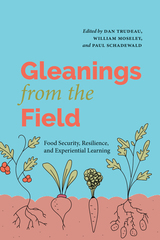 Gleanings from the Field: Food Security, Resilience, and Experiential Learning
Edited by Dan Trudeau, William Moseley, and Paul Schadewald
Lever Press, 2025 In recent years, the concept of “food security” has garnered significant attention among policymakers, activists, and educators. Stemming from a growing awareness of the complexities surrounding access to sufficient food globally, movements advocating for food justice and sovereignty have emerged in response to these systemic inequities and health disparities, particularly in local communities. With the COVID-19 pandemic, conflicts in regions such as Ukraine and Gaza, and the escalating impacts of climate change, reliable food security has become exacerbated by these existing disparities. Gleanings from the Field argues that addressing food security is essential for tackling broader sustainability challenges facing humanity and recognizes the role of food in community-building, cultural exchange, and quality of life. However, promoting food security entails navigating intricate trade-offs, such as balancing economic interests in food supply with environmental concerns.
This timely essay collection frames our food security challenges as “wicked problems,” puzzles without clear solutions that are characterized by evolving complexities and divergent stakeholder priorities. In classroom settings, they argue for the usage of experiential learning to cultivate “wicked problem-solving skills” among students. Gleanings from the Field exemplifies this approach, offering pedagogical interventions to prepare students for tackling these wicked problems, while advocating for high-impact learning experiences that enable students to grapple with the interconnected systems influencing food security. Through hands-on experiences and reflective practice, students gain a deeper understanding of these systems and their societal implications. Importantly, the contributions outlined in this volume underscore the need for a multidimensional view of food security, thus examining the intersections of economic interests, government policies, and social movements. By contextualizing food security within broader political-economic arrangements, educators can empower students to enact meaningful change.
Gleanings from the Field argues for a holistic approach to food security education, one that acknowledges the fraught nature of wicked problems and equips students with the skills and knowledge needed for effective action. By integrating experiential learning, conceptual frameworks about food security and resilience, and real-world engagement, educators can cultivate a new generation of resilient problem-solvers committed to addressing food insecurity and other wicked problems.
Gleanings of Freedom: Free and Slave Labor along the Mason-Dixon Line, 1790-1860
Max Grivno
University of Illinois Press, 2014 Late eighteenth- and early nineteenth-century landowners in the hinterlands of Baltimore, Maryland, cobbled together workforces from a diverse labor population of black and white apprentices, indentured servants, slaves, and hired workers. This book examines the intertwined lives of the poor whites, slaves, and free blacks who lived and worked in this wheat-producing region along the Mason–Dixon Line. Drawing from court records, the diaries, letters, and ledgers of farmers and small planters, and other archival sources, Max Grivno reconstructs how these poorest of southerners eked out their livings and struggled to maintain their families and their freedom in the often unforgiving rural economy.
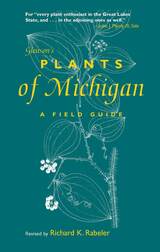 Gleason's Plants of Michigan: A Field Guide
Revised by Richard K. Rabeler
University of Michigan Press, 1998 “For every plant enthusiast in the Great Lakes State, and . . . in the adjoining ones as well.”
—John J. Pipoly III, SIDA “A very handy field guide . . . this book will be of use to anyone in northeastern North America.”
—C. Barre Hellquist, Rhodora “It can be used to identify most of the plants . . . in Michigan and adjacent areas.”
—James E. Eckenwalder, Wildflower Gleason’s Plants of Michigan is a major revision and expansion of The Plants of Michigan by Henry A. Gleason—the 1918 classic field guide to the flowering plants and trees found in Michigan, neighboring Great Lakes States, and southern Ontario. Richard K. Rabeler has completely updated the family descriptions and added easy-to-use keys. Information on habitats and geographical distribution is now included as well as a comprehensive index of plant names, an illustrated section on terminology, a glossary, and an introduction to botany in Michigan. Gleason’s Plants of Michigan will be useful to naturalists, environmental specialists, botanists, and everyone who loves the wildflowers and native flora of Michigan and the surrounding areas.
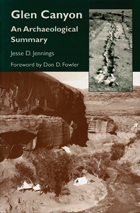 Glen Canyon: An Archaeological Summary
Jesse D Jennings
University of Utah Press, 1998 In 1956, Congress passed legislation that provided authorization and funds for emergency research to be conducted in Glen Canyon in response to the threat of losses posted by the construction of the Glen Canyon Dam in northern Arizona. For eight years, scientists worked against the clock to record the archaeology, geology, history, and paleontology of the region before the waters of Lake Powell covered the area. In this highly interpretive summary, Jesse Jennings preserves the achievements of the salvage team and explains how the finds affected previous conclusions. Maps and photographs capture archaeological artifacts as well as the landscape of the area. This book also highlights the larger consequences of the massive salvage project — among them the stimulation of additional Southwest research, the applications of techniques made in response to emergency situations, and a valuable perspective on the Pueblo culture. Because this area is becoming increasingly controversial, with a raging debate over whether Lake Powell should be drained, Glen Canyon: An Archaeological Summary stands as more than a model of salvage archaeology. It is also a record and testament of the rich history of Glen Canyon.
Glen Canyon Archaeological Survey Part II: UUAP 39.2
Don D. Fowler
University of Utah Press, 1959 AKA Glen Canyon Series Number 6. Part II of III Parts. Contains the archaeological survey of the Kaiparowits Plateau by James Gunnerson, the Glen Canyon main stem survey by Don Fowler, and the San Juan triangle survey by Ted Weller reports.
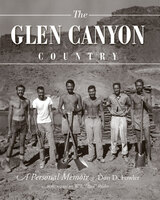 Glen Canyon Country, The: A Personal Memoir
Don D Fowler
University of Utah Press, 2011 In his new book, The Glen Canyon Country, archaeologist Don D. Fowler shares the history of a place and the peoples who sojourned there over the course of several thousand years. To tell this story, he weaves his personal experience as a student working on the Glen Canyon Salvage Project with accounts of early explorers, geologists, miners, railroad developers, settlers, river runners, and others who entered this magical place. The book details the canyon’s story via historical and scientific summaries, biographical sketches, personal memoir, and previously unpublished photos of the land and its explorers. Readers will experience the intrigue and beauty of the Canyon while following not only the story of an individual but also of Glen Canyon itself. Infused with the breadth and depth of a lifetime of archaeological experience, The Glen Canyon Country is the definitive account of the prehistory and history of a significant river corridor and the surrounding land.
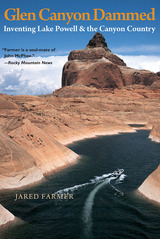 Glen Canyon Dammed: Inventing Lake Powell and the Canyon Country
Jared Farmer
University of Arizona Press, 1999 Growth is a major issue in the contemporary American West, especially as more and more towns and states turn to tourism to spark their economies. But growth has a flip side—loss—about which we seldom think until something is irrevocably gone. Where once was Glen Canyon, with its maze of side-canyons leading to the Colorado River, now is Lake Powell, second largest reservoir in America, attracting some three million visitors a year. Many who come here think they have found paradise, and for good reason: it's beautiful. However, the loss of Glen Canyon was monumental—to many, a notorious event that remains unresolved.
Focusing on the saddening, maddening example of Glen Canyon, Jared Farmer traces the history of exploration and development in the Four Corners region, discusses the role of tourism in changing the face of the West, and shows how the "invention" of Lake Powell has served multiple needs. He also seeks to identify the point at which change becomes loss: How do people deal with losing places they love? How are we to remember or restore lost places? By presenting Glen Canyon as a historical case study in exploitation, Farmer offers a cautionary tale for the future of this spectacular region. In assessing the necessity and impact of tourism, he questions whether merely visiting such places is really good for people's relationships with each other and with the land, suggesting a new ethic whereby westerners learn to value what remains of their environment. Glen Canyon Dammed was written so that the canyon country's perennial visitors might better understand the history of the region, its legacy of change, and their complicity in both. A sobering book that recalls lost beauty, it also speaks eloquently for the beauty that may still be saved.
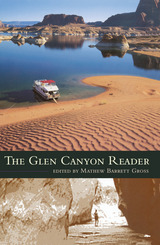 The Glen Canyon Reader
Mathew Barrett Gross
University of Arizona Press, 2003 Stretching for 170 miles across northern Arizona and southern Utah, Lake Powell is both a vacationer's paradise and the second-largest reservoir in the Western Hemisphere. Yet few visitors to the lake today are aware of the lost world that lies beneath its crystal waters. Once an enchanted landscape of sandstone cliffs and secret crevices, Glen Canyon has been but a memory since the damming of the Colorado River near Page, Arizona, in 1963. Often called "the place no one knew," Glen Canyon was in fact explored by thousands of visitors—including dozens of writers—before the dam's completion. River runner Mathew Gross has combed the literature of Glen Canyon to assemble this wide-ranging look at the history of this now-submerged natural treasure, the first book to bring together these voices of remembrance. Beginning with the first known written report of Glen Canyon in an eighteenth-century missionary journal, Gross has selected accounts of the canyon from both before and after the dam. Included are some of the West's best-known writers—Zane Grey and Katie Lee, Edward Abbey and Ellen Meloy—as well as Pulitzer Prize winners John McPhee and Wallace Stegner. Other authors range from David Brower, director of the Sierra Club when the dam was built, to Floyd Dominy, the federal bureaucrat responsible for the dam. The Glen Canyon Reader is a book that may be read straight through as entertaining and informative history. But as Gross suggests, "Perhaps more pleasurable is to flip through these pages, to poke around and explore, as one would have done in Glen Canyon . . . to visit and revisit the places contained in this book, these cool glens and embracing alcoves and hidden grottos, these canyons and dreams and ghosts that will always, always be with us."
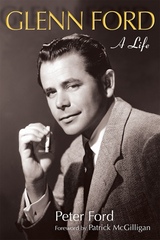 Glenn Ford: A Life
Peter Ford
University of Wisconsin Press, 2011 Glenn Ford—star of such now-classic films as Gilda, Blackboard Jungle, The Big Heat, 3:10 to Yuma, and The Rounders—had rugged good looks, a long and successful career, and a glamorous Hollywood life. Yet the man who could be accessible and charming on screen retreated to a deeply private world he created behind closed doors.
Glenn Ford: A Life chronicles the volatile life, relationships, and career of the renowned actor, beginning with his move from Canada to California and his initial discovery of theater. It follows Ford’s career in diverse media—from film to television to radio—and shows how Ford shifted effortlessly between genres, playing major roles in dramas, noir, westerns, and romances.
This biography by Glenn Ford’s son, Peter Ford, offers an intimate view of a star’s private and public life. Included are exclusive interviews with family, friends, and professional associates, and snippets from the Ford family collection of diaries, letters, audiotapes, unpublished interviews, and rare candid photos. This biography tells a cautionary tale of Glenn Ford’s relentless infidelities and long, slow fade-out, but it also embraces his talent-driven career. The result is an authentic Hollywood story that isn’t afraid to reveal the truth. Best Books for General Audiences, selected by the American Association of School Librarians Best Books for General Audiences, selected by the Public Library Reviewers
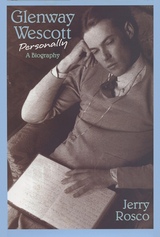 Glenway Wescott Personally: A Biography
Jerry Rosco
University of Wisconsin Press, 2002 As a writer, Glenway Wescott (1901–1987) left behind several novels, including The Grandmothers and The Pilgrim Hawk, noted for their remarkable lyricism. As a literary figure, Wescott also became a symbol of his times. Born on a Wisconsin farm in 1901, he associated as a young writer with Hemingway, Stein, and Fitzgerald in 1920s Paris and subsequently was a central figure in New York’s artistic and gay communities. Though he couldn’t finish a novel after the age of forty-five, he was just as famous as an arts impresario, as a diarist, and for the company he kept: W. H. Auden, Christopher Isherwood, Marianne Moore, Somerset Maugham, E. M. Forster, Joseph Campbell, and scores of other luminaries.
In Glenway Wescott Personally, Jerry Rosco chronicles Wescott’s long and colorful life, his early fame and later struggles to write, the uniquely privileged and sometimes tortured world of artistic creation. Rosco sensitively and insightfully reveals Wescott’s private life, his long relationship with Museum of Modern Art curator Monroe Wheeler, his work with sex researcher Alfred Kinsey that led to breakthrough findings on homosexuality, and his kinship with such influential artists as Jean Cocteau, George Platt-Lynes, and Paul Cadmus.
 Glidermen of Neptune: The American D-Day Glider Attack
Charles J. Masters
Southern Illinois University Press, 1995 Although the word gliderman does not appear in the dictionary, a brave group of World War II soldiers known as glidermen flew into combat inside unarmed and unarmored canvas-covered gliders known as "flying coffins." Charles J. Masters points out that because World War II was the first truly mechanized and armored global conflict, the role of the glidermen and their combat gliders was at best anachronistic. Fighter planes exceeded speeds of 400 miles per hour and were heavily armed with multiple machine guns. Dogfights had taken on new dimensions, eclipsing the tactics, speed, and firepower first evidenced by the fragile biplanes of World War I. Tanks achieved a lethal efficiency barely dreamed of even five years before the war. An array of weaponry never seen in any previous military engagement confronted the combat soldier during World War II.And yet there were gliders. And glidermen. Masters tells of these men and of their fragile aircraft in a war of mechanized chaos. In copious detail, he describes the gliders and the Americans who boarded them during the American D-Day glider attack, a mission that was part of the overall cross-channel plan code-named "Operation Neptune." The son of a gliderman with the 82nd Airborne Division, Masters had unique access to the surviving glidermen and comrades of his father. During the course of his research, he located and interviewed 106 of the men who had flown the D-Day mission in gliders. As an insider—in a sense almost a member of the family and fraternity of glider-men—Masters was cordially received by the members of the American airborne divisions that participated in D-Day, many of whom told him stories they had seldom told their own friends and families. Often harrowing and always riveting, the stories these men told an eager listener and researcher are very much a part of this narrative. Masters has also assembled the finest existing collection of photographs of the American D-Day glider attack. These photographs—many of which have never before been published—provide a spectacular photographic record of a little-known aspect of this war. In fact, because of the short military history of the American combat glider, most readers, including veterans of World War II, will not have seen one of these "flying coffins," even at a distance. These photographs afford the opportunity to actually examine the inside of the combat gliders used on D-Day, to observe the glidermen in action, and to witness the often tragic consequences of the glider attack.
Gliglois: A French Arthurian Romance of the Thirteenth Century
Charles H. Livingston
Harvard University Press After the death of Wendelin Foerster, Harvard University acquired the papers and notes for his frequently announced edition of the Gliglois. These are of capital importance because a mediaeval manuscript of the romance no longer exists, the unique one having been destroyed in the fire at the National Library of Turin in 1904. Professor Livingston has here edited the text and has supplied a full Introduction, Notes, and Glossary.
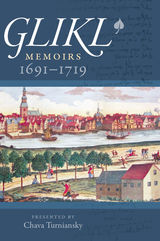 Glikl: Memoirs 1691-1719
Annotated by and with an Introduction by Chava Turniansky
Brandeis University Press, 2019 “My dear children, I write this for you in case your dear children or grandchildren come to you one of these days, knowing nothing of their family. For this reason I have set this down for you here in brief, so that you might know what kind of people you come from.”
These words from the memoirs Glikl bas Leib wrote in Yiddish between 1691 and 1719 shed light on the life of a devout and worldly woman. Writing initially to seek solace in the long nights of her widowhood, Glikl continued to record the joys and tribulations of her family and community in an account unique for its impressive literary talents and strong invocation of self. Through intensely personal recollections, Glikl weaves stories and traditional tales that express her thoughts and beliefs. While influenced by popular Yiddish moral literature, Glikl’s frequent use of first person and the significance she assigns her own life experience set the work apart. Informed by fidelity to the original Yiddish text, this authoritative new translation is fully annotated to explicate Glikl’s life and times, offering readers a rich context for appreciating this classic work.
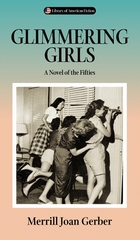 Glimmering Girls: A Novel of the Fifties
Merrill Joan Gerber
University of Wisconsin Press, 2005 Glimmering Girls tells the story of three extraordinary American women during a time of sexual and cultural repression. Francie and her friends Liz and Amanda are college students, coming of age intellectually, emotionally, and physically in a setting where men were forbidden entry to women's dorm rooms, and women were locked into those rooms after curfew. College life for women was governed by one simple, cardinal rule: Marry Before Graduation or Be Lost Forever. Any thirst for adventure was supposed to be satisfied by the occasional panty raid. Francie and friends, however, find all this hard to swallow, and they resist their appointed futures as elementary school teachers and holders of the precious "MRS" degree. Doing the unthinkable, the three move off campus to live in a house with three men-Liz's boyfriend and two handsome, mysterious Southern twins who fix foreign cars in a shop off campus. There the young women's rebellion against expectations deepens, and they begin the real-world education of pursuing their dreams. Francie yearns to be a writer, and is encouraged by her Russian literature professor. Then she meets Joshua, a talented and dedicated piano student, who presents the ultimate challenge: does she maintain her "virtue," or give in to her sexual desires, finally breaking fully free of repressive "respectability"? Glimmering Girls follows Francie, Liz, and Amanda through this and other discoveries and adventures. Ultimately, each finds a way to live fully at a time when their entire culture seemed arrayed against them.
The Glimmering Room
Cynthia Cruz
Four Way Books, 2012 Fierce and fearless, The Glimmering Room beckons readers down into the young speaker’s dark underworld, and because we are seduced by Cruz’s startling imagery and language rich with “Death’s outrageous music,” we follow willingly. Peopled with “ambassadors from the Netherworld”—the orphaned and abused, the lost and addicted—Cruz leads us through this “traveling minstrel show / Called girlhood—” which is at once tragic and magical.
 Glimpses into My Own Black Box: An Exercise in Self-Deconstruction
George W. Stocking
University of Wisconsin Press, 2010 George W. Stocking, Jr., has spent a professional lifetime exploring the history of anthropology, and his findings have shaped anthropologists’ understanding of their field for two generations. Through his meticulous research, Stocking has shown how such forces as politics, race, institutional affiliations, and personal relationships have influenced the discipline from its beginnings. In this autobiography, he turns his attention to a subject closer to home but no less challenging. Looking into his own “black box,” he dissects his upbringing, his politics, even his motivations in writing about himself. The result is a book systematically, at times brutally, self-questioning.
An interesting question, Stocking says, is one that arouses just the right amount of anxiety. But that very anxiety may be the ultimate source of Stocking’s remarkable intellectual energy and output. In the first two sections of the book, he traces the intersecting vectors of his professional and personal lives. The book concludes with a coda, “Octogenarian Afterthoughts,” that offers glimpses of his life after retirement, when advancing age, cancer, and depression changed the tenor of his reflections about both his life and his work.
This book is the twelfth and final volume of the influential History of Anthropology series.
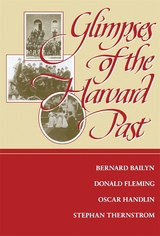 Glimpses of the Harvard Past
Bernard Bailyn, Donald Fleming, Oscar Handlin, and Stephan Thernstrom
Harvard University Press, 1986 This happy combination of literary essay and exceptionally well-written history, providing insights into a past still important in the twentieth century, will quickly take an honored place on the shelves of Harvardiana.
Bernard Bailyn writes on the origins of Harvard and the foundations of Harvard’s persistent character, structure, and style of governance, and contributes another chapter on the unhappy ending to the administration of the beloved President Kirkland, who presided over but could not control a period of profound change. Oscar Handlin describes the shifting relationships and power struggles among faculty, administration, and students over the years (“Making Men of the Boys”) and Harvard’s evolution from an ingrown community of teachers and students into a large, complex institution with worldwide prestige. Donald Fleming has chapters on the presidency of Charles William Eliot (“the greatest man in the history of Harvard”) and the colorful personalities of Harvard (not only “Copey” and Santayana and Charles Eliot Norton, but also “Old Sophy,” who kept a pet chicken in his room in Holworthy). Stephan Thernstrom examines the growing diversity of the student body as to finances, geography, religion, and racial background from the eighteenth century to the 1980s.
The subjects are of continuing interest not only to members of the Harvard community, who will treasure this memento of Harvard’s 350th anniversary, but also to historians of higher education and ordinary readers, who will enjoy the new information, original personalities, and thoughtful perspectives the book offers.
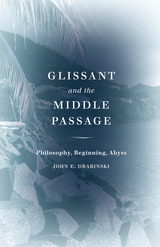 Glissant and the Middle Passage: Philosophy, Beginning, Abyss
John E. Drabinski
University of Minnesota Press, 2019 A reevaluation of Édouard Glissant that centers on the catastrophe of the Middle Passage and creates deep, original theories of trauma and Caribbeanness
While philosophy has undertaken the work of accounting for Europe’s traumatic history, the field has not shown the same attention to the catastrophe known as the Middle Passage. It is a history that requires its own ideas that emerge organically from the societies that experienced the Middle Passage and its consequences firsthand. Glissant and the Middle Passage offers a new, important approach to this neglected calamity by examining the thought of Édouard Glissant, particularly his development of Caribbeanness as a critical concept rooted in the experience of the slave trade and its aftermath in colonialism. In dialogue with key theorists of catastrophe and trauma—including Aimé Césaire, Frantz Fanon, George Lamming, Gilles Deleuze, Félix Guattari, Derek Walcott, as well as key figures in Holocaust studies—Glissant and the Middle Passage hones a sharp sense of the specifically Caribbean varieties of loss, developing them into a transformative philosophical idea. Using the Plantation as a critical concept, John E. Drabinski creolizes notions of rhizome and nomad, examining what kinds of aesthetics grow from these roots and offering reconsiderations of what constitutes intellectual work and cultural production. Glissant and the Middle Passage establishes Glissant’s proper place as a key theorist of ruin, catastrophe, abyss, and memory. Identifying his insistence on memories and histories tied to place as the crucial geography at the heart of his work, this book imparts an innovative new response to the specific historical experiences of the Middle Passage.
Glitter Road
January Gill O’Neil
CavanKerry Press, 2025 A beautiful portrait of how joy is an act of resistance.
“My poems brought me to Oxford, Mississippi a.k.a. the velvet ditch: / a place you can fall into, get comfortable among confederate rebels,” writes January Gill O’Neil in her stunning new collection, Glitter Road. The poems in this book look back at the end of a marriage, a heartbreaking loss, and a new relationship against the backdrop of a Mississippi season. O’Neil reflects on the history and legacy of Emmett Till, how his story is intertwined with her own, and wades through the incredible grief she feels for herself, her children, and the Black children who won’t come home tonight. These poems reclaim the vulnerable, intimate parts of a life in transition and celebrate womanhood through awakenings, landscapes, meanders, and possibilities. She declares, with both self-love and conviction, “I am done telling the kinder story. I am a myth of my own making.”
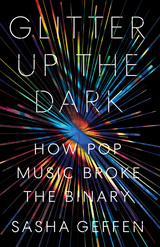 Glitter Up the Dark: How Pop Music Broke the Binary
By Sasha Geffen
University of Texas Press, 2020 Why has music so often served as an accomplice to transcendent expressions of gender? Why did the query "is he musical?" become code, in the twentieth century, for "is he gay?" Why is music so inherently queer? For Sasha Geffen, the answers lie, in part, in music’s intrinsic quality of subliminal expression, which, through paradox and contradiction, allows rigid gender roles to fall away in a sensual and ambiguous exchange between performer and listener. Glitter Up the Dark traces the history of this gender fluidity in pop music from the early twentieth century to the present day. Starting with early blues and the Beatles and continuing with performers such as David Bowie, Prince, Missy Elliot, and Frank Ocean, Geffen explores how artists have used music, fashion, language, and technology to break out of the confines mandated by gender essentialism and establish the voice as the primary expression of gender transgression. From glam rock and punk to disco, techno, and hip-hop, music helped set the stage for today’s conversations about trans rights and recognition of nonbinary and third-gender identities. Glitter Up the Dark takes a long look back at the path that led here.
 Global Activism, Global Media
Edited by Wilma de Jong, Martin Shaw, and Neil Stammers
Pluto Press, 2005 Radical political activist movements are growing all the time. Activist politics have come to influence 'mainstream' politics over fundamental issues such as trade, gender relations, the environment and war.
This book brings together activists and academics in one volume, to explore the theory and practice of global activism's relation to all forms of media, mainstream and otherwise. The contributors examine how global activism is represented in the mainstream press and explain the strategies that activists adopt to spread their own ideas.
Investigating Indymedia and internet activism, they show how transformations in communications technology offer new possibilities, and explain how activists have successfully used and developed their own media. Case studies and topics include the world social forums, an example of a campaign from the NGO Action Aid, a campaign strategy from an internet activist, Greenpeace and the Brent Spar conflict, the World Development Movement and representations in the mainstream press, the Independent Media Centre, transgender activism on the net, Amnesty International, Oxfam and the internet.
 Global Atlas of Marine Fisheries: A Critical Appraisal of Catches and Ecosystem Impacts
Edited by Daniel Pauly and Dirk Zeller
Island Press, 2016 Until now, there has been only one source of data on global fishery catches: information reported to the Food and Agriculture Organization of the United Nations by member countries. An extensive, ten-year study conducted by The Sea Around Us Project of the University of British Columbia shows that this catch data is fundamentally misleading. Many countries underreport the amount of fish caught (some by as much as 500%), while others such as China significantly overreport their catches.
The Global Atlas of Marine Fisheries is the first and only book to provide accurate, country-by-country fishery data. This groundbreaking information has been gathered from independent sources by the world’s foremost fisheries experts, and edited by Daniel Pauly and Dirk Zeller of the Sea Around Us Project. The Atlas includes one-page reports on 273 countries and their territories, plus fourteen topical global chapters. National reports describe the state of the country's fishery, by sector; the policies, politics, and social factors affecting it; and potential solutions. The global chapters address cross-cutting issues, from the economics of fisheries to the impacts of mariculture. Extensive maps and graphics offer attractive and accessible visual representations.
While it has long been clear that the world’s oceans are in trouble, the lack of reliable data on fishery catches has obscured the scale, and nuances, of the crisis. The atlas shows that, globally, catches have declined rapidly since the 1980s, signaling an even more critical situation than previously understood. The Global Atlas of Marine Fisheries provides a comprehensive picture of our current predicament and steps that can be taken to ease it. For researchers, students, fishery managers, professionals in the fishing industry, and all others concerned with the status of the world’s fisheries, the Atlas will be an indispensable resource.
Global Bioethics: Building on the Leopold Legacy
Van Rensselaer Potter
Michigan State University Press, 1988 Van Rensselaer Potter created and defined the term "bioethics" in 1970, to describe a new philosophy that sought to integrate biology, ecology, medicine, and human values. Bioethics is often linked to environmental ethics and stands in sharp contrast to biomedical ethics. Because of this confusion (and appropriation of the term in medicine), Potter chose to use the term "Global Bioethics" in 1988. Potter's definition of bioethics from Global Bioethics is, "Biology combined with diverse humanistic knowledge forging a science that sets a system of medical and environmental priorities for acceptable survival."
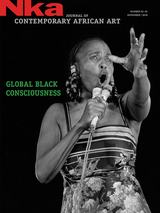 Global Black Consciousness
Natalie Natalie Crawford and Salah M. Hassan, special issue editors
Duke University Press, 2018 Contributors to this issue of Nka complicate the key paradigms that have shaped the theories and cultural productions of the African diaspora by offering a critical and nuanced analysis of global black consciousness. Literary scholars, historians, visual art critics, and diaspora theorists explore the confluence between theories of African diaspora and theories of decolonization. They examine the intersections of visual art, literature, film, and other cultural productions alongside the crosscurrents that shaped the transnational flow of black consciousness. The contributors revisit major black and Pan-African intellectual movements and festivals in the 1960s and 1970s, including the Dakar Festival of World Negro Arts held in Dakar in 1966, the Pan-African Cultural Festival in 1969 in Algiers, and FESTAC 1977 in Lagos, Nigeria. Throughout this issue, the contributors examine both the problem and promise of mobilizing “blackness” as a unifying concept.
Contributors: Hisham Aidi, Souleymane Bachir Diagne, Ahmed Bedjaoui, Margo Natalie Crawford, Romi Crawford, Lydie Diakhaté, Manthia Diawara, Amanda Gilvin, Salah M. Hassan, Shannen Hill, Tsitsi Jaji, Barbara Murray, Zita Nunes, Ugochukwu-Smooth C. Nzewi, Richard J. Powell, Holiday Powers, Shana L. Redmond, Penny M. Von Eschen, Dagmawi Woubshet
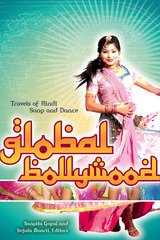 Global Bollywood: Travels of Hindi Song and Dance
Sangita Gopal
University of Minnesota Press, 2008 Bollywood movies and their signature song-and-dance spectacles are an aesthetic familiar to people around the world, and Bollywood music now provides the rhythm for ads marketing goods such as computers and a beat for remixes and underground bands. These musical numbers have inspired scenes in Western films such as Vanity Fair and Moulin Rouge. Global Bollywood shows how this currency in popular culture and among diasporic communities marks only the latest phase of the genre’s world travels. This interdisciplinary collection describes the many roots and routes of the Bollywood song-and-dance spectacle. Examining the reception of Bollywood music in places as diverse as Indonesia and Israel, the essays offer a stimulating redefinition of globalization, highlighting the cultural influence of Hindi film music from its origins early in the twentieth century to today. Contributors: Walter Armbrust, Oxford U; Anustup Basu, U of Illinois, Urbana-Champaign; Nilanjana Bhattacharjya, Colorado College; Edward K. Chan, Kennesaw State U; Bettina David, Hamburg U; Rajinder Dudrah, U of Manchester; Shanti Kumar, U of Texas, Austin; Monika Mehta, Binghamton U; Anna Morcom, Royal Holloway College; Ronie Parciack, Tel Aviv U; Biswarup Sen, U of Oregon; Sangita Shrestova; Richard Zumkhawala-Cook, Shippensburg U. Sangita Gopal is assistant professor of English at the University of Oregon. Sujata Moorti is professor of women’s and gender studies at Middlebury College.
 Global Burden of Disease: A comprehensive assessment of mortality and disability from diseases, injuries, and risk factors in 1990 and projected to 2020
Christopher J. L. Murray
Harvard University Press, 1996 The Global Burden of Disease and Injury Series details and analyzes global patterns of death and disability, providing a bold, comprehensive examination of the state of the world's health.
The Global Burden of Disease (GBD) provides systematic epidemiological estimates for an unprecedented 150 major health conditions. Its methods and results are presented here, including: disaggregated death and disability data; projections to the year 2020; and risk factor evaluations. While it minutely examines causes of death, the GBD is unique in its inclusion of disability. The authors explore the technical bases and moral implications of incorporating social, physical, and mental disabilities in health assessments, explicating the indicator they have developed, the disability-adjusted life-year (DALY). The GBD provides indispensable global and regional data for health planning, research, and education.
Among the study's results: Depression was the fourth leading cause of disease-burden in 1990 and by 2020 will be the single leading cause. Injuries cause over 15 percent of death and disability. HIV will by 2010 inflict as great a burden as the age-old epidemic tuberculosis. By 2020, tobacco use will account for 9 million deaths annually. Ultimately, pneumonia and diarrhea, both primarily diseases of childhood, will continue to inflict the greatest health burden of all.
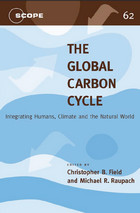 The Global Carbon Cycle: Integrating Humans, Climate, and the Natural World
Edited by Christopher B. Field and Michael R. Raupach
Island Press, 2004 While a number of gases are implicated in global warming, carbon dioxide is the most important contributor, and in one sense the entire phenomena can be seen as a human-induced perturbation of the carbon cycle. The Global Carbon Cycle offers a scientific assessment of the state of current knowledge of the carbon cycle by the world's leading scientists sponsored by SCOPE and the Global Carbon Project, and other international partners. It gives an introductory over-view of the carbon cycle, with multidisciplinary contributions covering biological, physical, and social science aspects. Included are 29 chapters covering topics including: an assessment of carbon-climate-human interactions; a portfolio of carbon management options; spatial and temporal distribution of sources and sinks of carbon dioxide; socio-economic driving forces of emissions scenarios. Throughout, contributors emphasize that all parts of the carbon cycle are interrelated, and only by developing a framework that considers the full set of feedbacks will we be able to achieve a thorough understanding and develop effective management strategies. The Global Carbon Cycle edited by Christopher B. Field and Michael R. Raupach is part of the Rapid Assessment Publication series produced by the Scientific Committee on Problems of the Environment (SCOPE), in an effort to quickly disseminate the collective knowledge of the world's leading experts on topics of pressing environmental concern.
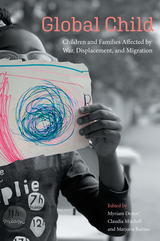 Global Child: Children and Families Affected by War, Displacement, and Migration
Myriam Denov
Rutgers University Press, 2023 Armed conflicts continue to wreak havoc on children and families around the world with profound effects. In 2017, 420 million children—nearly one in five—were living in conflict-affected areas, an increase in 30 million from the previous year. The recent surge in war-induced migration, referred to as a “global refugee crisis” has made migration a highly politicized issue, with refugee populations and host countries facing unique challenges. We know from research related to asylum seeking families that it is vital to think about children and families in relation to what it means to stay together, what it means for parents to be separated from their children, and the kinds of everyday tensions that emerge in living in dangerous, insecure, and precarious circumstances. In Global Child, the authors draw on what they have learned through their collaborative undertakings, and highlight the unique features of participatory, arts-based, and socio-ecological approaches to studying war-affected children and families, demonstrating the collective strength as well as the limitations and ethical implications of such research. Building on work across the Global South and the Global North, this book aims to deepen an understanding of their tri-pillared approach, and the potential of this methodology for contributing to improved practices in working with war-affected children and their families.
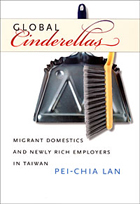 Global Cinderellas: Migrant Domestics and Newly Rich Employers in Taiwan
Pei-Chia Lan
Duke University Press, 2006 Migrant women are the primary source of paid domestic labor around the world. Since the 1980s, the newly prosperous countries of East Asia have recruited foreign household workers at a rapidly increasing rate. Many come from the Philippines and Indonesia. Pei-Chia Lan interviewed and spent time with dozens of Filipina and Indonesian domestics working in and around Taipei as well as many of their Taiwanese employers. On the basis of the vivid ethnographic detail she collected, Lan provides a nuanced look at how boundaries between worker and employer are maintained and negotiated in private households. She also sheds light on the fate of the workers, “global Cinderellas” who seek an escape from poverty at home only to find themselves treated as disposable labor abroad. Lan demonstrates how economic disparities, immigration policies, race, ethnicity, and gender intersect in the relationship between the migrant workers and their Taiwanese employers. The employers are eager to flex their recently acquired financial muscle; many are first-generation career women as well as first-generation employers. The domestics are recruited from abroad as contract and “guest” workers; restrictive immigration policies prohibit them from seeking permanent residence or transferring from one employer to another. They care for Taiwanese families’ children, often having left their own behind. Throughout Global Cinderellas, Lan pays particular attention to how the women she studied identify themselves in relation to “others”—whether they be of different classes, nationalities, ethnicities, or education levels. In so doing, she offers a framework for thinking about how migrant workers and their employers understand themselves in the midst of dynamic transnational labor flows.
Global Cinema Networks
Gorfinkel, Elena
Rutgers University Press, 2018 Global Cinema Networks investigates the evolving aesthetic forms, technological and industrial conditions, and social impacts of cinema in the twenty-first century. The collection’s esteemed contributors excavate sites of global filmmaking in an era of digital reproduction and amidst new modes of circulation and aesthetic convergence, focusing primarily on recent films made across Europe, Africa, Latin America, Asia, and the Middle East. Moving beyond the digital as a harbinger of transformation, the volume offers new ways of thinking about cinema networks in a historical continuum, from “international” to “world” to “transnational” to “global” frames.
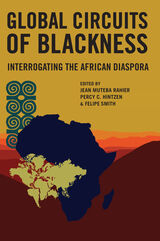 Global Circuits of Blackness: Interrogating the African Diaspora
Edited by Jean Muteba Rahier, Percy C. Hintzen, and Felipe Smith
University of Illinois Press, 2010 Global Circuits of Blackness is a sophisticated analysis of the interlocking diasporic connections between Africa, Europe, the Caribbean, and the Americas. A diverse and gifted group of scholars delve into the contradictions of diasporic identity by examining at close range the encounters of different forms of blackness converging on the global scene. Contributors examine the many ways blacks have been misrecognized in a variety of contexts. They also explore how, as a direct result of transnational networking and processes of friction, blacks have deployed diasporic consciousness to interpellate forms of white supremacy that have naturalized black inferiority, inhumanity, and abjection. Various essays document the antagonism between African Americans and Africans regarding heritage tourism in West Africa, discuss the interaction between different forms of blackness in Toronto's Caribana Festival, probe the impact of the Civil Rights movement in America on diasporic communities elsewhere, and assess the anxiety about HIV and AIDS within black communities. The volume demonstrates that diaspora is a floating revelation of black consciousness that brings together, in a single space, dimensions of difference in forms and content of representations, practices, and meanings of blackness. Diaspora imposes considerable flexibility in what would otherwise be place-bound fixities. Contributors are Marlon M. Bailey, Jung Ran Forte, Reena N. Goldthree, Percy C. Hintzen, Lyndon Phillip, Andrea Queeley, Jean Muteba Rahier, Stéphane Robolin, and Felipe Smith.
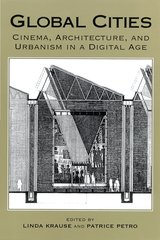 Global Cities: Cinema, Architecture, and Urbanism in a Digital Age
Petro, Patrice
Rutgers University Press, 2003 In Global Cities, scholars from an impressive array of disciplines critique the growing body of literature on the process broadly known as "globalization." This interdisciplinary focus enables the authors to explore the complex geographies of modern cities, and offer possible strategies for reclaiming a sense of place and community in these globalized urban settings. While examining major cities including New York, Tokyo, Berlin, Paris, and Hong Kong, contributors insist that the study of urban experiences must remain as attentive to the material effects as to the psychic and social consequences of globalization. Accordingly, essays explore the implications of global culture for architecture, cinema, and communication--but do so in a way that highlights the importance of the spaces between such metropolitan centers. These locations, the authors argue, serve as increasingly important "frontier zones," where a diverse set of actors converge and contend for power and presence. Such a perspective ultimately adds nuance and meaning to our understanding of the heterogeneous urban landscapes of these global cities. Linda Krause is an associate professor in the Department of Architecture at the School of Architecture and Urban Planning, University of Wisconsin, Milwaukee. Patrice Petro is professor of film studies and director of the Center for International Education at the University of Wisconsin, Milwaukee. A volume in the New Directions in International Studies series, edited by Patrice Petro
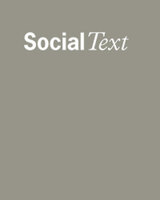 Global Cities of the South, Volume 22
Ashley Dawson and Brent Hayes Edwards, eds.
Duke University Press For the first time in history, over 50 percent of human beings live in cities. Perhaps more surprising is that cities in the developed world have been eclipsed in size and growth by the megacities of the underdeveloped world—the “global South.” As primary sites for human consumption of natural resources and for pollution of the environment, these global cities will witness the twenty-first-century crises—ecological, political, and social—when they first become full-blown. Global Cities of the South examines these portending disasters unfolding in the megacities of the global South. This special issue challenges postcolonial theorists to engage with urban studies and challenges urban analysts to turn their focus to the postcolonial societies where these cities have developed. Gathering well-known scholars in postcolonial theory and urban studies, the collection opens an interdisciplinary exchange through a series of case studies focused on cities in Africa and Asia. One essay argues that the world’s urban spaces are key to the continuance of inequity under capitalist globalization (exemplified by rapidly expanding urban slums), as well as to any possible resistance to that inequity. Another article considers the history and politics of Harlem from the perspective of a well-known academic, activist, and postcolonial theorist whose work here is interwoven with the photographic art of Alice Attie. A third reflects on the politics of representation of Hindu and Muslim populations in Mumbai, evaluating popular media including film and the cosmopolitan fiction of Salman Rushdie. Contributors. Alice Attie, Mike Davis, Ashley Dawson, Brent Hayes Edwards, Brian Larkin, Rossana Reguillo, Gayatri Chakravorty Spivak, Rashmi Varma, Victor Vich
The Global Citizen
Donella Meadows
Island Press, 1991 In The Global Citizen, Donella Meadows challenges us to view the world as an interconnected system for which we are all responsible. This collection of the best of Meadows's environmental writings demonstrates her rare ability to discuss complex issues such as population, poverty and development, and solid waste disposal in a clear, concise, engaging way for a wide audience.
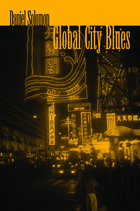 Global City Blues
Daniel Solomon
Island Press, 2003 "This is a book about the making of cities and the buildings that compose them. It is about the conditions under which an architect engaged in those activities now works, how those conditions evolved and why they are changing. It is about the qualities of life that are threatened by the ways cities are built at the beginning of the 21st century and intelligent response to those threats. It is about why the city planning ideas and the cultural cuisinart that came in the box with modern architecture are a lingering menace." -- from Global City Blues. Much of the architecture and town planning of the past fifty years has been based on an unsubstantiated optimism about the promise of modernity. In our rush to embrace the future, we invented new ways of building that rejected the past and sent people headlong into a placeless limbo where they are insulated from each other and cut off from such basic experiences of location as the weather and the time of day. Despite calamitous results, many architects and planners remain enamored of the modernist ideals that underlie these changes. In Global City Blues, renowned architect Daniel Solomon presents a perceptive overview and an insightful assessment of how the power and seductiveness of modernist ideals led us astray. Through a series of independent but linked essays, he takes the reader on a personal picaresque, introducing us to people, places, and ideas that have shaped thinking about planning and building and that laid the foundation for his beliefs about the world we live in and the kind of world we should be making. As an alternative, Daniel Solomon discusses the ideas and precepts of New Urbanism, a reform movement he helped found that has risen to prominence in the past decade. New Urbanism offers a vital counterbalance to the forces of sprawl, urban disintegration, and placelessness that have so transformed the contemporary landscape. Global City Blues is a fresh and original look at what the history of urban form can teach us about creating built environments that work for people.
The Global City Debate Reconsidered: Economic Globalization in Contemporary Dutch Cities
Jeroen van der Waal
Amsterdam University Press, 2015 The idea of the "global city," which focuses on globalisation's impact on the social, financial, and political reality of cities in advanced economies, has become widely influential in the decades since its introduction-and yet the major issues in the "global city debate" remain unresolved. This book provides a systematic overview of the debate and competing theoretical notions, as well as an argument for the need to test the framework's empirical validity before the unresolved questions can be fruitfully addressed. By testing data from the Netherlands in the 1990s and 2000s, the author demonstrates the value of rigorous empirical scrutiny while offering fresh insights for the global city debate as a whole.
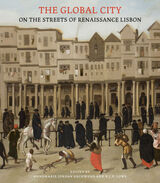 The Global City: On the Streets of Renaissance Lisbon
Edited by Annemarie Jordan Gschwend and K.J.P. Lowe
Paul Holberton Publishing, 2021 Honorable Mention, American Society for Hispanic Art Historical Studies's Eleanor Tufts Book Award, hailed by the award committee as a "transformative scholarly contribution."
Winner, 2016 Admiral Teixeira da Mota Prize from the Academia de Marinha (Naval Academy), Lisbon
Recently identified by the editors as the Rua Nova dos Mercadores, the principal commercial and financial street in Renaissance Lisbon, two sixteenth-century paintings, acquired by Dante Gabriel Rossetti in 1866, form the starting point for this portrait of a global city in the early modern period. Focusing on unpublished objects, and incorporating newly discovered documents and inventories that allow novel interpretations of the Rua Nova and the goods for sale on it, these essays offer a compelling and original study of a metropolis whose reach once spanned four continents. The Rua Nova views painted by an anonymous Flemish artist portray an everyday scene on a recognizable street, with a diverse global population. This thoroughfare was the meeting point of all kinds of people, from rich to poor, slave to knight, indigenous Portuguese to Jews and diasporic black Africans.
The volume highlights the unique status of Lisbon as an entrepôt for curiosities, luxury goods and wild animals. As the Portuguese trading empire of the fifteenth and sixteenth century expanded sea-routes and networks from West Africa to India and the Far East, non-European cargoes were brought back to Renaissance Lisbon. Many rarities were earmarked for the Portuguese court, but simultaneously exclusive items were readily available for sale on the Rua Nova, the Lisbon equivalent of Bond Street or Fifth Avenue. Specialized shops offered West African and Ceylonese ivories, raffia and Asian textiles, rock crystals, Ming porcelain, Chinese and Ryukyuan lacquerware, jewelry, precious stones, naturalia and exotic animal byproducts. Lisbon was also a hub of distribution for overseas goods to other courts and cities in Europe. The cross-cultural and artistic influences between Lisbon and Portuguese Africa and Asia at this date are reassessed. Lisbon was imagined as the head of empire or caput mundi, while the River Tagus became the aquatic gateway to a globally connected world. Lisbon evolved into a dynamic Atlantic port city, excelling in shipbuilding, cartography and the manufacture of naval instruments. The historian Damião de Góis bragged of the "Tagus reigning over the world." Lisbon's fame depended on its river, an aquatic avenue that competed with the Rua Nova, providing a means of interaction, trade and communication along Lisbon’s coastline. Even for the cosmopolitan Góis, who traveled extensively for the Portuguese crown, Lisbon’s chaotic docks were worth describing. Of all the European cities he experienced, only Lisbon and her rival Seville could be "rightfully called Ladies and Queens of the Sea." Góis contended that they had opened up the early modern world through circumnavigation. Lisbon was destroyed in a devastating earthquake and tsunami in November 1755. These paintings are the only large-scale vistas of Rua Nova dos Mercadores to have survived, and together with the new objects and archival sources offer a fresh and original insight into Renaissance Lisbon and its material culture.
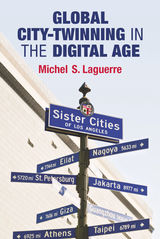 Global City-Twinning in the Digital Age
Michel S. Laguerre
University of Michigan Press, 2019 For many years, cities throughout the globe have developed ties with each other to process and nurture friendship, solidarity, and collaboration. These city relationships constitute a mode of governance distinct from those of cities that are not involved in such cross-border arrangements, with influence that expands far beyond region. In this light, Global City-Twinning in the Digital Age unveils an analysis of intercity relationships both on a global scale and as a global phenomenon with digital communication technologies that play key roles in upgrading traditional practices, enhancing cross-border cooperation, and facilitating the production of digital sister cities. This book analyzes the deployment of sister-city formations and operations throughout the world with a focus on cities of North America, Latin America, North Africa, Europe, and the Mediterranean region. Using a global approach, it discusses friendship, entrepreneurship, urban development, cooperative management, municipal policy, and digital entanglements. It expands the scope of study of sister cities by unveiling the role of immigrants, diaspora, and post-diaspora in the making and functioning of the digital model of sister cities.
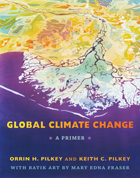 Global Climate Change: A Primer
Orrin H. Pilkey and Keith C. Pilkey
Duke University Press, 2011 An internationally recognized expert on the geology of barrier islands, Orrin H. Pilkey is one of the rare academics who engages in public advocacy about science-related issues. He has written dozens of books and articles explaining coastal processes to lay readers, and he is a frequent and outspoken interviewee in the mainstream media. Here, the colorful scientist takes on climate change deniers in an outstanding and much-needed primer on the science of global change and its effects. After explaining the greenhouse effect, Pilkey, writing with son Keith, turns to the damage it is causing: sea level rise, ocean acidification, glacier and sea ice melting, changing habitats, desertification, and the threats to animals, humans, coral reefs, marshes, and mangroves. These explanations are accompanied by Mary Edna Fraser’s stunning batiks depicting the large-scale arenas in which climate change plays out. The Pilkeys directly confront and rebut arguments typically advanced by global change deniers. Particularly valuable are their discussions of “Climategate,” a manufactured scandal that undermined respect for the scientific community, and the denial campaigns by the fossil fuel industry, which they compare to the tactics used by the tobacco companies a generation ago to obfuscate findings on the harm caused by cigarettes.
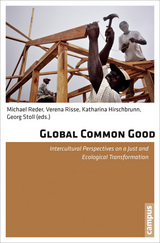 Global Common Good: Intercultural Perspectives on a Just and Ecological Transformation
Edited by Michael Reder, Verena Risse, Katharina Hirschbrunn, and Georg Stoll
Campus Verlag, 2015 Global challenges such as poverty, climate change, and economic crises are all problems that the global community must face collectively. But in order to do so successfully, we need to engage in a continued intercultural dialogue on alternative approaches to development that are ethically justifiable, politically acceptable, and ecologically sustainable. To this end, the Institute for Social and Development Studies at the Munich School of Philosophy in cooperation with MISEREOR, the German Catholic Bishops’ Organization for Development Cooperation, invited scholars from across the world to define and explore an overarching goal: the global common good. This book represents the product of their efforts; in it, contributors investigate normative ideals, analyze obstacles that prevent the realization of these ideals, and propose paths for global transformation.
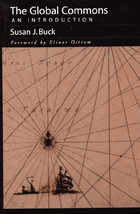 The Global Commons: An Introduction
Susan J. Buck; Foreword by Elinor Ostrom
Island Press, 1998 Vast areas of valuable resources unfettered by legal rights have, for centuries, been the central target of human exploitation and appropriation. The global commons -- Antarctica, the high seas and deep seabed minerals, the atmosphere, and space -- have remained exceptions only because access has been difficult or impossible, and the technology for successful extraction has been lacking. Now, technology has caught up with desire, and management regimes are needed to guide human use of these important resource domains. In The Global Commons, Susan Buck considers the history of human interactions with each of the global commons areas and provides a concise yet thorough account of the evolution of management regimes for each area. She explains historical underpinnings of international law, examines the stakeholders involved, and discusses current policy and problems associated with it. Buck applies key analytical concepts drawn from institutional analysis and regime theory to examine how legal and political concerns have affected the evolution of management regimes for the global commons. She presents in-depth case studies of each of the four regimes, outlining the historical evolution of the commons -- development of interest in exploiting the resource domain; conflicts among nations over the use of the commons; and efforts to design institutions to control access to the domains and to regulate their use -- and concluding with a description of the management regime that eventually emerged from the informal and formal negotiations. The Global Commons provides a clear, useful introduction to the subject that will be of interest to general readers as well as to students in international relations and international environmental law, and in environmental law and policy generally.
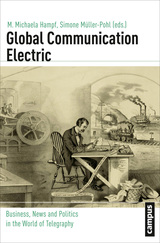 Global Communication Electric: Business, News and Politics in the World of Telegraphy
Edited by M. Michaela Hampf and Simone Müller-Pohl
Campus Verlag, 2013 As catalysts of our present global condition, telegraphs are emblems of modernity. The establishment of a worldwide network of landline and submarine cable connections in the mid-nineteenth century fostered the emergence of new structures and patterns of interaction on a global scale. World politics and a global economy only became possible with the creation of “global communication electric.”
This book examines the emergence of this global media system between 1860 and 1930 in four sections—"Inter|Nationalisms," "Agents|Actors," "Use|News," and "Space|Time"—that aim to broaden and challenge popular conceptions of telegraphy. In exploring the varied uses of telegraphy, real or imagined, Global Communication Electric expands the notion of the telegraph as a globalizing medium: of connection as well as friction; of political, social, and economic entanglement as well as disentanglement; and of crossing as well as creating distance in space and time.
Global Competitiveness and Industrial Growth in Taiwan and the Philippines
Cheng-Tian Kuo
University of Pittsburgh Press, 1995
Kuo contrasts the economic evolutions of Taiwan and the Philippines as the product of government and industry relations. The two nations shared many economic similarities-yet Taiwan moved from clientelism to state corporatism, while in the Philippines clientelism remains deeply entrenched.
Kuo's case studies in the textile, plywood, and electronics industries support these general arguments. He finds that clientelism invariably leads to economic problems, while a laissez-faire approach is unpredictable. The best formula for industrial success in a developing nation is close cooperation between business and government.
Global Corporate Citizenship
Anuradha Dayal-Gulati and Mark Finn
Northwestern University Press, 2006 Global Corporate Citizenship looks at issues of corporate responsibility globally, not just at multinational corporations operating worldwide, but at companies in developing countries facing important challenges within their own countries. Featuring impressive original field research by Kellogg School of Management graduate students in the Global Initiatives in Management program, individual sections of the book are dedicated to issues of corporate citizenship in a wide range of countries including China, Vietnam, Thailand, Argentina, and South Africa. An introduction by Kellogg professor Daniel Diermeier sets the book in context as corporations come to terms with the complex issues facing the significance and limits of global corporate citizenship.
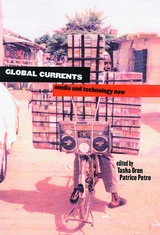 Global Currents: Media and Technology Now
Oren, Tasha G
Rutgers University Press, 2004 Rhetoric about media technology tends to fall into two extreme categories: unequivocal celebration or blanket condemnation. This is particularly true in debate over the clash of values when first world media infiltrate third world audiences.
Bringing together the best new work on contemporary media practices, technologies, and policies, the essayists in Global Currents argue that neither of these extreme views accurately represents the role of media technology today. New ways of thinking about film, television, music, and the internet demonstrate that it is not only media technologies that affect the cultures into which they are introduced—it is just as likely that the receiving culture will change the media.
Topics covered in the volume include copyright law and surveillance technology, cyber activism in the African Diaspora, transnational monopolies and local television industries, the marketing and consumption of “global music,” “click politics” and the war on Afghanistan, the techno-politics of distance education, artificial intelligence and global legal institutions, and traveling and “squatting” in digital space. Balanced between major theoretical positions and original field research, the selections address the political and cultural meanings that surround and configure new technologies.
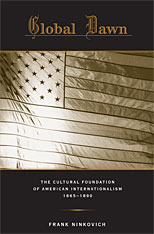 Global Dawn: The Cultural Foundation of American Internationalism, 1865–1890
Frank Ninkovich
Harvard University Press, 2009 Why did the United States become a global power? Frank Ninkovich shows that a cultural predisposition for thinking in global terms blossomed in the late nineteenth century, making possible the rise to world power as American liberals of the time took a wide-ranging interest in the world. At the center of their attention was the historical process they called “civilization,” whose most prominent features—a global economy, political democracy, and a global culture—anticipated what would later come to be known as globalization.
The continued spread of civilization, they believed, provided the answer to worrisome contemporary problems such as the faltering progress of democracy, a burgeoning arms race in Europe, and a dangerous imperialist competition. In addition to transforming international politics, a global civilization quickened by commercial and cultural exchanges would advance human equality and introduce the modern industrial way of life to traditional societies. Consistent with their universalist outlook, liberal internationalists also took issue with scientific racism by refusing to acknowledge racial hierarchy as a permanent feature of relations with nonwhite peoples.
Of little practical significance during a period when isolationism reigned supreme in U.S. foreign policy, this rich body of thought would become the cultural foundation of twentieth-century American internationalism.
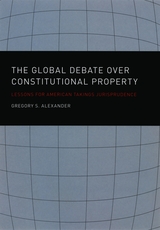 The Global Debate over Constitutional Property: Lessons for American Takings Jurisprudence
Gregory S. Alexander
University of Chicago Press, 2006 Countries around the world are heatedly debating whether property should be a constitutional right. But American lawyers have largely ignored this debate, which is divided into two clear camps: those who believe making property a constitutional right undermines democracy by fostering inequality, and those who believe it provides the security necessary to make democracy possible. In The Global Debate over Constitutional Property, Gregory Alexander recasts this discussion, arguing that both sides overlook a key problem: that constitutional protection, or lack thereof, has little bearing on how a society actually treats property.
A society’s traditions and culture, Alexander argues, have a much greater effect on property rights. Laws must aim, then, to change cultural ideas of property, rather than deem whether one has the right to own it. Ultimately, Alexander builds a strong case for improving American takings law by borrowing features from the laws of other countries—particularly those laws based on the idea that owning property not only confers rights, but also entails responsibilities to society as a whole.
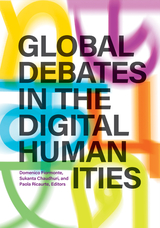 Global Debates in the Digital Humanities
Domenico Fiormonte
University of Minnesota Press, 2022 A necessary volume of essays working to decolonize the digital humanities
Often conceived of as an all-inclusive “big tent,” digital humanities has in fact been troubled by a lack of perspectives beyond Westernized and Anglophone contexts and assumptions. This latest collection in the Debates in the Digital Humanities series seeks to address this deficit in the field. Focused on thought and work that has been underappreciated for linguistic, cultural, or geopolitical reasons, contributors showcase alternative histories and perspectives that detail the rise of the digital humanities in the Global South and other “invisible” contexts and explore the implications of a globally diverse digital humanities. Advancing a vision of the digital humanities as a space where we can reimagine basic questions about our cultural and historical development, this volume challenges the field to undertake innovation and reform. Contributors: Maria José Afanador-Llach, U de los Andes, Bogotá; Maira E. Álvarez, U of Houston; Purbasha Auddy, Jadavpur U; Diana Barreto Ávila, U of British Columbia; Deepti Bharthur, IT for Change; Sayan Bhattacharyya, Singapore U of Technology and Design; Anastasia Bonch-Osmolovskaya, National Research U Higher School of Economics; Jing Chen, Nanjing U; Carlton Clark, Kazimieras Simonavičius U, Vilnius; Carolina Dalla Chiesa, Erasmus U, Rotterdam; Gimena del Rio Riande, Institute of Bibliographic Research and Textual Criticism; Leonardo Foletto, U of São Paulo; Rahul K. Gairola, Murdoch U; Sofia Gavrilova, Leibniz Institute for Regional Geography; Andre Goodrich, North-West U; Anita Gurumurthy, IT for Change; Aliz Horvath, Eötvös Loránd U; Igor Kim, Russian Academy of Sciences; Inna Kizhner, Siberian Federal U; Cédric Leterme, Tricontinental Center; Andres Lombana-Bermudez, Pontificia, U Javeriana, Bogotá; Lev Manovich, City U of New York; Itay Marienberg-Milikowsky, Ben-Gurion U of the Negev; Maciej Maryl, Polish Academy of Sciences; Nirmala Menon, Indian Institute of Technology, Indore; Boris Orekhov, National Research U Higher School of Economics; Ernesto Priego, U of London; Sylvia Fernández Quintanilla, U of Kansas; Nuria Rodríguez-Ortega, U of Málaga; Steffen Roth, U of Turku; Dibyadyuti Roy, Indian Institute of Technology, Jodhpur; Maxim Rumyantsev, Siberian Federal U; Puthiya Purayil Sneha, Centre for Internet and Society, Bengaluru; Juan Steyn, South African Centre for Digital Language Resources; Melissa Terras, U of Edinburgh; Ernesto Miranda Trigueros, U of the Cloister of Sor Juana; Lik Hang Tsui, City U of Hong Kong; Tim Unwin, U of London; Lei Zhang, U of Wisconsin–La Crosse.
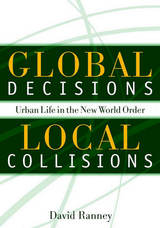 Global Decisions, Local Collisions: Urban Life In The New World Order
David Ranney
Temple University Press, 2002 The politics of the past must be rethought. They were designed for a world where the U.S. manufactured at home, and where portions of U.S.-based labor had traded social stability for high wages. In this thought-provoking work, David Ranney shows how our world has changed and offers a plan for remaking progressive politics to meet the crises brought about by what George H. W. Bush first termed "the new world order. "Drawing from his experiences in Chicago politics, first as a factory worker and later as an activist and academic, Ranney shows how the increasing mobility of capital, the easy availability of credit, and a changing government policies have reshaped the urban world where U.S. workers live their everyday lives. This is not the story of the interconnectedness of modern business, but rather the need for self-respecting people who bring home a weekly paycheck to see the common, global problems they face, and to work together to bring about meaningful change.Showing how globalization has led to specific local consequences for cities and the workers that inhabit them, David Ranney presents a means for taking stock of the effects of globalization; a look at these changes in labor markets; economic development politics; housing policy; and employment policies; and an organizing strategy for this new economic and social era.
Global Diffusion of Protest: Riding the Protest Wave in the Neoliberal Crisis
Edited by Donatella della Porta
Amsterdam University Press, 2017 Recent years have seen a new development in the growth and spread of popular protest: protests that began as local, homogeneous events-such as Occupy Wall Street or the protests of the Arab Spring-quickly left their original locations and local specificity behind and became global. This book looks at the development of this wave of protests, with an eye on protests against austerity and neoliberal economic policies, and offers a global view, covering events in Turkey, Brazil, Venezuela, South Africa, Bosnia, Bulgaria, Ukraine, and other locations.
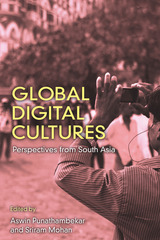 Global Digital Cultures: Perspectives from South Asia
Aswin Punathambekar and Sriram Mohan, Editors
University of Michigan Press, 2019 Digital media histories are part of a global network, and South Asia is a key nexus in shaping the trajectory of digital media in the twenty-first century. Digital platforms like Facebook, WhatsApp, and others are deeply embedded in the daily lives of millions of people around the world, shaping how people engage with others as kin, as citizens, and as consumers. Moving away from Anglo-American and strictly national frameworks, the essays in this book explore the intersections of local, national, regional, and global forces that shape contemporary digital culture(s) in regions like South Asia: the rise of digital and mobile media technologies, the ongoing transformation of established media industries, and emergent forms of digital media practice and use that are reconfiguring sociocultural, political, and economic terrains across the Indian subcontinent. From massive state-driven digital identity projects and YouTube censorship to Tinder and dating culture, from Twitter and primetime television to Facebook and political rumors, Global Digital Cultures focuses on enduring concerns of representation, identity, and power while grappling with algorithmic curation and data-driven processes of production, circulation, and consumption.
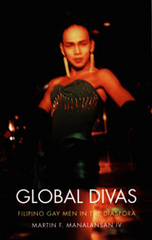 Global Divas: Filipino Gay Men in the Diaspora
Martin F. Manalansan IV
Duke University Press, 2003 A vivid ethnography of the global and transnational dimensions of gay identity as lived by Filipino immigrants in New York City, Global Divas challenges beliefs about the progressive development of a gay world and the eventual assimilation of all queer folks into gay modernity. Insisting that gay identity is not teleological but fraught with fissures, Martin Manalansan IV describes how Filipino gay immigrants, like many queers of color, are creating alternative paths to queer modernity and citizenship. He makes a compelling argument for the significance of diaspora and immigration as sites for investigating the complexities of gender, race, and sexuality. Manalansan locates diasporic, transnational, and global dimensions of gay and other queer identities within a framework of quotidian struggles ranging from everyday domesticity to public engagements with racialized and gendered images to life-threatening situations involving AIDS. He reveals the gritty, mundane, and often contradictory deeds and utterances of Filipino gay men as key elements of queer globalization and transnationalism. Through careful and sensitive analysis of these men’s lives and rituals, he demonstrates that transnational gay identity is not merely a consumable product or lifestyle, but rather a pivotal element in the multiple, shifting relationships that queer immigrants of color mobilize as they confront the tribulations of a changing world.
Global Dynamics of Shi'a Marriages: Religion, Gender, and Belonging
Yafa Shanneik
Rutgers University Press, 2022 Muslim marriages have been the focus of considerable public debate in Europe and beyond, in Muslim-majority countries as well as in settings where Muslims are a minority. Most academic work has focused on how the majority Sunni Muslims conclude marriages. This volume, in contrast, focuses on Twelver Shi'a Muslims in Iran, Pakistan, Oman, Indonesia, Norway, and the Netherlands. The volume makes an original contribution to understanding the global dynamics of Shi'a marriage practices in a wide range of contexts--not only its geographical spread but also by providing a critical analysis of the socio-economic, religious, ethnic, and political discourses of each context. The book sheds light on new marriage forms presented through a bottom up approach focusing on the lived experiences of Shi'a Muslims negotiating a diverse range of relationships and forms of belonging.
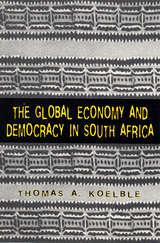 The Global Economy and Democracy in South Africa
Koelble, Thomas A.
Rutgers University Press, 1998 Democracy differs dramatically in First and Third World countries. Academic debate in the West focuses on democractic institutional arrangements and concepts such as elections, freedom of association, and freedom of speech, and little attention is paid to the content of emancipatory policy. In the Third World and especially in South Africa, emancipation and socio-economic redistribution are more important aspects in the popular perception of what democracy means than considerations of how political institutions function. These variations put regimes such as the ANC-led government on a collision course with the West. Arguing that a consolidation of democratic institutions depends on a redistribution of resources, Thomas Koelble analyzes two crucial policy arenas-housing and education-to clarify the enormous problems facing the current South African government. For successful consolidation of institutional democracy in South Africa, Western political and financial institutions must provide support for that redistribution. Without their support, the ANC constituency's expectations that democracy will improve the quality of life will go unrealized, and the government may fail. Koelble also posits that while the new South African constitution encompasses aspects of a consensus oriented system in terms of its federal structures and various rights to minorities, it is a system dominated by one large political party that is not constitutionally required to share power. He suggests that the ANC would have better served the cause of democracy had it included rather than excluded their opposition from political power. This majoritarian rule may deteriorate into another version of "race politics". Such race politics will have deleterious effects on both South Africa's polity and economy.
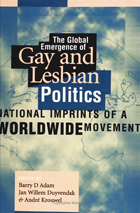 Global Emergence Of Gay & Lesbian Pol
edited by Barry D Adam, Jan Willem Duyvendak and André Krouwel
Temple University Press, 1998 Since the Stonewall rebellion in 1969, gay and lesbian movements have grown from small outposts in a few major cities to a worldwide mobilization. This book brings together stories of the emergence and growth of movements in more than a dozen nations on five continents, with a comparative look that offers insights for both activists and those who study social movements.
Lesbian and gay groups have existed for more than a century, often struggling against enormous odds. In the middle of the twentieth century, movement organizations were suppressed or swept away by fascism, Stalinism, and McCarthyism. Refounded by a few pioneers in the postwar period, movements have risen again as more and more people have stood up for their right to love and live with persons of their choice.
This book addresses both the mature movements of the European Union, North America, and Australia and the newer movements emerging in Latin America, Eastern Europe, and parts of Asia and Africa, examining the social and political conditions that shape movement opportunities and trajectories. It is rich in the details of gay and lesbian cultural and political life in different countries.
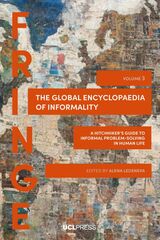 Global Encyclopaedia of Informality, Volume 3: A Hitchhiker's Guide to Informal Problem-Solving in human life
Edited by Alena Ledeneva
University College London, 2024 A journey through the informal and taken-for-granted ways of getting things done across the world.
For a post-human hitchhiker, human life–with its anxiety, aging, illness, and constant need for problem-solving–may look unviable. Yet, for humans, the life struggle is softened by human touch, human emotion, and human cooperation.
The Global Encyclopaedia of Informality, Volume 3 continues the journey of the two previous volumes into the world’s open secrets, unwritten rules, and hidden practices. It focuses on issues of emotional ambivalence and pressures of the digital age. The informal practices presented in this volume demonstrate the urgency of alleviating tensions between continuity and all-too-rapid change and the need to tackle the central problem of modern societies—uncertainty.
The volume takes the reader on a biographical journey through elusive, taken-for-granted, or banal ways of getting things done from over seventy countries and world regions. It offers an innovative understanding of the significance of fringes and challenges the assumption that informality is associated exclusively with poverty, underdevelopment, the Global South, oppressive regimes, or the former socialist countries of Eastern Europe and Central Asia. It also maps the patterns of informality around the globe, identifies specific informal practices in a context-sensitive way, and documents their ambivalent impact on people engaged in problem-solving, on societies in which these problems arise, and on humanity overall.
The Global Encyclopaedia of Informality, Volume I: Towards Understanding of Social and Cultural Complexity
Edited by Alena Ledeneva
University College London, 2018 Broadly defined as “ways of getting things done,” the invisible yet powerful concepts of “informal practices” tend to escape articulation in official discourse. These practices include emotion-driven exchanges of gifts or favours and tributes for services, interest-driven know-how (from informal welfare to informal employment), identity-driven practices of solidarity, and power-driven forms of co-optation and control. Yet, the possible paradox of the indiscernibility of these informal practices is their ubiquity. Alena Ledeneva’s wholly unique two-volume work collaborates with over two hundred scholars across five continents, illustrating how informal practices are deeply embedded across the globe yet still remain underestimated in policy-making procedures.
The Global Encyclopaedia of Informality, Volume II: Understanding Social and Cultural Complexity
Edited by Alena Ledeneva
University College London, 2018 Broadly defined as “ways of getting things done,” the invisible yet powerful concepts of “informal practices” tend to escape articulation in official discourse. These practices include emotion-driven exchanges of gifts or favours and tributes for services, interest-driven know-how (from informal welfare to informal employment), identity-driven practices of solidarity, and power-driven forms of co-optation and control. Yet, the possible paradox of the indiscernibility of these informal practices is their ubiquity. Alena Ledeneva’s wholly unique two-volume work collaborates with over two hundred scholars across five continents, illustrating how informal practices are deeply embedded across the globe yet still remain underestimated in policy-making procedures.
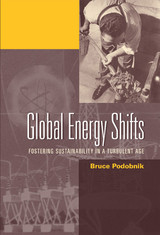 Global Energy Shifts: Fostering Sustainability in a Turbulent Age
Bruce Podobnik
Temple University Press, 2005 In the latter part of the nineteenth century, the citizens of Great Britain faced a formidable challenge: coal resources seemed destined to run out and commentators were unable to foresee a viable alternative fuel. To address the crisis, military strategists were urged to seize control of coal in foreign lands, and companies were encouraged to increase domestic production of the resource.
In Global Energy Shifts, Bruce Podobnik draws intriguing parallels between the "coal panics" that once swept through Britain and the "oil panics" that grip the world today. His concise history of global energy use contextualizes the coal and oil scares, demonstrating how the convergence of specific geopolitical, commercial, and social conditions can generate rapid and far-reaching transformations in the energy foundations of our world.
Ultimately, Podobnik informs readers on how a "crisis" of one fuel system is quickly averted with the introduction of another, and describes opportunities for shifting our problematic, oil-based system toward a renewable energy system.
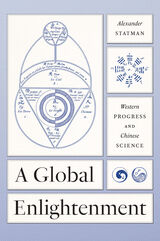 A Global Enlightenment: Western Progress and Chinese Science
Alexander Statman
University of Chicago Press, 2023 A revisionist history of the idea of progress reveals an unknown story about European engagement with Chinese science.
The Enlightenment gave rise not only to new ideas of progress but consequential debates about them. Did distant times and places have anything to teach the here and now? Voltaire could believe that they did; Hegel was convinced that they did not. Early philosophes praised Chinese philosophy as an enduring model of reason. Later philosophes rejected it as stuck in the past. Seeking to vindicate ancient knowledge, a group of French statesmen and savants began a conversation with the last great scholar of the Jesuit mission to China. Together, they drew from Chinese learning to challenge the emerging concept of Western advancement.
A Global Enlightenment traces this overlooked exchange between China and the West to make compelling claims about the history of progress, notions of European exceptionalism, and European engagement with Chinese science. To tell this story, Alexander Statman focuses on a group of thinkers he terms “orphans of the Enlightenment,” intellectuals who embraced many of their contemporaries’ ideals but valued ancient wisdom. They studied astronomical records, gas balloons, electrical machines, yin-yang cosmology, animal magnetism, and Daoist medicine. And their inquiries helped establish a new approach to the global history of science.
Rich with new archival research and fascinating anecdotes, A Global Enlightenment deconstructs two common assumptions about the early to late modern period. Though historians have held that the idea of a mysterious and inscrutable East was inherent in Enlightenment progress theory, Statman argues that it was the orphans of the Enlightenment who put it there: by identifying China as a source of ancient wisdom, they turned it into a foil for scientific development. But while historical consensus supposes that non-Western ideas were banished from European thought over the course of the Enlightenment, Statman finds that Europeans became more interested in Chinese science—as a precursor, then as an antithesis, and finally as an alternative to modernity.
 The Global Environment and International Law
By Joseph F. C. DiMento
University of Texas Press, 2003 2004 — A Choice Outstanding Academic Book International law has become the key arena for protecting the global environment. Since the 1970s, literally hundreds of international treaties, protocols, conventions, and rules under customary law have been enacted to deal with such problems as global warming, biodiversity loss, and toxic pollution. Proponents of the legal approach to environmental protection have already achieved significant successes in such areas as saving endangered species, reducing pollution, and cleaning up whole regions, but skeptics point to ongoing environmental degradation to argue that international law is an ineffective tool for protecting the global environment. In this book, Joseph DiMento reviews the record of international efforts to use law to make our planet more livable. He looks at how law has been used successfully—often in highly innovative ways—to influence the environmental actions of governments, multinational corporations, and individuals. And he also assesses the failures of international law in order to make policy recommendations that could increase the effectiveness of environmental law. He concludes that a "supranational model" is not the preferred way to influence the actions of sovereign nations and that international environmental law has been and must continue to be a laboratory to test approaches to lawmaking and implementation for the global community.
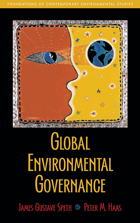 Global Environmental Governance: Foundations of Contemporary Environmental Studies
James Gustave Speth and Peter M. Haas
Island Press, 2006 Today's most pressing environmental problems are planetary in scope, confounding the political will of any one nation. How can we solve them?
Global Environmental Governance offers the essential information, theory, and practical insight needed to tackle this critical challenge. It examines ten major environmental threats-climate disruption, biodiversity loss, acid rain, ozone depletion, deforestation, desertification, freshwater degradation and shortages, marine fisheries decline, toxic pollutants, and excess nitrogen-and explores how they can be addressed through treaties, governance regimes, and new forms of international cooperation.
Written by Gus Speth, one of the architects of the international environmental movement, and accomplished political scientist Peter M. Haas, Global Environmental Governance tells the story of how the community of nations, nongovernmental organizations, scientists, and multinational corporations have in recent decades created an unprecedented set of laws and institutions intended to help solve large-scale environmental problems. The book critically examines the serious shortcomings of current efforts and the underlying reasons why disturbing trends persist. It presents key concepts in international law and regime formation in simple, accessible language, and describes the current institutional landscape as well as lessons learned and new directions needed in international governance. Global Environmental Governance is a concise guide, with lists of key terms, study questions, and other features designed to help readers think about and understand the concepts discussed.
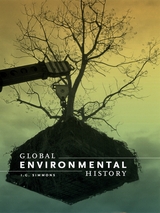 Global Environmental History
I. G. Simmons
University of Chicago Press, 2008 The global environment has been in a state of change since the height of the last glacial maximum of the Pleistocene. Examining this state of flux of both the natural environment and the living organisms that inhabit it, I. G. Simmons’s Global Environmental History ranges from 10,000 BCE to the modern day to present an incredibly rich and deep time overview of how we have come to our current state of ecological crisis.
A far-reaching approach that considers the truly global picture and recognizes the contributions of many disciplines—including the natural sciences, the social sciences, and increasingly, the humanities—Global Environmental History focuses not only on the material world but also on humans’ ideas about the planet and their place on it. Taking as his starting point the major phases of human technological evolution of the last 12,000 years, Simmons considers how these changes have affected the natural world and goes on to assess the response to conditions such as climate change. By putting today’s environmental preoccupations into a long-term perspective, Simmons reveals the history of some current anxieties.
A timely examination of the interrelation of history and nature, Simmons’s book will be welcomed by any concerned reader interested in the origins of the modern environmental crisis.
The Global Epidemiology of Infectious Diseases
Christopher J. L. Murray and Alan D. Lopez
Harvard University Press Deaths from infectious diseases continue to take a heavy toll even though there have been spectacular successes in their control over the last thirty years. In the developing regions, five of the ten leading causes of death and disease burden in 1990 were infectious diseases--respiratory infections, diarrhea, tuberculosis, measles, and malaria--while in the developed regions the only infectious disease among the ten leading causes of death in 1990 was respiratory infections.
This volume contains comprehensive data and detailed discussions of the global epidemiologies of twenty-three infectious diseases, including the above-mentioned conditions as well as hepatitis B, meningitis, polio, and tetanus.
The Global Epidemiology of Infectious Diseases will serve as a comprehensive reference for epidemiologists, public health professionals, and tropical disease specialists.
 The Global Epidemiology of Noncommunicable Diseases: The Epidemiology and Burdens of Cancers, Cardiovascular Diseases, Diabetes Mellitus, Respiratory Disorders, and Other Major Conditions
Christopher J. L. Murray
Harvard University Press Over 50 percent of all deaths worldwide are from noncommunicable diseases. The results of the Global Burden of Disease Study dispel the notions that these noncommunicable diseases are related to affluence. In all developing regions, except for India and sub-Saharan Africa, noncommunicable diseases are responsible for more deaths than infectious diseases. Deaths from noncommunicable diseases have been projected to climb from 28.1 million deaths in 1990 to 49.7 million in 2020, increasing as a proportion of all deaths from 55 percent in 1990 to 73 percent in 2020.
This volume provides comprehensive data and detailed discussions of the epidemiologies of all major cancers and cardiovascular conditions, as well as those of chronic obstructive pulmonary disease, asthma, ulcers, diabetes, nephritis, cirrhosis, and appendicitis.
Global Europe: The External Relations of the European Union
Otto Holman
Amsterdam University Press, 2019 The European Union is facing the worst existential crisis in its 60-year history. At the same time, it is confronted with old and new challenges in its environment that call for joint action. But how do matters stand with the EU's capacity to act? Does the EU manage to effectively combine the different components of its external relations-such as trade, development aid, and security policy-better than it did in the past? How is the EU's external action determined by the internal socio-economic and political crises in its member states?
These questions and more are answered in 'Global Europe' in the context of the current impasse in the integration process. A clear analysis of the history of the EU's external relations up to now provides us with a better insight into the feasibility of EU strategies directed at the outside world.
 The Global Face of Public Faith: Politics, Human Rights, and Christian Ethics
David Hollenbach, SJ
Georgetown University Press, 2003 The Global Face of Public Faith addresses the hotly debated question of the role religion should play in politics in both the American and international contexts. It engages the fears that public religion threatens American democracy and could lead to a global clash of civilizations and new wars of religion. It analyzes how Christianity can attain common ground with other religious communities, thus becoming a force for peace and human rights. The separation of church from state need not mean the privatization of religion. Religious engagement in public life can strengthen civic life by encouraging active citizen participation that promotes both justice and peace. The question of religion and politics should thus become an argument about how faith becomes public, not whether it does. Religious communities, Christianity in particular, should be vigorous advocates of human rights, democratic governance, and economic development worldwide. In so doing, they will also become peacemakers. David Hollenbach is a calm voice of reason in a chaotic world, with an eye that sees beyond national horizons to where human needs and human rights converge. He is convinced that religious traditions can find common ground—through the use of rights and rights language. The Global Face of Public Faith reinforces his commitment to confronting such issues as poverty and economic development, globalism, and interreligious dialogue. He focuses here on faith and the Catholic tradition in politics; the role of the church in American public life; and the wider issues of global challenges and ethics—in a search for a common set of moral standards and a international ethic through a commitment to universal human rights. While not denying the difficulties of forging such a consensus, he nonetheless sees the possibility for justice, and reasons for hope. And hope is something the world can always use.
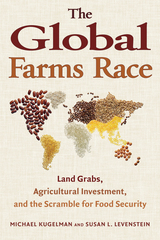 The Global Farms Race: Land Grabs, Agricultural Investment, and the Scramble for Food Security
Michael Kugelman and Susan Levenstein
Island Press, 2013 As we struggle to feed a global population speeding toward 9 billion, we have entered a new phase of the food crisis. Wealthy countries that import much of their food, along with private investors, are racing to buy or lease huge swaths of farmland abroad. The Global Farms Race is the first book to examine this burgeoning trend in all its complexity, considering the implications for investors, host countries, and the world as a whole.
The debate over large-scale land acquisition is typically polarized, with critics lambasting it as a form of “neocolonialism,” and proponents lauding it as an elixir for the poor yields, inefficient technology, and unemployment plaguing global agriculture. The Global Farms Race instead offers diverse perspectives, featuring contributions from agricultural investment consultants, farmers’ organizations, international NGOs, and academics. The book addresses historical context, environmental impacts, and social effects, and covers all the major geographic areas of investment.
Nearly 230 million hectares of farmland—an area equivalent to the size of Western Europe—have been sold or leased since 2001, with most of these transactions occurring since 2008. As the deals continue to increase, it is imperative for anyone concerned with food security to understand them and their consequences. The Global Farms Race is a critical resource to develop that understanding.
Global Fashion Brands: Style, Luxury and History
Edited by Joseph H. Hancock II, Gjoko Muratovski, Veronica Manlow, and Anne Peirson-Smith
Intellect Books, 2014 Fashion branding is more than just advertising. It helps to encourage the purchase and repurchase of consumer goods from the same company. While historically fashion branding has primarily focused on consumption and purchasing decisions, recent scholarship suggests that branding is a process that needs to be analyzed from a style, luxury, and historical pop cultural view using critical, ethnographic, individualistic, or interpretive methods.
In this collection, the contributors explore the meaning behind fashion branding in the context of the contested power relations underpinning the production, marketing, and consumption of style and fashion as part of our global culture.
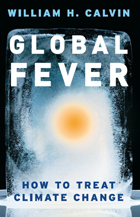 Global Fever: How to Treat Climate Change
William H. Calvin
University of Chicago Press, 2008 Every decade since 1950 has seen more floods and more wildfires on every continent. Deserts are expanding, coral reefs are dying, fisheries are declining, hurricanes are strengthening. The debate about climate change is over: there’s no question that global warming has made the Earth sick, and the outlook for the future calls for ever-warmer temperatures and deadlier results. Something must be done—but how quickly?
With Global Fever, William H. Calvin delivers both a clear-eyed diagnosis and a strongly worded prescription. In striking, straightforward language, he first clearly sets out the current state of the Earth’s warming climate and the disastrous possibilities ahead should we continue on our current path. Increasing temperatures will kill off vegetation and dry up water resources, and their loss will lead, in an increasingly destructive feedback loop, to even more warming. Resource depletion, drought, and disease will follow, leading to socioeconomic upheaval—and accompanying violence—on a scale barely conceivable.
It is still possible, Calvin argues, to avoid such a dire fate. But we must act now, aggressively funneling resources into jump-starting what would amount to a third industrial revolution, this one of clean technologies—while simultaneously expanding our use of existing low-emission technologies, from nuclear power to plug-in hybrid vehicles, until we achieve the necessary scientific breakthroughs.
Passionately written, yet thoroughly grounded in the latest climate science, Global Fever delivers both a stark warning and an ambitious blueprint for saving the future of our planet.
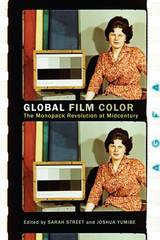 Global Film Color: The Monopack Revolution at Midcentury
Sarah Street
Rutgers University Press, 2024 Global Film Color: The Monopack Revolution at Midcentury explores color filmmaking in a variety of countries and regions including India, China, Japan, and Russia, and across Europe and Africa. Most previous accounts of color film have concentrated on early 20th century color processes and Technicolor. Far less is known about the introduction and application of color technologies in the period from the mid-1940s to the 1980s, when photochemical, “monopack” color stocks came to dominate global film markets. As Eastmancolor, Agfacolor, Fujicolor and other film stocks became broadly available and affordable, national film industries increasingly converted to color, transforming the look and feel of global cinema. Covering a broad range of perspectives, the chapters explore themes such as transnational flows, knowledge exchange and transfer, the cyclical and asymmetrical circulation of technology in a global context, as well as the accompanying transformation of color film aesthetics in the postwar decades.
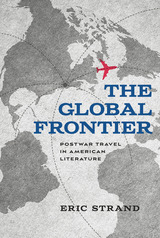 The Global Frontier: Postwar Travel in American Literature
Eric Strand
University of Iowa Press, 2023 Americans often associate travel with luxury, a cosmopolitan lifestyle, and relaxation. They travel to “get away from it all.” Most fail to consider that modern American travel began in the straitened circumstances of the 1930s, when President Franklin D. Roosevelt encouraged citizens to tour the United States so as to stimulate the economy. The Federal Writers’ Project composed guidebooks for each state, and tourism became a form of national solidarity.
After World War II, the Western frontier of self-reinvention and spatial expansion opened up through the explosion of the global travel industry. The Global Frontier shows that a variety of postwar literary travelers sought personal freedom and cultural enrichment outside their nation’s borders, including Black, female, and queer writers. But the price of incorporation into a transnational leisure class was complicity in postwar American imperialism and the rejection of 1930s social commitments. Eric Strand argues that capitalist globalization has enabled creative expression for marginalized identities, and that present-day humanists are the descendants of writers such as William S. Burroughs, Saul Bellow, Richard Wright, and Elizabeth Bishop. Yet this personal liberation has accompanied a vast growth of social inequality, which can only be addressed by reorienting toward progressive nationalism and an activist state.
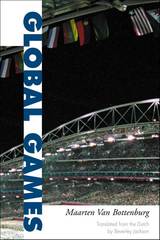 Global Games
Maarten Van Bottenburg
University of Illinois Press, 2001 Why is soccer the sport of choice in South America while baseball soared to popularity in the Caribbean? How did cricket become India's national sport? Why is China a stronghold of table tennis? Maarten Van Bottenburg asserts that a hidden competition of social and international relations, rather than the particular qualities of a given sport, explains who plays what sport and why. Looking at Britain, Germany, the United States, and Japan, Van Bottenburg discusses how individual sports developed, what institutions and groups spread them to other nations, and why certain sports and not others found an international audience. As he shows, the nature of the relationship between the country of origin and the adopting country help determine how successfully a sport takes hold and to what degree new practitioners modify it. Other key factors include which groups dominated and promoted the various sports in their countries of origin, which groups appropriated them elsewhere, and the latter's positions within their society's class structure.
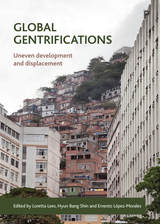 Global Gentrifications: Uneven Development and Displacement
Edited by Loretta Lees, Hyun Bang Shin, and Ernesto Lopez
Bristol University Press, 2014 Under contemporary capitalism the extraction of value from the built environment has escalated, a phenomenon working in tandem with other urban processes to lay the foundations for the exploitative processes of gentrification worldwide. Global Gentrifications critically assesses and tests the meaning and significance of gentrification in places outside the usual suspects of the Global North. Informed by a rich array of case studies from cities in Asia, Latin America, Africa, Southern Europe, and beyond, the book illuminates both the geographical generalities and specificities associated with the uneven process of gentrification globally. Highlighting the intensifying global struggles over urban space, it underlines gentrification as a growing and important battleground in the contemporary world, making the book a vital resource for students and academics as well as policy makers, planners, and community organizations.
Global Gold: Aesthetics, Material Desires, Economies in the Late Medieval and Early Modern World
Thomas B. F. Cummins
Harvard University Press Gold as a material and gold as a value becomes a truly universal equivalent in the early modern world as global economies begin to emerge after 1492. The essays in Global Gold present both the aesthetic and economic conditions that immediately precede the emergence of this global commerce as well as the immediate and various consequences of those interactions. Through interdisciplinary essays by scholars of European, American, African, and Asian history and art history, the differences and commonalities of gold’s monetary, economic, and aesthetic roles are explored within the crucible of a unique historical period of transition, conquest, and the exploitation of natural and human resources.
 Global Goods and the Country House: Comparative Perspectives, 1650–1800
Edited by Jon Stobart
University College London, 2023 Fresh insights into the multi-directional flow of goods and cultures that enmeshed the eighteenth century.
Global goods were central to the material culture of eighteenth-century country houses. Across Europe, mahogany furniture, Chinese wallpapers, and Indian textiles formed the backdrop to genteel practices of drinking sweetened coffee, tea, and chocolate from Chinese porcelain. They tied these houses and their wealthy owners into global systems of supply and the processes of colonialism and empire.
Global Goods and the Country House builds on these narratives and then challenges them by decentering our perspective. It offers a comparative framework that explores the definition, ownership, and meaning of global goods outside the usual context of European imperial powers. What were global goods and what did they do for and mean to wealthy landowners in places at the “periphery” of Europe (Sweden and Wallachia), in the British colonies of North America and the Caribbean, or in the extra-colonial context (Japan or Rajasthan)? By placing these goods in their specific material context—from the English country house to the princely palaces of Rajasthan—we gain a better understanding of their use and meaning and of their role in linking the global and the local.
 Global Governance in Question: Empire, Class and the New Common Sense in Managing North-South Relations
Susanne Soederberg
Pluto Press, 2006 "Global governance is the latest buzzword. Now comes a study that brings clarity and critical analysis to this ill-defined topic."
William I. Robinson, University of California-Santa Barbara
"[An] acute and revealing examination of the economic difficulties facing the American empire."
Ronnie D. Lipschutz, Professor of Politics, University of California, Santa Cruz
"Indispensable for students of international polical economy and a must for political activists." Professor Elmar Altvater, Department of Political Science, Free University, Berlin
Like many buzzwords, 'global governance' is as poorly understood as it is popular. In contrast to most mainstream accounts, this book examines global economic governance as an integral moment of contemporary capitalism -- presenting a critical insight into its real nature and the interests that it serves.
This book begins by asking what has not been discussed in the mainstream debates and why. Drawing on a Marxist perspective, Soederberg explores neglected issues including transnational debt and the increasingly coercive nature of US aid to so-called Œfailed states'. Soederberg argues that mainstream understandings fail to engage with the wider contradictions that characterise global capitalism. In consequence, there is no explanation of the changing nature of American empire and capitalist power in the world. Furthermore, Soederberg argues that global governance acts to normalise and legitimise increasingly austere forms of capitalist expansion, which may be regarded as a deepening and broadening of neoliberalism.
Susanne Soederberg is a Canada Research Chair in Global Political Economy and Associate Professor in International Development Studies at Queen's University, Kingston, Canada. She is author of The Politics of the New International Financial Architecture: Reimposing Neoliberal Domination in the Global South (Zed, 2005).
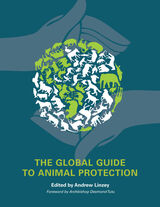 The Global Guide to Animal Protection
Edited by Andrew Linzey
University of Illinois Press, 2013 Raising awareness of human indifference and cruelty toward animals, The Global Guide to Animal Protection includes more than 180 introductory articles that survey the extent of worldwide human exploitation of animals from a variety of perspectives. In addition to entries on often disturbing examples of human cruelty toward animals, the book provides inspiring accounts of attempts by courageous individuals--including Jane Goodall, Shirley McGreal, Birute Mary Galdikas, Richard D. Ryder, and Roger Fouts--to challenge and change exploitative practices. As concern for animals and their welfare grows, this volume will be an indispensable aid to general readers, activists, scholars, and students interested in developing a keener awareness of cruelty to animals and considering avenues for reform. Also included is a special foreword by Archbishop Desmond Tutu, urging readers to seek justice and protection for all creatures, humans and animals alike.
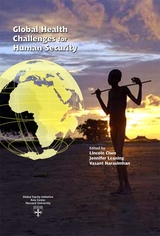 Global Health Challenges for Human Security
Lincoln C. Chen
Harvard University Press, 2003 The goals of health and human security are fundamentally valued in all societies, yet the breadth of their interconnections are not properly understood. This volume explores the evolving relationship between health and security in today's interdependent world, and offers policy guidelines for global health action.
This volume underscores three basic principles. First, recent developments in the changing security landscape present enormous challenges for human security and global health. Second, although the connections between health and security are long-standing, the current context of new conflicts, pervasive poverty, and accelerating global flows has brought the fields closer together. Finally, a human security approach dependent upon individual and collective action can identify new strategies for meeting the goals of global health and security.
The distinguished contributions to this volume were commissioned by Harvard University's Global Equity Initiative, a research unit supporting the work of the International Commission on Human Security.
Global Health for All: Knowledge, Politics, and Practices
Jean-Paul Gaudillière
Rutgers University Press, 2022 Global Health for All trains a critical lens on global health to share the stories that global health’s practices and logics tell about 20th and 21st century configurations of science and power. An ethnography on multiple scales, the book focuses on global health’s key epistemic and therapeutic practices like localization, measurement, triage, markets, technology, care, and regulation. Its roving approach traverses policy centers, sites of intervention, and innumerable spaces in between to consider what happens when globalized logics, circulations, and actors work to imagine, modify, and manage health. By resting in these in-between places, Global Health for All simultaneously examines global health as a coherent system and as a dynamic, unpredictable collection of modular parts.
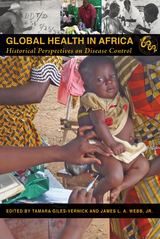 Global Health in Africa: Historical Perspectives on Disease Control
Tamara Giles-Vernick
Ohio University Press, 2013 Global Health in Africa is a first exploration of selected histories of global health initiatives in Africa. The collection addresses some of the most important interventions in disease control, including mass vaccination, large-scale treatment and/or prophylaxis campaigns, harm reduction efforts, and nutritional and virological research.The chapters in this collection are organized in three sections that evaluate linkages between past, present, and emergent. Part I, “Looking Back,” contains four chapters that analyze colonial-era interventions and reflect upon their implications for contemporary interventions. Part II, “The Past in the Present,” contains essays exploring the historical dimensions and unexamined assumptions of contemporary disease control programs. Part III, “The Past in the Future,” examines two fields of public health intervention in which efforts to reduce disease transmission and future harm are premised on an understanding of the past. This much-needed volume brings together international experts from the disciplines of demography, anthropology, and historical epidemiology. Covering health initiatives from smallpox vaccinations to malaria control to HIV campaigns, Global Health in Africa offers a first comprehensive look at some of global health’s most important challenges.
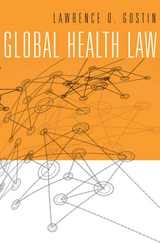 Global Health Law
Lawrence O. Gostin
Harvard University Press, 2014 The international community has made great progress in improving global health. But staggering health inequalities between rich and poor still remain, raising fundamental questions of social justice. In a book that systematically defines the burgeoning field of global health law, Lawrence Gostin drives home the need for effective global governance for health and offers a blueprint for reform, based on the principle that the opportunity to live a healthy life is a basic human right.
Gostin shows how critical it is for institutions and international agreements to focus not only on illness but also on the essential conditions that enable people to stay healthy throughout their lifespan: nutrition, clean water, mosquito control, and tobacco reduction. Policies that shape agriculture, trade, and the environment have long-term impacts on health, and Gostin proposes major reforms of global health institutions and governments to ensure better coordination, more transparency, and accountability. He illustrates the power of global health law with case studies on AIDS, influenza, tobacco, and health worker migration.
Today's pressing health needs worldwide are a problem not only for the medical profession but also for all concerned citizens. Designed with the beginning student, advanced researcher, and informed public in mind, Global Health Law will be a foundational resource for teaching, advocacy, and public discourse in global health.
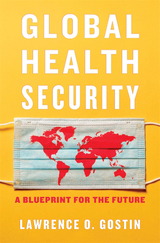 Global Health Security: A Blueprint for the Future
Lawrence O. Gostin
Harvard University Press, 2021 With lessons learned from COVID-19, a world-leading expert on pandemic preparedness proposes a pragmatic plan urgently needed for the future of global health security.
The COVID-19 pandemic revealed how unprepared the world was for such an event, as even the most sophisticated public health systems failed to cope. We must have far more investment and preparation, along with better detection, warning, and coordination within and across national boundaries. In an age of global pandemics, no country can achieve public health on its own. Health security planning is paramount.
Lawrence O. Gostin has spent three decades designing resilient health systems and governance that take account of our interconnected world, as a close advisor to the Centers for Disease Control and Prevention (CDC), the World Health Organization (WHO), and many public health agencies globally. Global Health Security addresses the borderless dangers societies now face, including infectious diseases and bioterrorism, and examines the political, environmental, and socioeconomic factors exacerbating these threats. Weak governance, ineffective health systems, and lack of preparedness are key sources of risk, and all of them came to the fore during the COVID-19 crisis, even—sometimes especially—in wealthy countries like the United States. But the solution is not just to improve national health policy, which can only react after the threat is realized at home. Gostin further proposes robust international institutions, tools for effective cross-border risk communication and action, and research programs targeting the global dimension of public health.
Creating these systems will require not only sustained financial investment but also shared values of cooperation, collective responsibility, and equity. Gostin has witnessed the triumph of these values in national and international forums and has a clear plan to tackle the challenges ahead. Global Health Security therefore offers pragmatic solutions that address the failures of the recent past, while looking toward what we know is coming. Nothing could be more important to the future health of nations.
 Global Health Statistics: A Compendium of Incidence, Prevalence and Mortality Estimates for Over 200 Conditions
Christopher J. L. Murray
Harvard University Press, 1996 The Global Burden of Disease and Injury Series details and analyzes global patterns of death and disability, providing a bold, comprehensive examination of the state of the world's health.
The encyclopedic Global Health Statistics provides, for the first time, epidemiological estimates for all major diseases and injuries. As part of the Global Burden of Disease project, over 100 disease experts analyzed these data, collected from exhaustive searches of registration data and published and unpublished studies.
Formatted for English, French, and Spanish readers, the figures are displayed in a comprehensive set of tables, presenting for over 200 causes estimates of mortality, incidence, prevalence, durations, and average ages of onset in 1990--all disaggregated by age, sex, and region. Demographic tables and projections of deaths and death rates are also provided.
This succinct data-set provides for the general reader the set of tools necessary to understand disease and injury from a global perspective; and it provides to the researcher unprecedented data to serve as a starting point for further study. This book should stand as an unparalleled desktop reference for anyone interested in the health of populations.
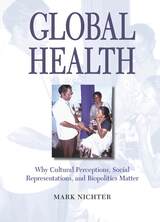 Global Health: Why Cultural Perceptions, Social Representations, and Biopolitics Matter
Mark Nichter
University of Arizona Press, 2008 In this lesson-packed book, Mark Nichter, one of the world’s leading medical anthropologists, summarizes what more than a quarter-century of health social science research has contributed to international health and elucidates what social science research can contribute to global health and the study of biopolitics in the future. Nichter focuses on our cultural understanding of infectious and vector-borne diseases, how they are understood locally, and how various populations respond to public health interventions.
The book examines the perceptions of three groups whose points of view on illness, health care, and the politics of responsibility often differ and frequently conflict: local populations living in developing countries, public health practitioners working in international health, and health planners/policy makers. The book is written for both health social scientists working in the fields of international health and development and public health practitioners interested in learning practical lessons they can put to good use when engaging communities in participatory problem solving.
Global Health critically examines representations that frame international health discourse. It also addresses the politics of what is possible in a world compelled to work together to face emerging and re-emerging diseases, the control of health threats associated with political ecology and defective modernization, and the rise of new assemblages of people who share a sense of biosociality. The book proposes research priorities for a new program of health social science research. Nichter calls for greater involvement by social scientists in studies of global health and emphasizes how medical anthropologists in particular can better involve themselves as scholar activists.
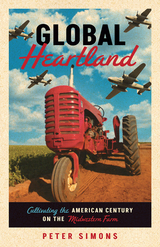 Global Heartland: Cultivating the American Century on the Midwestern Farm
Peter Simons
University of Minnesota Press, 2025 Highlighting the critical role of midwestern farmers in the creation of the American Century
Though often left out of the story of the making of the American Century, the farmers of the Midwest were at its center, fueling the nation’s growing power in the midtwentieth century. In Global Heartland, Peter Simons explores how, after decades of slipping to the margins of an urbanizing economy, these farmers assumed renewed strategic and cultural importance as they produced essential sustenance for overseas troops and food rations for a domestic population. During the mid-1900s, once-isolationist midwestern farmers came to see the continental interior not as an insulated space but as an environmentally rich landscape that mandated them to accept a larger stake in global affairs. Simons traces this transformation from an older agrarian internationalism rooted in religion and ties to family abroad to illuminate the increasing influence of the U.S. agricultural community during the Cold War. Examining regional political parties, Lend-Lease programs, wartime mass media, and farmer-led relief programs, and interspersing this history with vignettes revisiting the Mercy Wheat campaign of 1947, the postwar International Farm Youth Exchange, and the Flying Farmers organization, Simons offers an enlightening consideration of midwestern farmers’ involvement in America’s international ascent. Unique in its focus on farmers and their work rather than the more common attention to food or agricultural commodities, Global Heartland complicates and expands ideas of the farm industry’s role in American history.
Global Hermeneutics. Reflections and Consequences
Knut Holter
SBL Press, 2010 A collection of essays from the International Cooperation Initiative of the Society of Biblical Literature
This first volume in the International Voices in Biblical Studies series stimulates and facilitates a global hermeneutic in which centers and margins fade. The collection explores the global context within which biblical studies and interpretation take place, includes three case studies from different regions, and reflections on the consequences of global hermeneutics on biblical interpretation and on translation.
Features
Case studies from different regions
Essays explore both the positive and negative aspects of globalization
Seven essays represent scholarship from Africa and Latin America
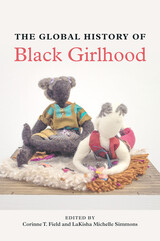 The Global History of Black Girlhood
Edited by Corinne T. Field and LaKisha Michelle Simmons
University of Illinois Press, 2022 The Global History of Black Girlhood boldly claims that Black girls are so important we should know their histories. Yet, how do we find the stories and materials we need to hear Black girls’ voices and understand their lives? Corinne T. Field and LaKisha Michelle Simmons edit a collection of writings that explores the many ways scholars, artists, and activists think and write about Black girls' pasts. The contributors engage in interdisciplinary conversations that consider what it means to be a girl; the meaning of Blackness when seen from the perspectives of girls in different times and places; and the ways Black girls have imagined themselves as part of a global African diaspora. Thought-provoking and original, The Global History of Black Girlhood opens up new possibilities for understanding Black girls in the past while offering useful tools for present-day Black girls eager to explore the histories of those who came before them. Contributors: Janaé E. Bonsu, Ruth Nicole Brown, Tara Bynum, Casidy Campbell, Katherine Capshaw, Bev Palesa Ditsie, Sarah Duff, Cynthia Greenlee, Claudrena Harold, Anasa Hicks, Lindsey Jones, Phindile Kunene, Denise Oliver-Velez, Jennifer Palmer, Vanessa Plumly, Shani Roper, SA Smythe, Nastassja Swift, Dara Walker, Najya Williams, and Nazera Wright
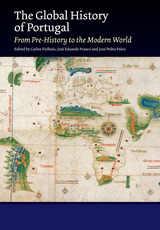 The Global History of Portugal: From Pre-History to the Modern World
Carlos D. Fiolhais
Sussex Academic Press, 2022 For thousands of years Portugal has been the point of arrival and departure for peoples, cultures, languages, ideas, fashions, behaviours, beliefs, institutions, and produce. While its miscegenation and global multimodal activity enriched the world in many ways, it also provoked violence, war, suffering, and resistance. The Global History of Portugal ;contains 93 chapters grouped into five parts: Pre-history, Antiquity, Middle Ages, Early Modern period, and Modern World. Each chapter begins with an event, interpreted in the light of global history. Each part opens with an introduction, offering a perspective of the period in question. The three Editors, five Scientific Coordinators (Joo Lus Cardoso, Carlos Fabio, Bernardo Vasconcelos e Sousa, Ctia Antunes, and Antnio Costa Pinto) and ninety Contributors offer a critical and analytical synthesis of the history that originated in Portuguese territory or passed through it, stimulating the process of encounter and dis-encounter in today's global world. The history presented gives special attention to the world that moulded Portugal and the Portuguese, and to the ways Portugal configured the world. It seeks to identify and understand the transversal entanglements of historic impact and the impulses these gave to the construction of Portugal and the world. Contemporary reflection and academic scholarship on the global history of leading nations has stimulated a rethinking of the past and a more comprehensive recognition of legacy. Historians can no longer overlook the wider world with which their country of investigation has interacted. Portugal's role in the dynamic circulation of peoples and ideas makes its global history not only unique by way of what took place but also in terms of a potential academic template for better understanding of how the past shapes the present, and more particularly the importance of acknowledging a country's past historic mis-steps and how these are dealt with by contemporary populations.
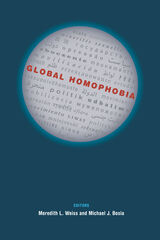 Global Homophobia: States, Movements, and the Politics of Oppression
Edited by Meredith L. Weiss and Michael J. Bosia
University of Illinois Press, 2013 While homophobia is commonly characterized as individual and personal prejudice, this collection of essays instead explores homophobia as a transnational political phenomenon. Editors Meredith L. Weiss and Michael J. Bosia theorize homophobia as a distinct configuration of repressive state-sponsored policies and practices with their own causes, explanations, and effects on how sexualities are understood and experienced in a variety of national contexts. The essays cover a broad range of geographic cases, including France, Ecuador, Iran, Lebanon, Poland, Singapore, and the United States. Combining rich empirical analysis with theoretical synthesis, these studies examine how homophobia travels across complex and ambiguous transnational networks, how it achieves and exerts decisive power, and how it shapes the collective identities and strategies of those groups it targets. The first comparative volume to focus specifically on the global diffusion of homophobia and its implications for an emerging worldwide LGBT movement, Global Homophobia opens new avenues of debate and dialogue for scholars, students, and activists. Contributors are Mark Blasius, Michael J. Bosia, David K. Johnson, Kapya J. Kaoma, Christine (Cricket) Keating, Katarzyna Korycki, Amy Lind, Abouzar Nasirzadeh, Conor O'Dwyer, Meredith L. Weiss, and Sami Zeidan.
 The Global Hunger Crisis: Tackling Food Insecurity in Developing Countries
Majda Bne Saad
Pluto Press, 2013 Millions across the world face the daily challenge to find enough food to survive. Hunger is on the rise globally, with more than 1.2 billion people suffering from food insecurity. Rising prices are further restricting food access.
In this deeply informative study, Majda Bne Saad identifies the causes for global hunger embedded in the current global political and economic system and highlights the key challenges facing food deficit countries. She shows how Western countries share the blame for global hunger through their support for subsidies to agricultural production and biofuels, which have created new challenges to food security worldwide.
Bne Saad argues that, as world population rises from 7 billion to 9.2 billion by 2050, there needs to be a ‘second green revolution’ to grow more food. She looks at the factors constraining low-income nations from achieving food security and considers policies which could generate income and enhance individuals' entitlement to food.
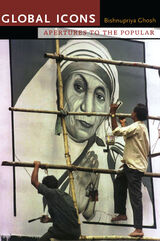 Global Icons: Apertures to the Popular
Bishnupriya Ghosh
Duke University Press, 2011 A widely disseminated photograph of Phoolan Devi, India’s famous bandit queen, surrendering to police forces in 1983 became an emotional touchstone for Indians who saw the outlaw as a lower-caste folk hero. That affective response was reignited in 1994 with the release of a feature film based on Phoolan Devi’s life. Despite charges of murder, arson, and looting pending against her, the bandit queen was elected to India’s parliament in 1996. Bishnupriya Ghosh considers Phoolan Devi, as well as Mother Teresa and Arundhati Roy, the prize winning author turned environmental activist, to be global icons: highly visible public figures capable of galvanizing intense affect and sometimes even catalyzing social change. Ghosh develops a materialist theory of global iconicity, taking into account the emotional and sensory responses that these iconic figures elicit, the globalized mass media through which their images and life stories travel, and the multiple modernities within which they are interpreted. The collective aspirations embodied in figures such as Barack Obama, Eva Perón, and Princess Diana show that Ghosh’s theory applies not just in South Asia but around the world.
 Global Impact, Local Action: New Environmental Policy in Latin America
Edited by Anthony Hall
University of London Press, 2005 The fragile forest ecosystems in Latin America have long served domestic economic interests through timber production, mining, land resettlement, and cattle ranching. Over the past two decades, the demands on this natural resource base have been exacerbated by transnational commercial and political forces. These forces include MERCOSUR (the world's second largest customs union, composed of Argentina, Bolivia, Brazil, Chile, Paraguay, and Uruguay), the Kyoto Protocol, and international environmental organizations. As threats to the region's endangered ecosystems have grown, so have new approaches to stem the damage by incorporating local populations in decentralized systems of resource management. This volume examines several of the innovative strategies being tested in the Amazon rainforest. These attempts, involving multi-institutional responses to environmental threats, are showing initial results that offer cautious hope for the future.
Contributors include Martin Coy (Geographical Institute, University of Innsbruck, Austria), Herve Thery (Ecole Normal Superieur, Paris and Centre for Sustainable Development, University of Brasilia), David Cleary (Nature Conservancy, Brazil), Phil Fearnside (National Institute for Amazonian Studies, Brazil), Neli Aparecida de Mello (Centre for Sustainable Development, University of Brasilia), John Redwood (Environmentally and Socially Sustainable Development for Latin America and the Caribbean, World Bank), Martina Neuburger (University of Tuebingen, Germany), Dan Pasca (University of Tuebingen), Judith Lisansky (World Bank), Sergio Rosendo (Centre for Social and Economic Research on the Global Environment, University of East Anglia, UK), Fabio de Castro (Anthropological Center for Training and Research on Global Environmental Change, Indiana University, and Nucleo de Estudos e Pesquisa Ambiental, University of Campinas, Brazil), and Larissa Chermont (London School of Economics and Political Science, and Federal University of Para, Belem, Brazil).
|
|


